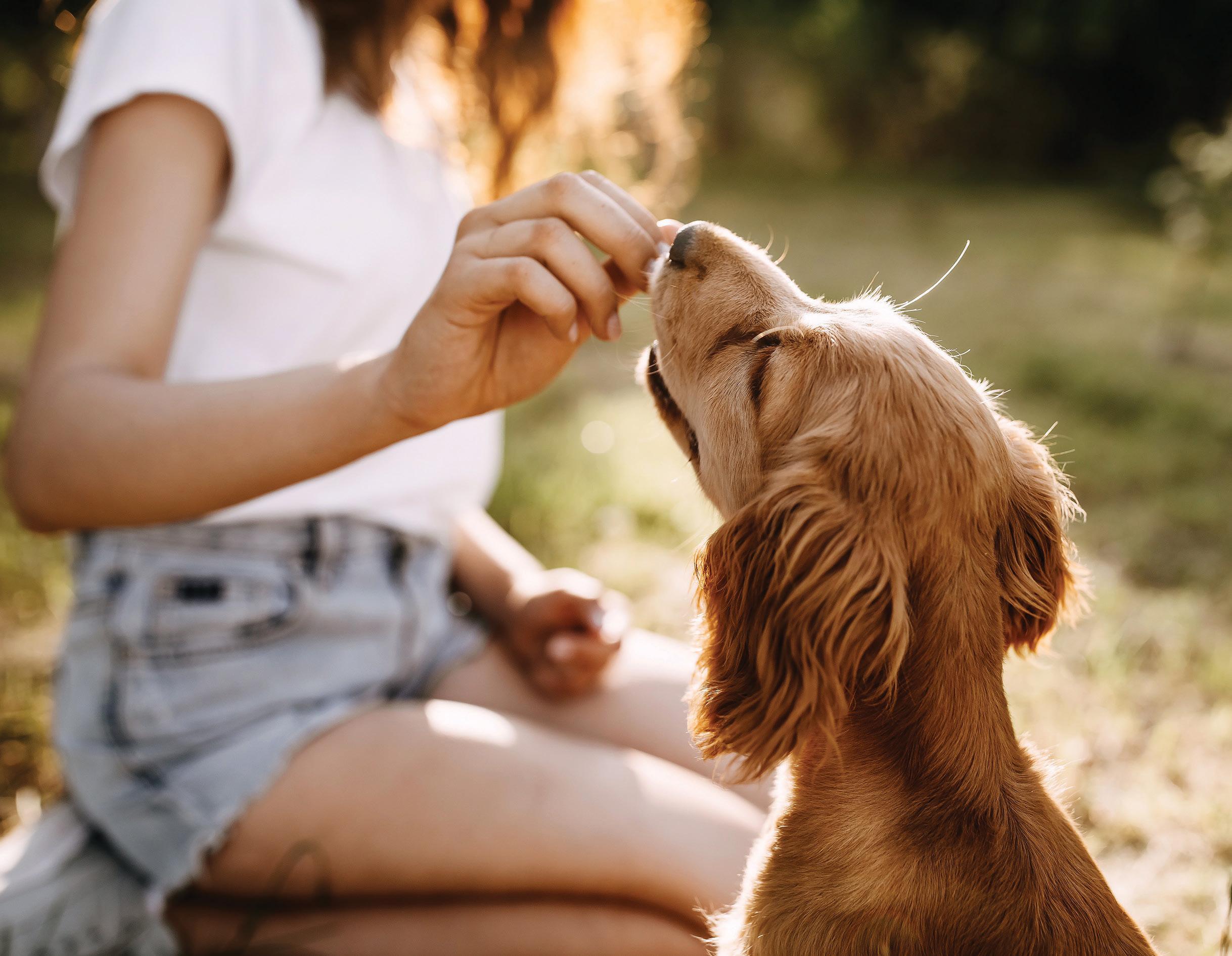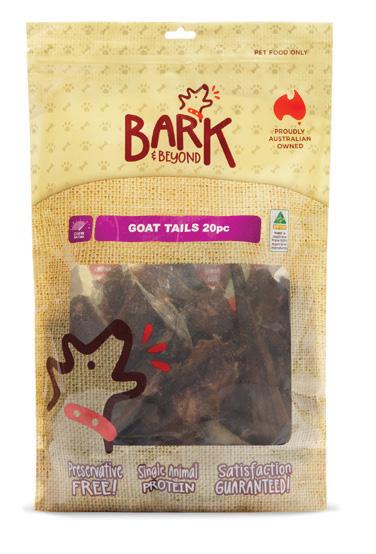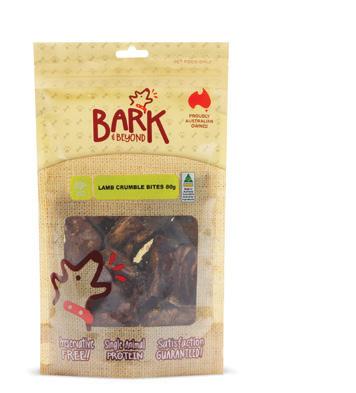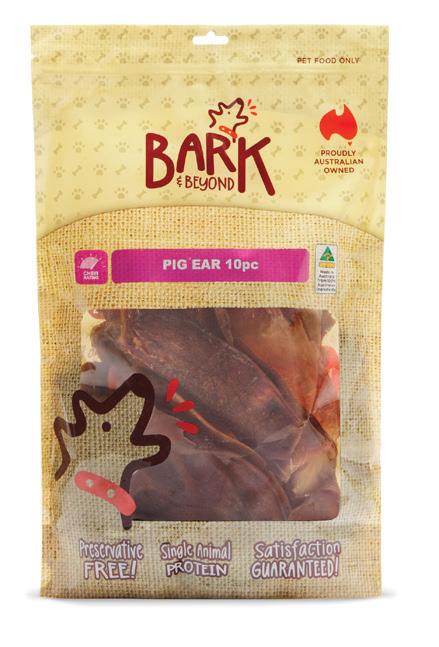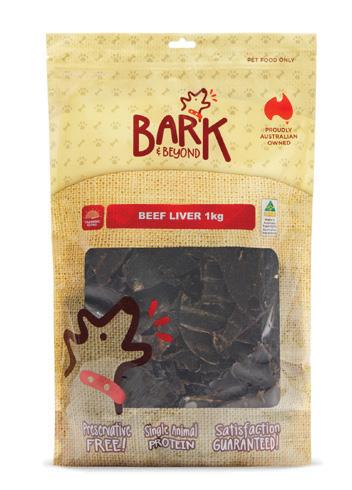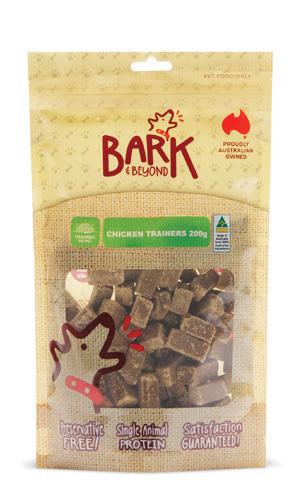






















REFLECTING ON the past year in the pet industry, there have been highs and lows, as our supply chains remain impacted, we work to improve the lives of our incredibly hard-working veterinarians, and pet retailers continue to evolve in a thriving industry.
Within these pages you’ll find our inaugural Industry Leaders Forum, filled with stories from leaders across the industry, describing how they balanced the highs and lows of the past 12 months, and how they plan to put their best paw forward in 2023. It’s inspiring to hear how so many businesses have seen adversity as opportunity and have expanded and transformed to be well positioned for success in the year ahead. For me, this shows that in the pet industry, there’s a wellknown saying that is ringing true – when the going gets tough, the tough get going.
With commentary from some of the biggest names across the industry, including retailers, wholesalers, suppliers and associations, this issue presents a well-rounded lesson in finding and capitalising on your strengths, and is an essential tool to help your business evolve in the best way in 2023.
This bumper issue doesn’t stop with the Industry Leaders Forum. What began as a dare at an open-mic comedy night has propelled animal trainer and comedian Emma Malik on a unique career path as ‘the world’s first and only animal training stand-up comedian’, which has seen her perform a parrot show for the King of Malaysia and a flash dance routine on Thailand’s Got Talent – this article is one not to be missed.
Also in this issue, Caroline Zambrano explores the animal healthcare opportunity. Pet healthcare is a hot topic for many pet parents, and here we learn how retailers are boosting sales with wellness products to keep pets healthy and happy. Meanwhile, Rachel White explores the A to Z of keeping reptiles as pets.
We’ve also got articles from Anthony Ramsey, President, PIAA; Bronwyn Orr, President, Australian Veterinary Association; Jared Patrick, President, AIAA; and Tim Calabria, Industry Analyst, IBISWorld.
As the year draws to a close, I’d like to take a moment to thank the team at Pet Industry News who have worked so hard to relaunch the publication with such a bang. A huge thanks goes to Thomas OakleyNewell, Leanne Hogbin, Rachel White, Elena Sabag, Safa de Valois, and of course Bob Croucher.
All the best for a prosperous 2023!
Cheers, Deb Jackson Associate PublisherPUBLISHED BY: Media pty LTd
C&I Media Pty Ltd A division of The Intermedia Group 41 Bridge Road (PO Box 55) Glebe NSW 2037 Australia Tel: 02 9660 2113 Fax: 02 9660 4419
Group Publisher & Commercial Director: Safa de Valois safa@c-store.com.au
Associate Publisher: Deborah Jackson d.jackson@c-store.com.au
Editorial Director: James Wells james@intermedia.com.au
Deputy Editor: Thomas Oakley-Newell tom@c-store.com.au
Journalist: Rachel White rwhite@c-store.com.au

Editor-at-Large: Bob Croucher
Head of Sales & Strategy: Elena Sabag esabag@petnews.com.au
Senior Designer: Leanne Hogbin leanne@intermedia.com.au
Pre-press: Tony Willson tony@intermedia.com.au
Production Manager: Jacqui Cooper jacqui@intermedia.com.au
The Intermedia Group takes its Corporate and Social Responsibilities seriously and is committed to reducing its impact on the environment. We continuously strive to improve our environmental performance and to initiate additional CSR based projects and activities.
As part of our company policy we ensure that the products and services used in the manufacture of this magazine are sourced from environmentally responsible suppliers. This magazine has been printed on paper produced from sustainably sourced wood and pulp fibre and is accredited under PEFC chain of custody.
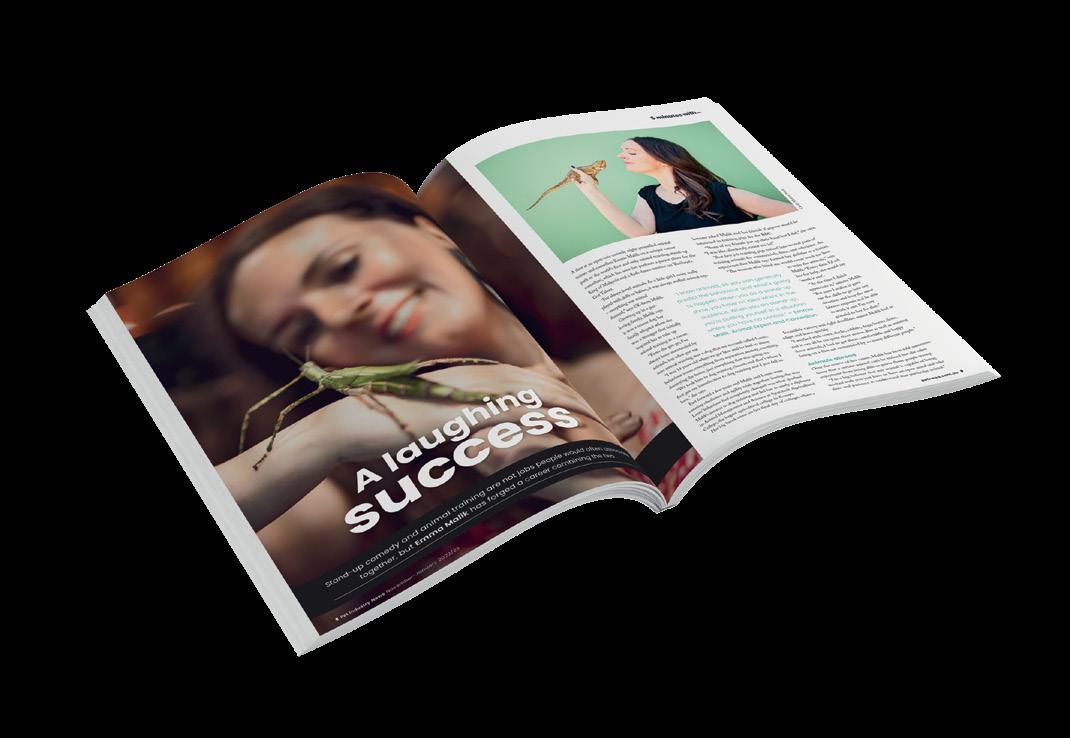
PEFC certified wood and paper products come from environmentally appropriate, socially beneficial and economically viable management of forests.
The wrapping used in the delivery process of this magazine is 100% recyclable.
This publication is published by C&I Media Pty Ltd (the “Publisher”). Materials in this publication have been created by a variety of different entities and, to the extent permitted by law, the Publisher accepts no liability for materials created by others. All materials should be considered protected by Australian and international intellectual property laws. Unless you are authorised by law or the copyright owner to do so, you may not copy any of the materials.
The mention of a product or service, person or company in this publication does not indicate the Publisher’s endorsement. The views expressed in this publication do not necessarily represent the opinion of the Publisher, its agents, company officers or employees. Any use of the information contained in this publication is at the sole risk of the person using that information. The user should make independent enquiries as to the accuracy of the information before relying on that information.
All express or implied terms, conditions, warranties, statements, assurances and representations in relation to the Publisher, its publications and its services are expressly excluded save for those conditions and warranties which must be implied under the laws of any State of Australia or the provisions of Division 2 of Part V of the Trade Practices Act 1974 and any statutory modification or re-enactment thereof. To the extent permitted by law, the Publisher will not be liable for any damages including special, exemplary, punitive or consequential damages (including but not limited to economic loss or loss of profit or revenue or loss of opportunity) or indirect loss or damage of any kind arising in contract, tort or otherwise, even if advised of the possibility of such loss of profits or damages. While we use our best endeavours to ensure accuracy of the materials we create, to the extent permitted by law, the Publisher excludes all liability for loss resulting from any inaccuracies or false or misleading statements that may appear in this publication.





Regulars 8 5 Minutes With…
Emma Malik – the world’s only animal trainer and stand-up comedian
Industry Spotlight
Tails Pet Centre, Tea Tree Gully, South Australia
What’s New? The latest brand news and promotions.
The latest news affecting Australia’s pet industry
Advanced Pet Care Finding an affordable point of difference
Forum
Animal Care Australia Uniting for a common cause
Aquarium Industry Association of Australia Navigating the murky waters of bureaucracy
Australian Cat Federation Australian cats on the world stage
Australian Herpetological Society Working towards a modernised approach to reptile keeping
Australian Veterinary Association Work to be done in improving the lives of veterinarians
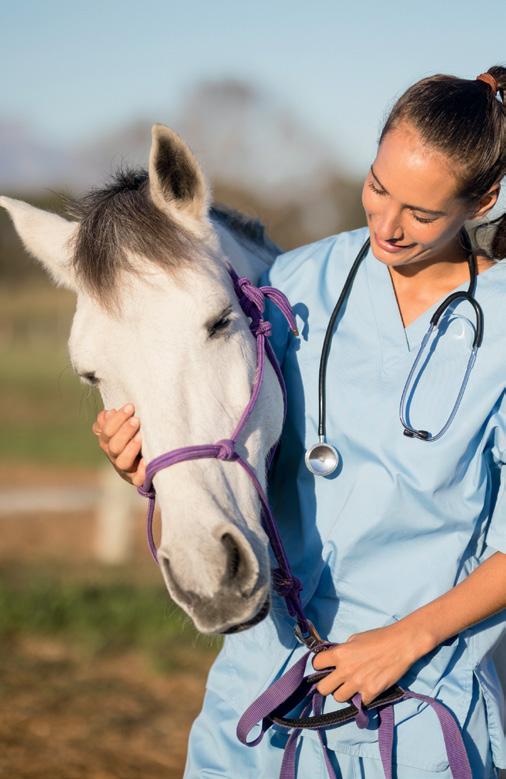
Bark and Beyond
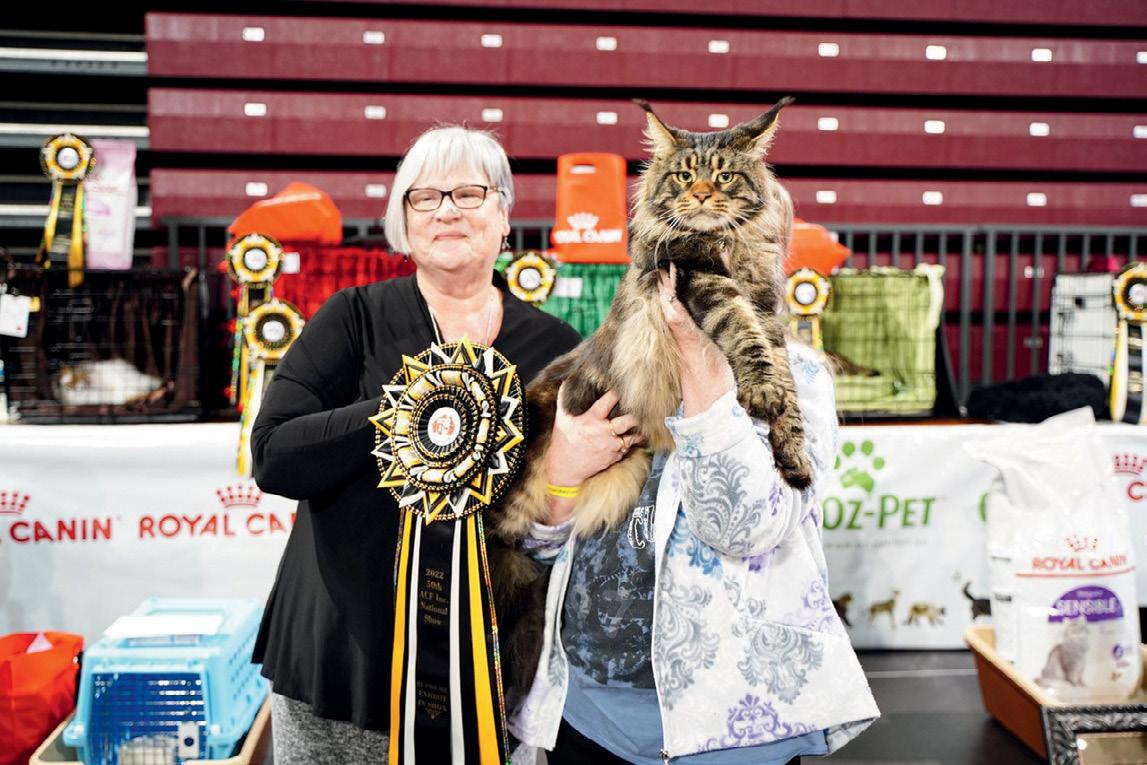
Providing better choices for pets and owners

Dogs Australia
Building a better future for dogs and their owners
EAC Animal Care Education and science key to success
The lifeblood of the pet industry
Pet Pacific Continued growth in the face of adversity
Regulation is key in ensuring pet food safety
Pet Industry Association of Australia
Refreshed, revitalised, and ready to go
Poseidon Animal Health Poseidon is leading a gut-health revolution
Proviro Group
No slowing down for Proviro Group
Science-based animal welfare remains the priority Features
Healthy Pets
The healthcare opportunity
Reptilian Rules

The A to Z of keeping reptiles as pets
Pet Industry Association of Australia
The PIAA is continuing its work to protect and grow Australia’s pet industry
Australian Veterinary Association Supporting our rural and regional communities
Aquarium Industry Association of Australia
Keeping abreast of relevant issues that impact the aquarium industry in Australia
The importance of dietary fat
Dietary fats are important for dogs and cats just as they are for humans
The history of the Pet Industry Association of Australia
A look back at why the association was formed and some of its significant achievements
Responsible breeding
Dr Harry Cooper examines the importance of responsible breeding practices
Big business sinks its claws into pet parenting and premiumisation
Roundtable Discussion: Puppy Farm Fiasco
A look at the effect the recommendations could have on the industry
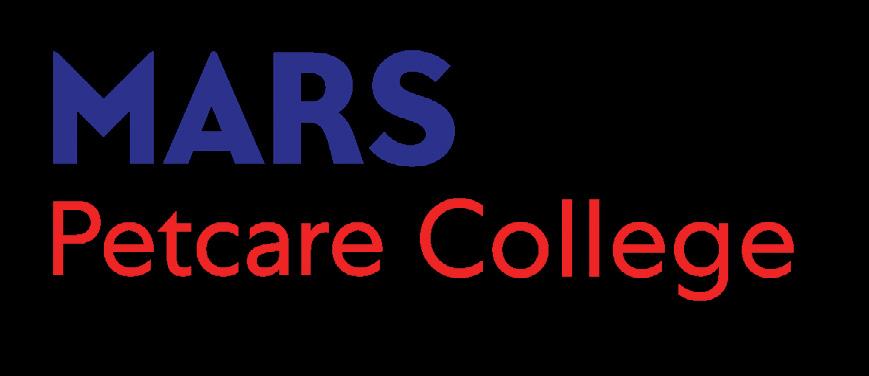
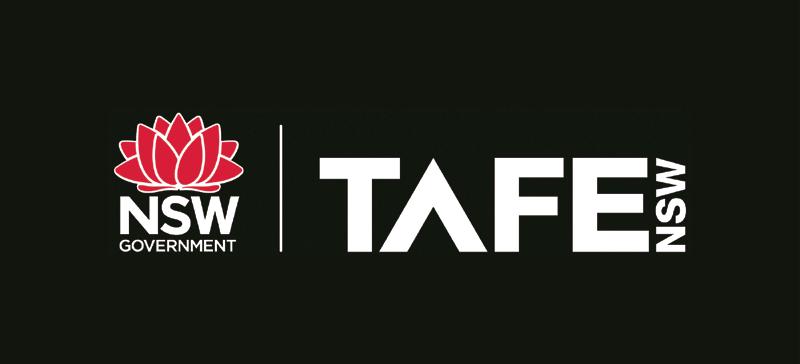
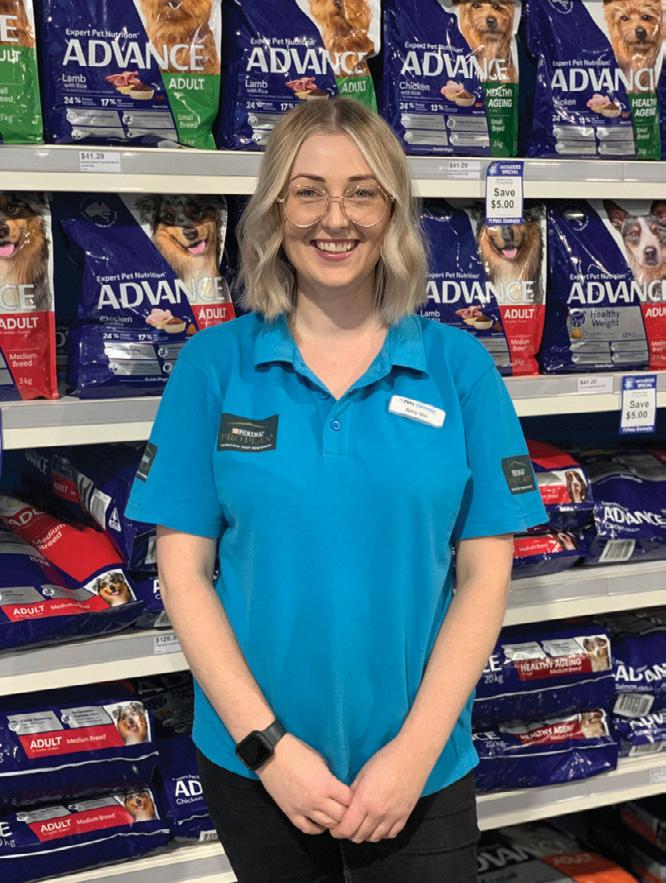

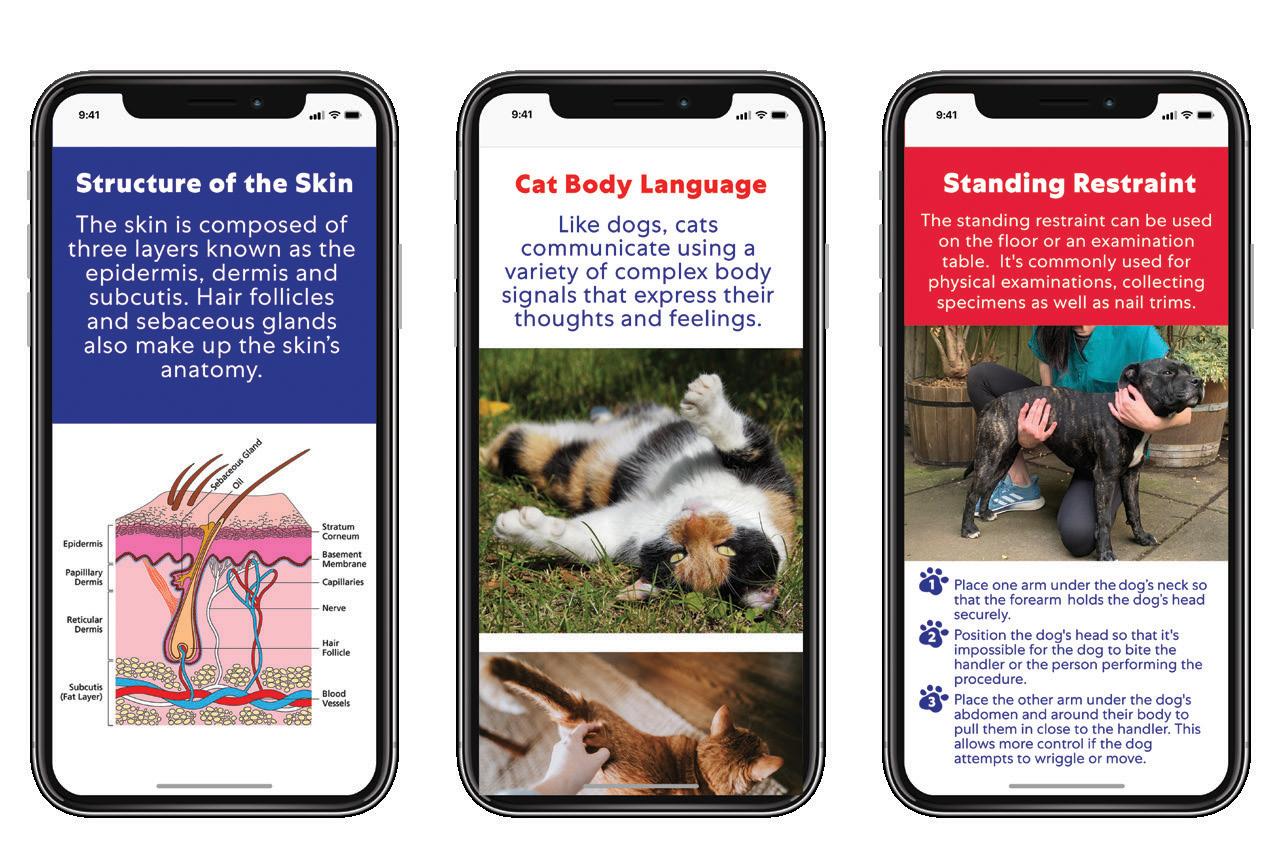


Stand-up comedy and animal training are not jobs people would often associate together, but Emma Malik has forged a career combining the two.
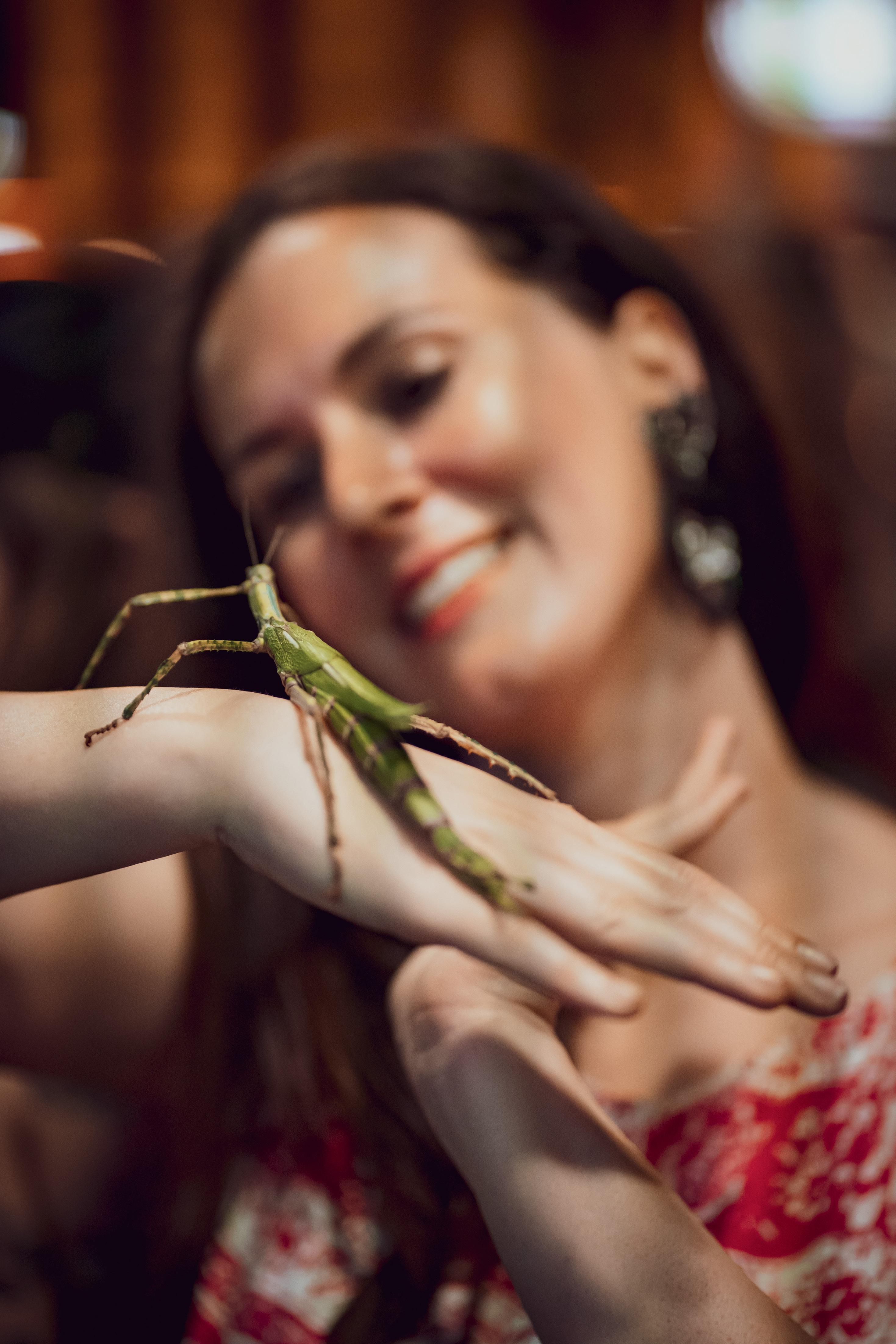
A dare at an open-mic comedy night propelled animal trainer and comedian Emma Malik on a unique career path as ‘the world’s first and only animal training stand-up comedian’, which has seen her perform a parrot show for the King of Malaysia and a flash dance routine on Thailand’s Got Talent.


“I’ve always loved animals. As a little girl I never really played with dolls or babies, it was always stuffed animal toys – everything was animal themed,” says UK-born Malik.
Growing up in a petloving family, Malik says it was a rescue dog her family adopted when she was a teenager that initially inspired her to take up animal training as a career.
“From the get-go, I’ve always been surrounded by animals, but what got me into animal training was a dog that we rescued called Louis.
lecturer asked Malik and her friends if anyone would be interested in training pigs for the BBC.
“None of my friends put up their hand but I did,” she says. “I was like, absolutely, count me in!”
That first job training pigs turned into several years of training animals for commercials, films, and television. An experience that Malik says formed her abilities as a trainer.
“The woman who hired me would never teach me how to train the animals,” says Malik. “Every time I’d ask her for help, she would say ‘work it out’.
“I know animals, so you can generally predict the behaviour and what’s going to happen. When you do a stand-up show, you have no idea who’s in the audience. When you do stand-up, you’re putting yourself in a situation where you have no control.”
– Emma Malik, Animal Expert and Comedian
“I was 14 years old when we got him and he had so many behaviour issues, everything from separation anxiety, reactivity, destroying the house, just everything that was going on.
“We took him to dog training classes, and that’s when I first got my introduction to dog training and I just fell in love,” she says.
Fast forward a few years and Malik and Louis were entering obedience and agility trials together. Seeing the way Louis’ behaviour had completely changed was what sparked Malik’s interest in dog training and led her to study a diploma in Animal Management and Science at Sparsholt Agricultural College, the largest agricultural college in Europe.
Her big break came on her final day of college, when a
“At the time I didn’t appreciate it,” admits Malik. “But now I realise it gave me the skills to go into any situation and hear the most bizarre requests and be able to work it out. I’m very grateful to her for that.”
Incredible variety and tight deadlines meant Malik had to adapt and learn quickly.
“I worked with cows, ducks, rabbits, dogs, horses, lions, and it can all be on quite short notice. But as well as training these animals, I had to get them comfortable and happy being on a film set surrounded by so many different people.”
Over the course of her career, Malik has been told numerous times that a certain animal can’t be trained but she takes enjoyment from being able to prove those people wrong.
“I’m a big believer that any animal is capable of being worked with, you just have to have an open mind and take time and patience to understand that particular animal.”
Credit Monica PronkThis time, patience, and dedication to her craft has allowed Malik to visit incredible places and hold audiences with interesting characters, such as the time she performed a parrot show for the King of Malaysia and two of his three wives.
“One of the tricks we perform is that we have a parrot retrieve money from someone’s hand. It’s kind of a standard trick at bird shows where an audience member will hold their arm out with some money in their hand and the bird will fly down, take the money, and take it back to the handler.
“I asked the king; would you like to do this? He said yes and pulled out this wad of money, the highest denomination they have in Malaysia, so I sent the bird down and it grabbed it, flew off, and ripped it up.”
Surviving that encounter, Malik later appeared on the first season of Thailand’s Got Talent where she was asked to bring along her freshly trained parrots and perform a ‘sporty routine’.
“I’m not a very sporty person, so I turned it into Flash Dance. I had 80s workout gear on, such as legwarmers, which are very hard to find in Thailand, and had a lot of fun with it. We were never going to win, but it was a lot of fun.”
More recently, Malik has been helping people with their pets, which she hasn’t worked with for quite some time, as she has been mostly working with zoos and aquariums.

“It’s really rewarding for me to help owners especially because of the increase
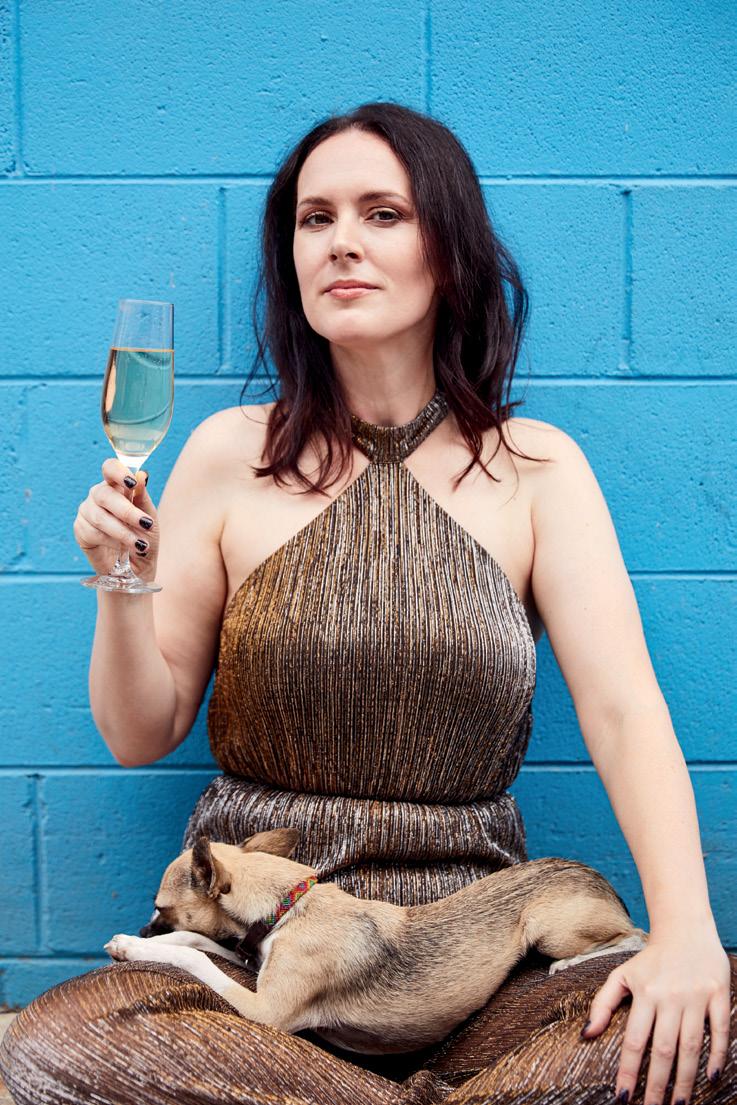
The stand-up aspect of Malik’s career came one night at a comedy club, when one of her friends dared her to perform at an open-mic night, where she performed five minutes of material.
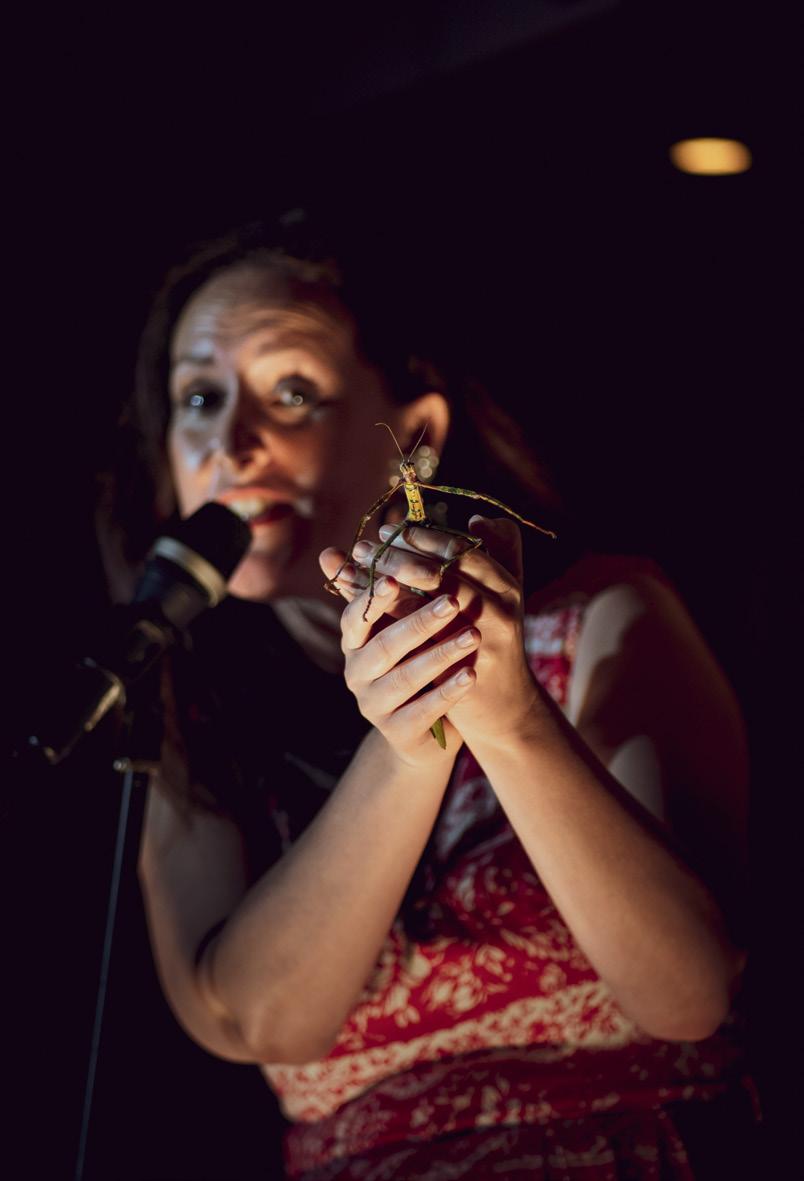
“After the show, a few of the comics came up to me and asked if I’d like to do a few gigs with them. It became a nice social hobby just meeting people. Then I started getting paid to do it, then I got signed by a manager, then I started doing solo shows, then I started doing television, then I toured the country. And now it’s become a career, which is crazy, I never thought this is what I’d be doing.”
Malik used her animal training skills to create a unique show, which features her dogs, Susan the goliath stick insect, and a goldfish.
“They’re the only ones I bring on stage at the moment. They have become characters in my show, so it’s more like a double act.”
Despite having been inside a shark tank, Malik says that stand-up is the scarier of the two.
“I know animals, so you can generally predict the behaviour and what’s going to happen. When you do a stand-up show, you have no idea who’s in the audience. You don’t know what they’re thinking, what kind of day they’ve been having. When you do stand-up, you’re putting yourself in a situation where you have no control.
“With animals, I’m not saying you have control, but when you’ve been doing it for as long as I have you can kind of read the behaviour of the situation and play out what’s going to happen. Whereas when you step on that stage for a set, you’re in unknown territory. At least for the first 30 seconds.” n
in pet ownership in the pandemic and the behaviour problems that have occurred with that.”

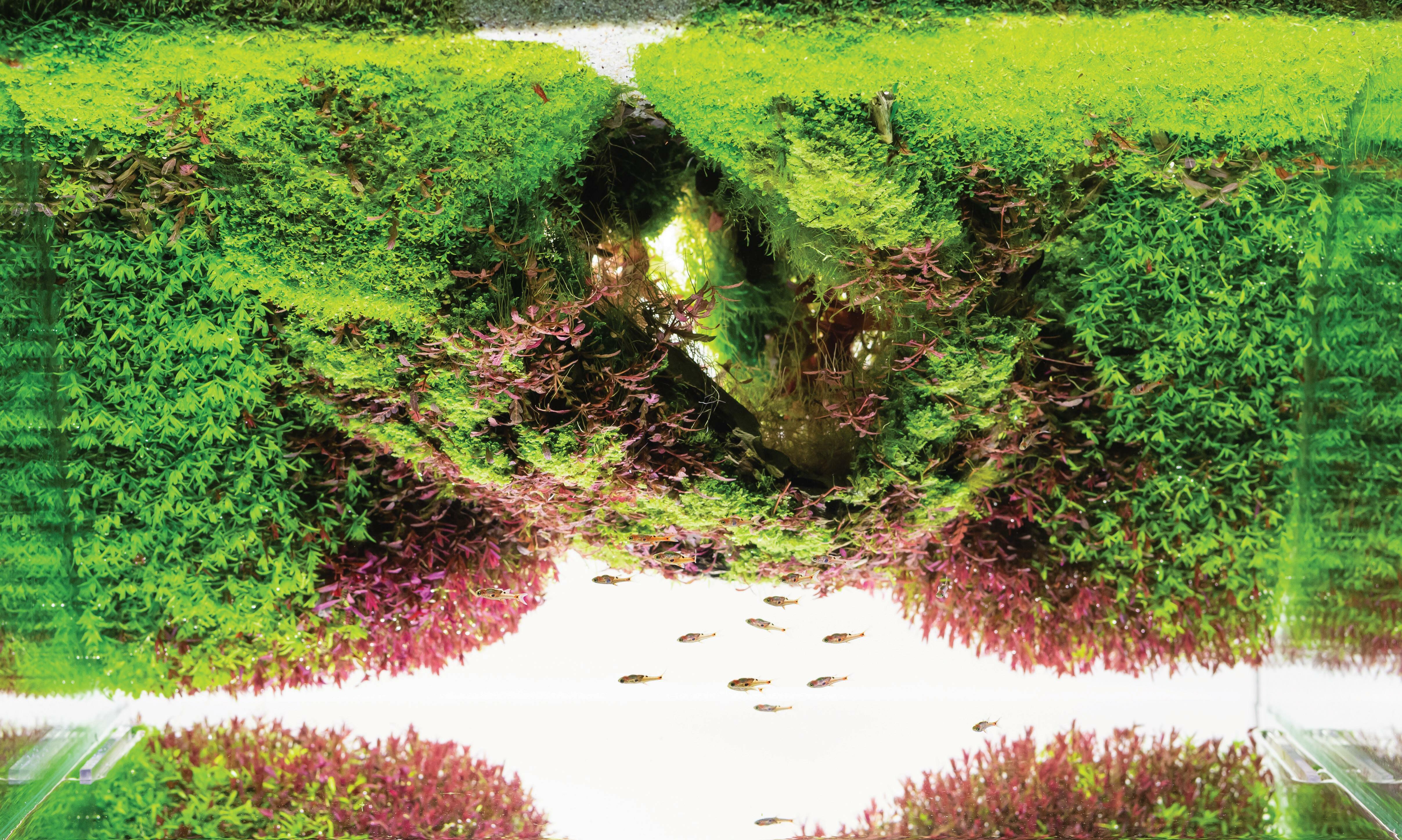

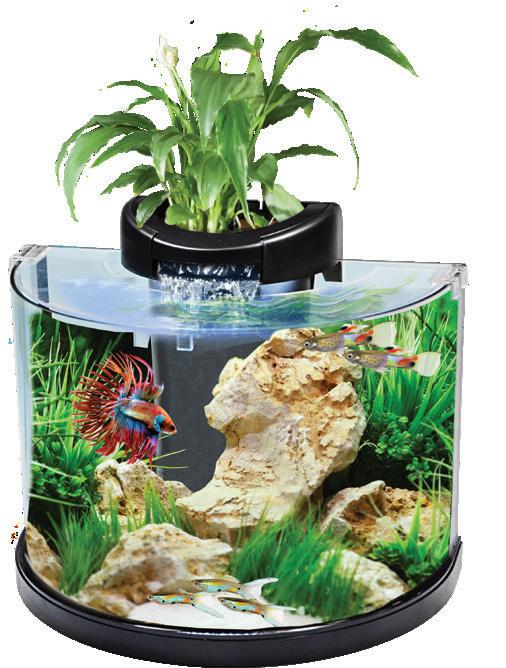


WHEN HANS and Gail Petiet purchased Tails Pet Centre in Tea Tree Gully, South Australia, it was 2008 and in the midst of the Global Financial Crisis. With neither having experience in the pet industry before, the couple performed an extraordinary job to not just keep the business afloat but to continue to grow it.

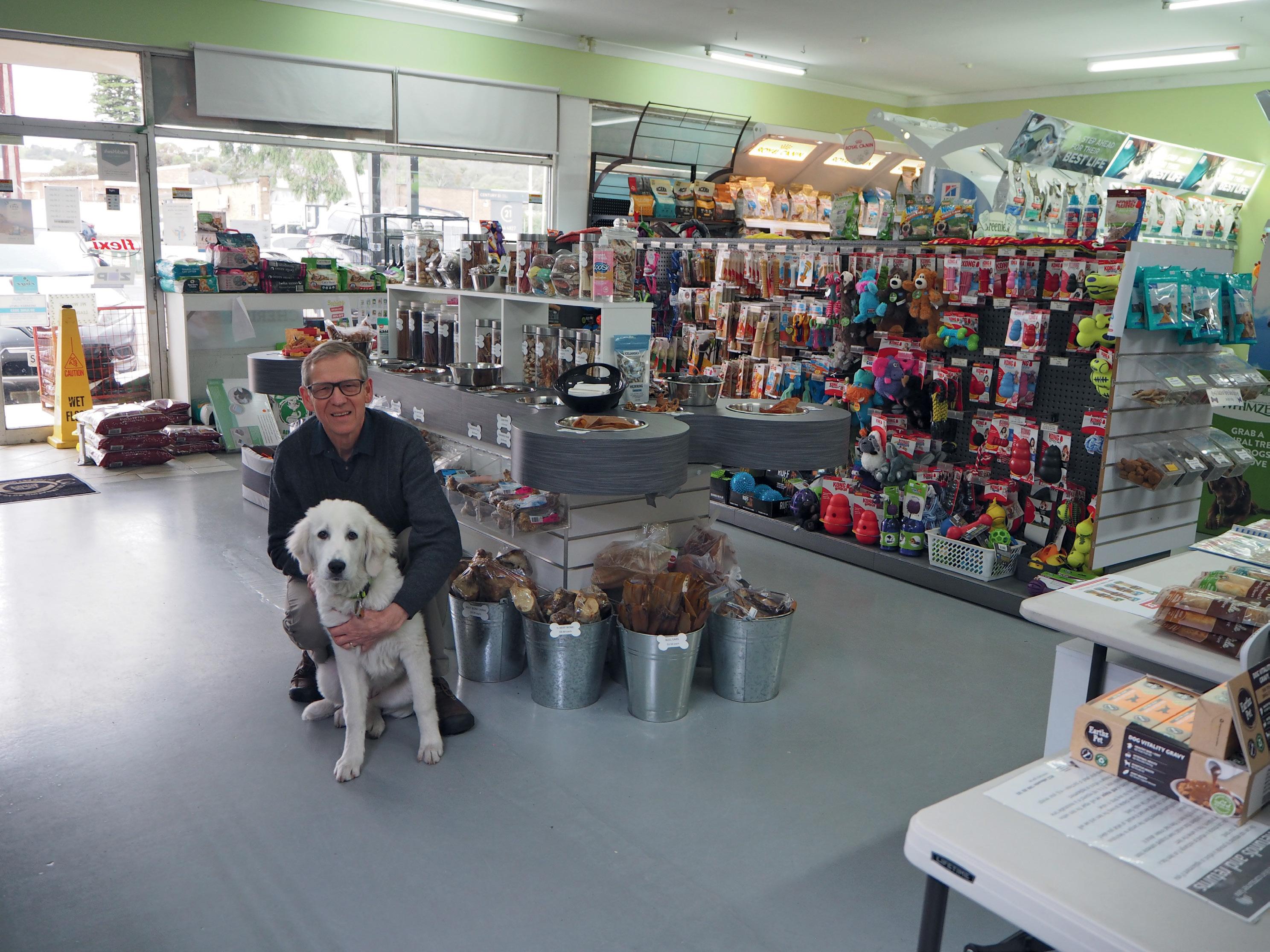
“We came in green, as I had come from a trade background in stone masonry and Gail as a legal secretary. Looking back, having purchased the businesses in the early days of the GFC, we are amazed in our gumption to press ahead with such an endeavour during those uncertain economic times,” explained Hans Petiet.
It did not take long before they had outgrown their available space, due to an increase in range and stock holding, which called for complete reconfigurations of the store.
“One of the major changes was building an extension of the showroom into the warehouse section, and moving all the aquariums with the related food, accessories etc into the new room aptly named ‘The Fish Room’.”
Part of the premises has a large warehouse section in which they were able to place two shipping containers to store stock. As part of this development, came the need to purchase a forklift truck to help with stock handling to ensure they were well placed to cater for their customers’ needs.
Customer and staff happiness is the secret behind the success of Tails Pet Centre in South Australia.
Words Thomas Oakley-NewellHans Petit, Owner of Tails Pet Centre in the Tea Tree Gully, South Australia
“In the 14 years we have run the store we have made many improvements and changes. Our yearly turnover has increased dramatically since we have run the store, with our customer base and stock holding growing exponentially.”
Utilising space is paramount to Tails Pet Centre, and by redesigning the layout of the store they have improved their customer experience and increased sales.



“Two of the improvements we have implemented are to design and build a new counter with two tills to accommodate the increase in patronage. This has been moved further into the store to give a more balanced and inclusive feel to the shopping experience.
“Another addition is the construction of our ‘treat bar’ which has been made in the shape of a dog bone and has been a point of interest with our customers.
“Dog and cat food are positioned to the left of the store when customers walk in, and accessories and treats are towards the centre of the shopping area with bird, cat, and small animal items in the other areas of the store. We also had a room where we removed part of the wall to make entry easier and this room contains our chillers and freezers for cold and frozen foods.”
Tails Pet Centre always tries to differentiate itself from competition by stocking not only the main brands, but also unique offerings.
“We stock all the major quality and popular food brands. When it comes to accessories we try and range items that have a point of difference. Some of the lower priced items available tend to be in many of the corporate big box stores and are heavily discounted. I have aimed to range more unique products for this reason in a bid to make us stand out and a place where customers feel the experience is unique.”
Petiet says the experience they look to give their customers is one that makes shopping as relaxing as possible and they aim to make the occasion memorable, as they are shopping for a family member after all.
“Most, if not all, customers who walk in our door are coming in to purchase something for the animal they love, so for them it is a feel good experience. This makes the interaction with the customer a great experience.”
– Hans Petiet, Owner, Tails Pet Centre
Just over five years ago, disaster struck when Hans Petiet was involved in a cycling accident which resulted in severe injuries and a traumatic brain injury (TBI). Having to spend an extended period in hospital and unable to run the business, the Tails Pet Centre staff stepped up.
“My amazing staff stepped up and took over, keeping everything going, to which I am eternally grateful. It has reinforced in me the need to have staff who enjoy the working environment, but also are passionate about the industry.”
That passion for the industry transcends to the enjoyment the customer experiences in-store, and one of the main pleasures Petiet receives is his interaction with those customers.
“Most if not all customers who walk in our door are coming in to purchase something for the animal they love, so for them it is a feel good experience. This makes the interaction with the customer a great experience. This has always been the case and is one of the reasons I enjoy working so much in this industry.”
Aside from the improvement in-store, Tails Pet Centre has been working on a functional website.

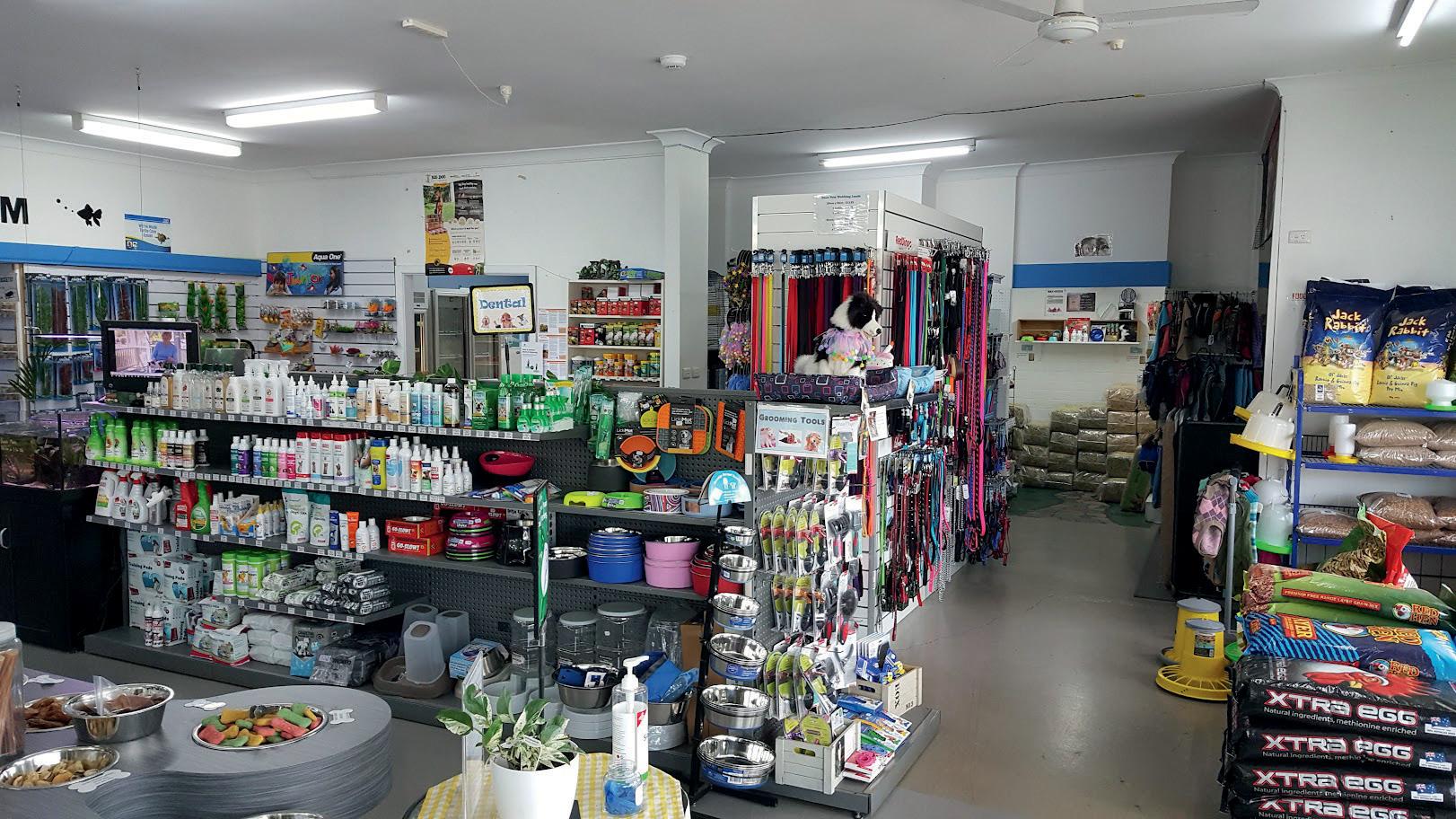
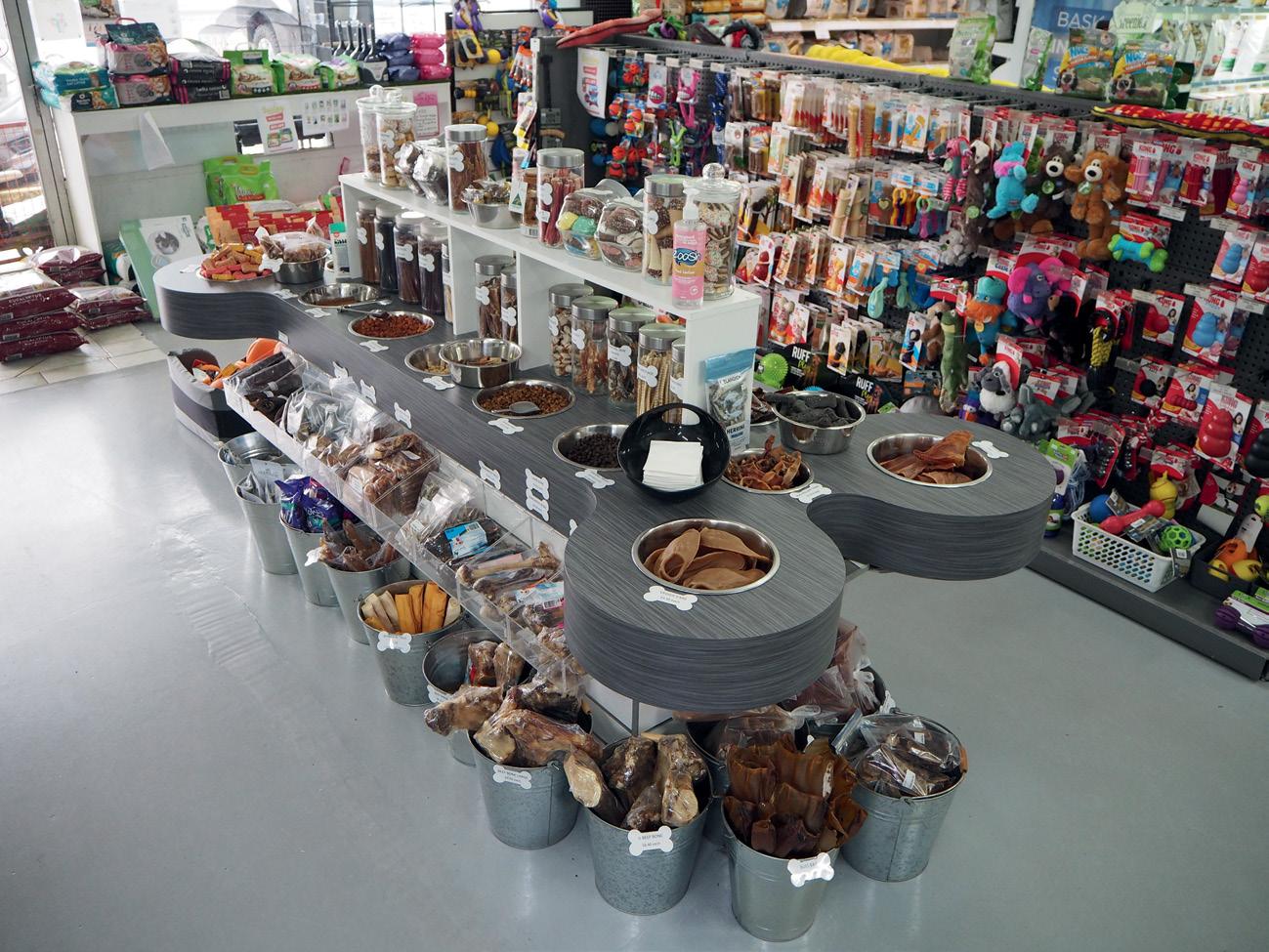
“Our website was built many years ago, but a couple of years
– Hans Petiet, Owner, Tails Pet Centre
back we had it rebuilt with the ability for us to add content. One of the areas we concentrated on was the FAQ page, which we called our ‘Knowledge Centre’.”
Petiet was advised to only have a few points on the FAQ page but decided to do the opposite and make it a go-to page with a variety of information for pet owners.
“My idea is to have it as a reference for adults and children to glean information for school projects as well as functioning as a FAQ page.”
The emergence of corporate stores matched with an online presence means Tails Pet Centre needs to constantly update in order to stay relevant.
“I see a need to constantly renew the store to make it a goto place for my customers, not only in appearance to enhance the shopping experience, but also to be a value for money place to shop.” n
“My amazing staff stepped up and took over, keeping everything going, to which I am eternally grateful. It has reinforced in me the need to have staff who enjoy the working environment, but also are passionate about the industry.”
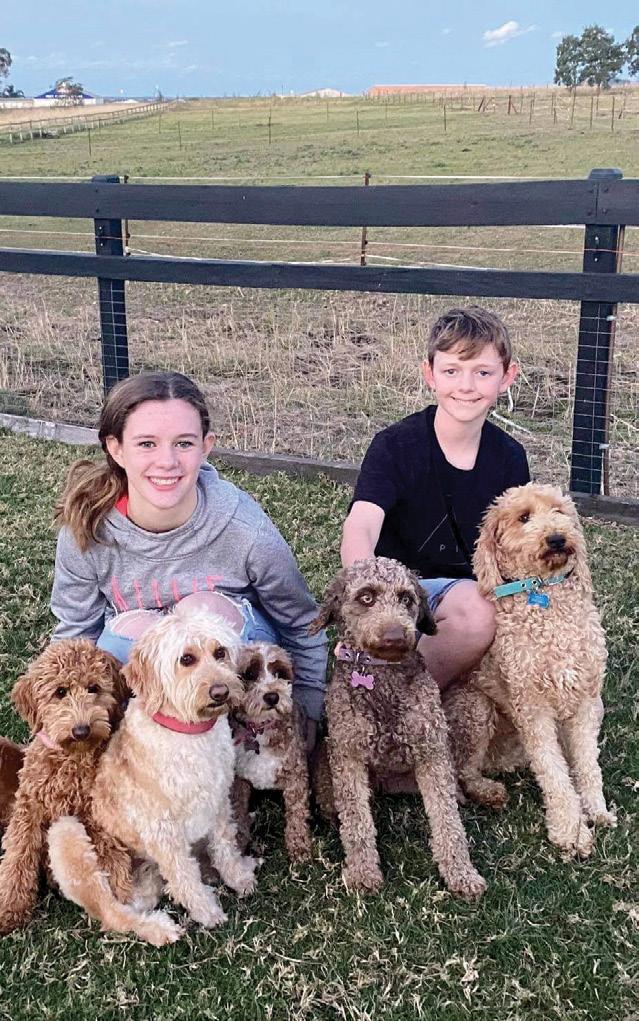


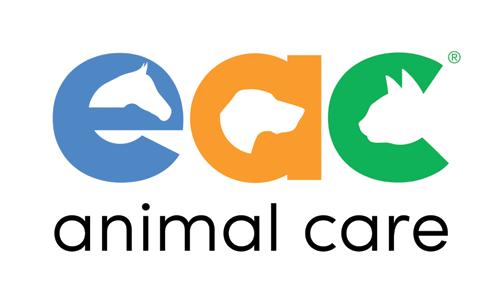

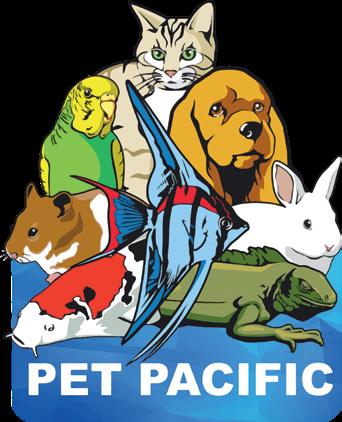

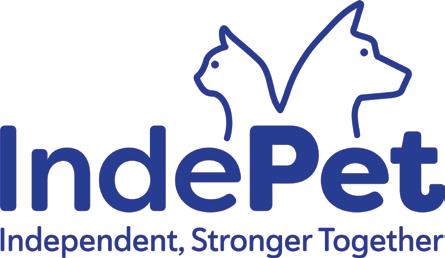
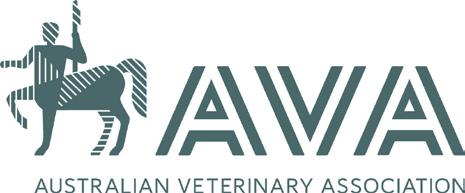
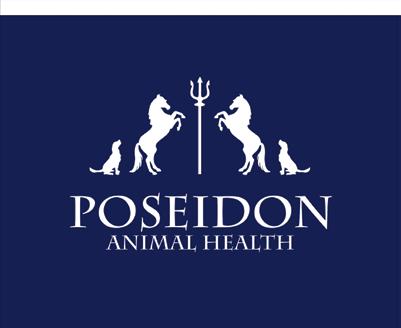


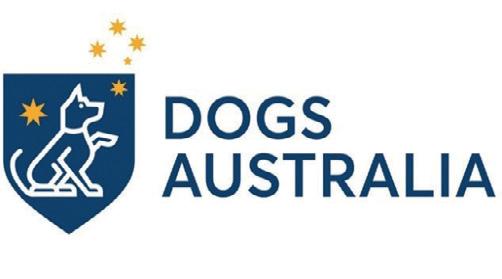
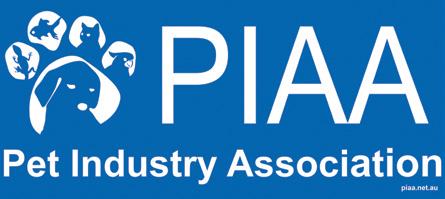
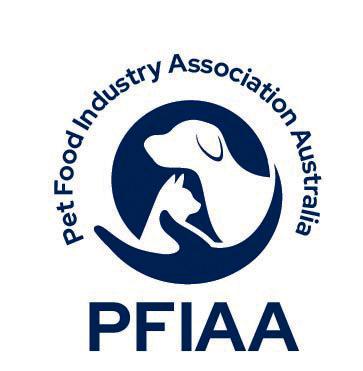
Identifying market trends and maintaining an affordable price point amidst rising costs of living was all part of the process in Advanced Pet Care’s latest release, says Scott Shepherd, National Sales Manager, Advanced Pet Care.
Words Thomas Oakley-Newell
WHILE ADVANCED Pet Care may have launched three years ago, the impacts of Covid and global freight and availability have affected the impact the company would have liked to have made, but National Sales Manager, Scott Shepherd is hoping that is all set to change following the launch of its scientific pet food –Cherish Pet Food.
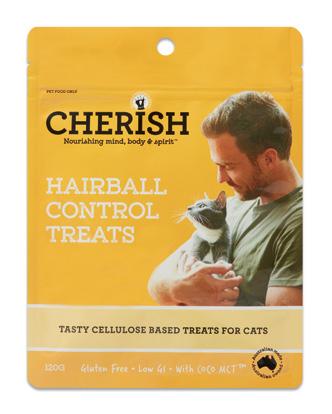
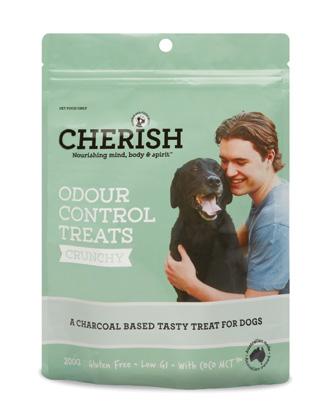
“We have launched a number of scientific functional products such as our range of treats; an odour control treat for dogs and a hairball control treat for cats. Both products have scientifically proven active ingredients to assist in the overall wellbeing of your companion animal. We have also released our Playful Puppy Small Bites and we are just about to release our Small Bites option in canine Amazing Adult and Mindful Mature.”
The ability to be able to release this range in such tumultuous times is a credit to Advanced Pet Care’s many years of hard work building a list of strong supply chains in Australia.
“This has meant that we were able to adapt where necessary while not compromising on quality and supply to our customers with their product.”
While the economy may prove an additional challenge in the growth of the business, Shepherd says Cherish Pet Food’s relatively competitive price point will allow the brand to succeed.
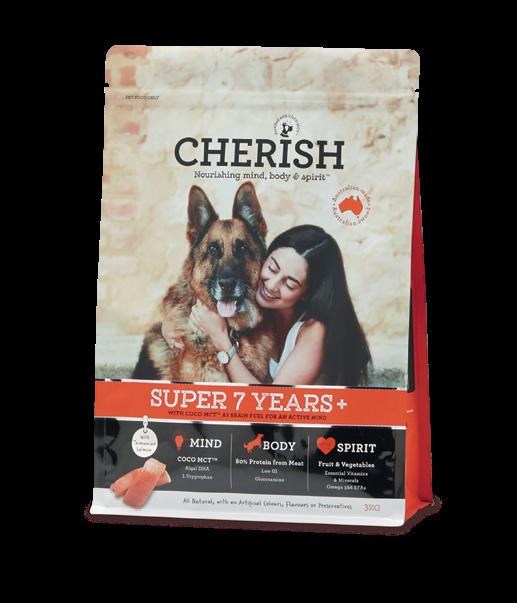
“With cost of living rising, interest rates increasing, and household discretionary spend decreasing, Cherish Pet Food provides an extremely affordable alternative to the other scientific brands in the market. Add to that, buying Cherish Pet Food supports Australian farmers,

Australian manufacturing and keeping profits and jobs here in Australia – it is supporting our economy from the paddock to your companion animal’s plate.”
Supporting Australian businesses is something Shepherd believes is important in maintaining a strong economy.
“We really need to support Australian companies to ensure we can get through this tough time with our economy in good shape. Listening to news and the financial sector, we could really be in for a tough couple of years.”

Investing in Australia’s economy is exactly what Advanced Pet Care has done, through making improvements to its production facility.
“Advanced Pet Care has significantly invested in enhancing our production facility, which has positioned us to meet the highest consumer expectations in the market while remaining affordable. We will also continue to play a major role in keeping Australia’s economy growing, by continuing to export large volumes of Australian made and farmed pet food to international markets.” n
“With cost of living rising, interest rates increasing, and household discretionary spend decreasing, Cherish Pet Food provides an extremely affordable alternative to the other scientific brands in the market.”
– Scott Shepherd, National Sales Manager, Advanced Pet Care
“The biggest trend we saw over the past 12 months was an increase in pet ownership. While trends have been increasing for some time for them to be family members and not pets, the pandemic certainly increased that significantly. Working from home meant we had the time to devote to an extra family member and lockdowns, especially in Victoria, created the need for companionship more than ever.”
What has been the biggest trend of the past year?
Animal Care Australia’s (ACA) small team of unpaid volunteers are making headway in changing legislation and policies surrounding pet ownership around the country, explains Michael Donnelly, President, ACA.
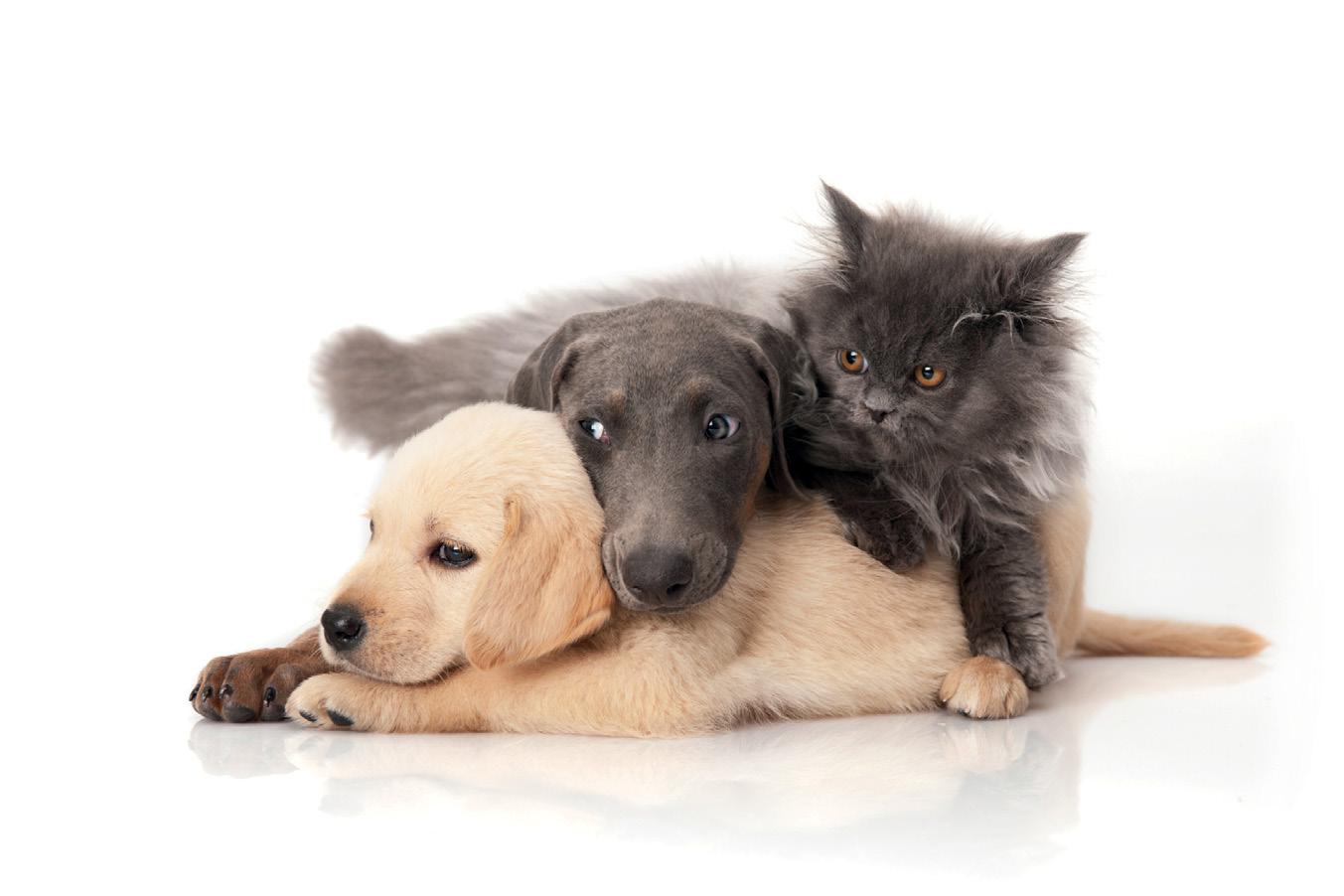 Words Thomas Oakley-Newell
Words Thomas Oakley-Newell
THE GROWTH of Animal Care Australia (ACA), through the creation of new subcommittees and expansion of its membership base, is helping ACA receive recognition from governments.
“ACA is now having direct input into legislative changes, such as animal welfare acts and regulations, native wildlife licensing reviews, and of huge relevance at the moment, recognition of animals as victims in domestic violence and pets in strata legislation.”
– Michael Donnelly, President, ACA

Michael Donnelly, President of ACA, said this recognition is reflective of the challenging work they put into ensuring its members and supporters’ voices are heard, and while it is extremely time consuming for the team, which are all unpaid volunteers, it is worthwhile when you see the results.
“ACA is now having direct input into legislative changes, such as animal welfare acts and regulations, native wildlife licensing reviews, and of huge relevance at the moment, recognition of animals as victims in domestic violence and pets in strata legislation. To see our recommendations appearing in legislation is mind blowing for us.”
Over the coming year, ACA will be looking at the animal welfare policies for the different parties leading up to the elections in both Victoria and NSW.
“We will then be connecting with successful politicians in order to ensure they are aware of who Animal Care Australia is, and what our animal welfare policies entail and how we can provide them with a stronger, sensible approach rather than listening to the advocates for animal rights. Most are unaware there is an enormous difference between animal welfare and animal rights until we approach them to set the record straight.”
“Animal Care Australia has grown. We have formed new subcommittees of volunteers to help keep pace with the ever-increasing workload. Our membership and supporter base continues to increase, and yet this still does not feel strong enough to take on the everincreasing rhetoric of animal rights extremists. Being a small team of unpaid volunteers is a huge challenge, and without substantial funding will remain so. Animal Care Australia would benefit from a kind, animal loving benefactor, with some funding support.”
As well as this, ACA will be focusing on legislative changes such as ensuring pets be allowed in strata.
“People must be able to keep their pets, especially in these economically challenging times. This one change will have such a massive knock-on effect, including fewer abandoned animals, greater mental health for the owners and of course the fact the animals benefit the most.”
Among the challenges that ACA faces, says Donnelly, are the animal rights policies that are hidden within animal welfare legislation which is happening across the country at all levels.
“Did you know one political party was updating its website daily during the lead-up to the Federal Election? Every time the true outcome of its policies was highlighted to the voters its website was updated.”
Regarding the much discussed Puppy Farming Bill, ACA would like to see an official definition of what a ‘puppy farm’ exactly is, as it currently has no legal definition and Donnelly claims that poses a huge problem.
“Ultimately ACA will continue to advocate that any breeder who does not place the welfare of their animals as a priority, and who intentionally ignores the legislated breeding standards should face the courts. We will also continue to support that improving animal welfare does not include restrictive caps or limited breeding.”
Donnelly believes that all animal owners should care about these issues, and that it is our voices that change the political playground and agenda as elected officials are accountable to us, but we need to engage with the issues to hold them to account.
“It would be great to see all the pet industry come together to fight common issues. Yes, I know it has been tried before, but at some point, we are going to find ourselves in the minority of social conscience and when we do – it will either be too late, or it will require a major pushback to overcome.” n
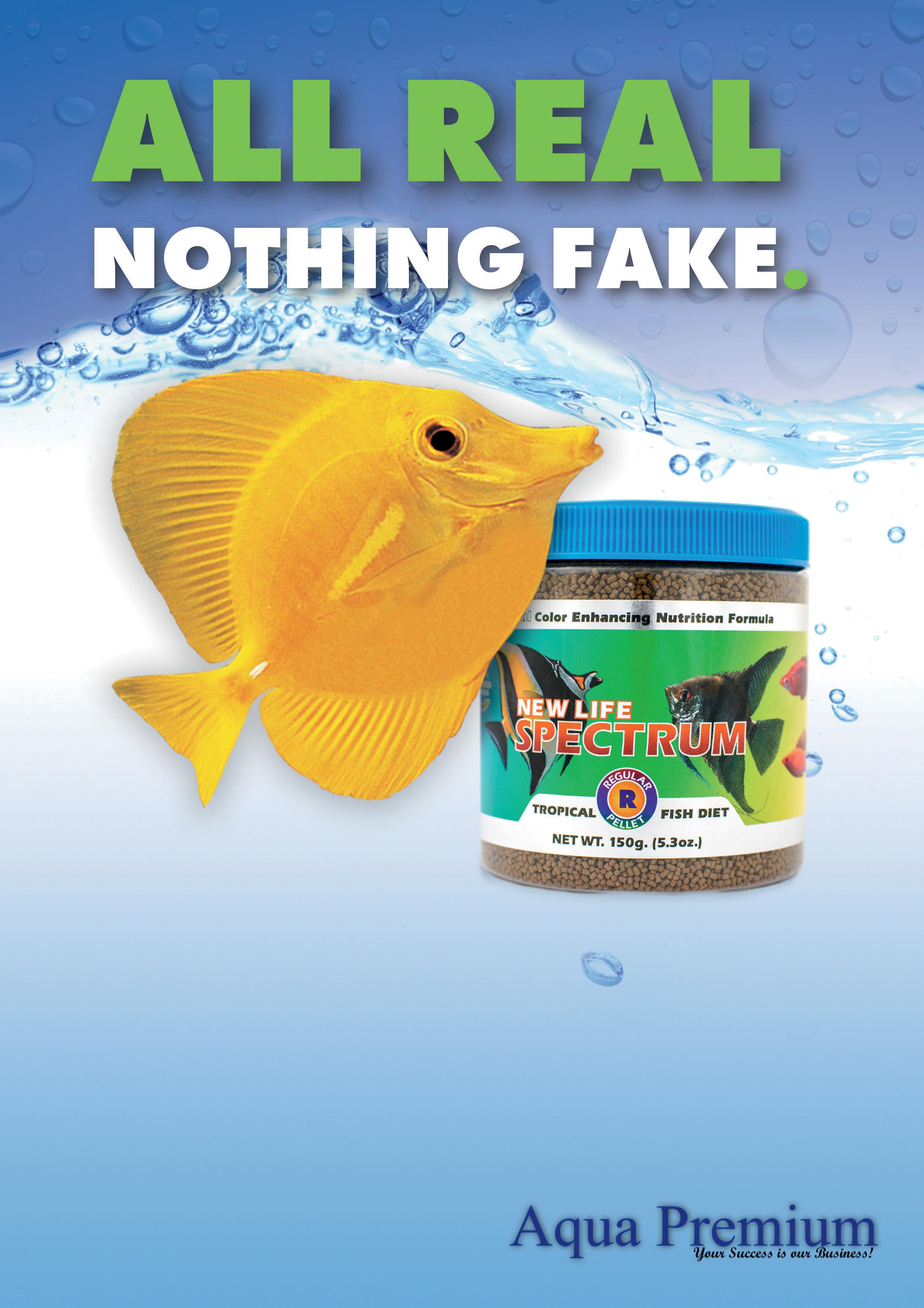
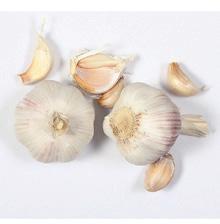


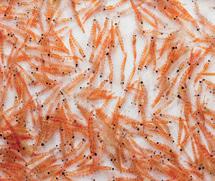
Covid brought many new and returning customers to the aquatic hobby, now the Aquarium Industry Association of Australia (AIAA) has its sights set on adding more species to the permitted import list, says Jared Patrick, President, AIAA.
Words Thomas Oakley-NewellTHE AQUATICS industry was more fortunate than many others during Covid, but with the pandemic now mostly in the rear-view mirror, there will be challenges to many in the industry as sales and demand tighten, and the Aquarium Industry Association of Australia (AIAA) will be there to help.
Jared Patrick, President of the AIAA, said that there have been a lot of new and returning customers into the aquatic hobby last year during the pandemic when many people were forced to stay home and adopt home-based hobbies.

“We service a great hobby with many consumers loving aquatic creatures. However, from a government and regulatory aspect, we are seen as somewhat risky due to the large national and international movement of many of the animals that we trade in.” – Jared Patrick, President, AIAA
“AIAA members have generally benefitted from this and have been able to offer good advice and service to these consumers. But now, there are additional pressures on the aquatic-keeping consumers as the costs of living rise and all business owners are aware of the cost pressures being faced from every direction when trying to manage a business.”
Patrick said while they are in a great industry, they are always very close to being over-regulated due to the inherent nature of the aquatic animals in which they trade.
“We service a great hobby with many consumers just loving the aquatic creatures we trade in. However, from a government and regulatory aspect, we are seen as somewhat risky due to the large national and international movement of many of the animals that we trade in. These regulatory challenges are not likely to go away and, if anything, will only get more restrictive.”
The AIAA has continued to provide strong advocacy and representation to government of all levels on behalf of its members and the aquarium industry in Australia, and Patrick believes it is important to continue working together for the benefit of the association’s members, the aquatic industry and the hobby.
“In the past year, the AIAA has specifically represented the Australian aquatics sector in three major areas. One; the work involved in trying to get nine new freshwater species on the allowable import list. Two; taking part in consultation with federal biosecurity working to get captive-bred marine fish able to be imported. Three; being a part of the working group advising the federal Vertebrate and Invertebrate Pet Committee on fish species kept by hobbyists in Australia.”
Looking to the year ahead, Patrick has identified a consumer trend towards smaller tanks, with smaller fish and shrimps.
The nine species of aquarium fish the AIAA would like added to the legal import list are: Red Line Torpedo Barbs, Galaxy Rasbora, Polkadot Loach, Redtail Blue Loach, Striated Loach, Skunk Loach, Emerald Tiger Rasbora, Featherfin Synodontis, and Histronica Loach.
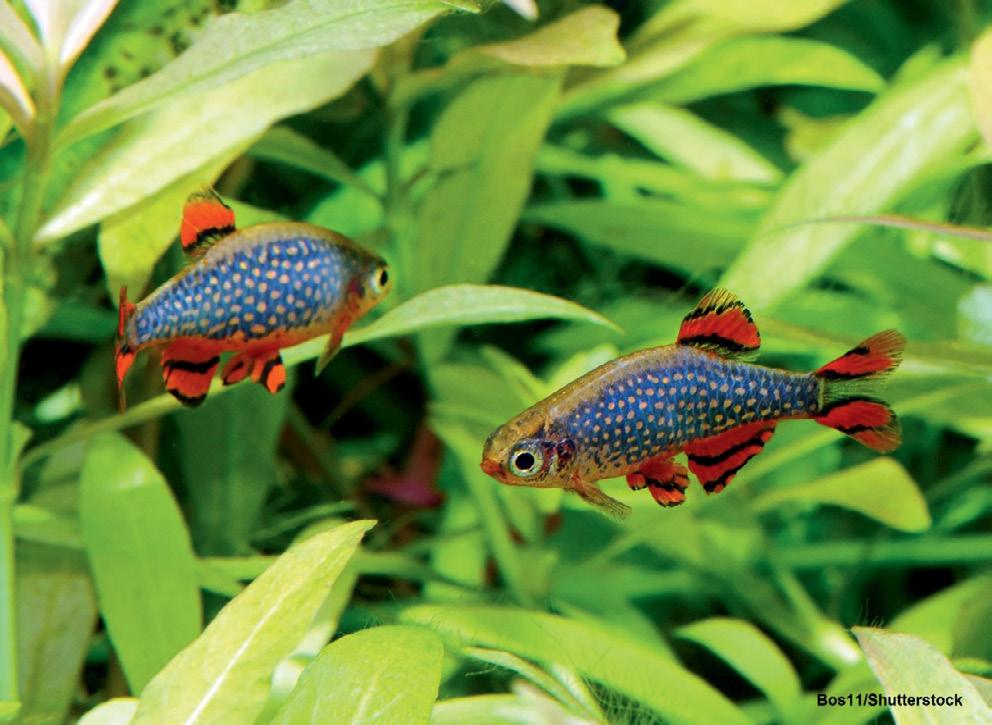
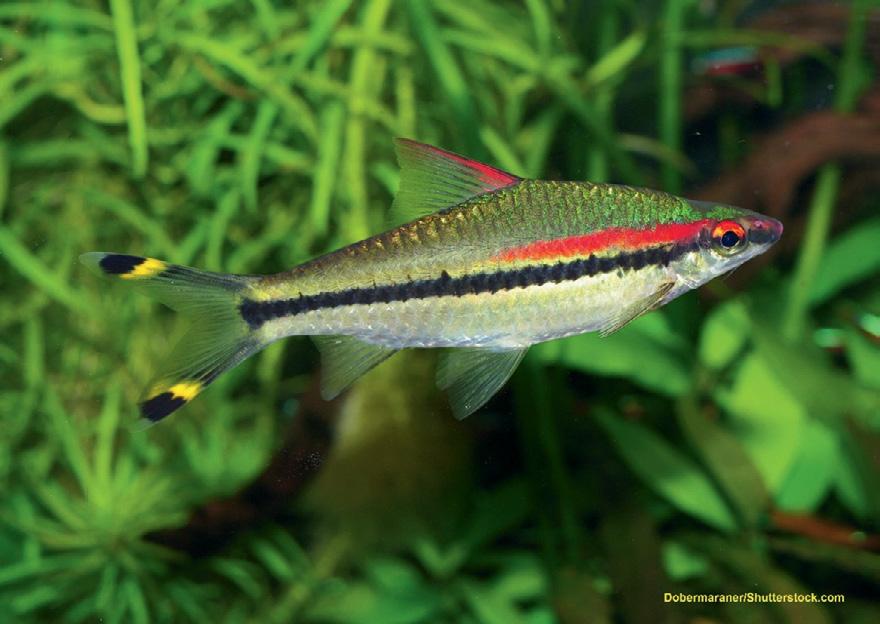
“There is a lot more interest in invertebrates such as shrimp, crayfish, and snails. Additionally, aquascaping, the keeping of underwater gardens is still on the rise. We expect these trends will continue.”
But for now, Patrick and AIAA’s immediate focus is on continuing to progress the applications to add more species onto the permitted import list. n
With the 2023 World Cat Congress taking place in Tasmania, the Australian Cat Federation (ACF) will have the opportunity to showcase its cats to the world, explains Judith Jordan, President, ACF.
Words Thomas Oakley-Newell
place on 9-13 June in Launceston, Tasmania, next year, and will provide the perfect opportunity for Australian judges to learn alongside renowned international judges.
Judith Jordan, President of the Australian Cat Federation (ACF), explains that the ACF will be holding its 2023 National Show hosted by the Tasmanian Feline Association in conjunction with the WCC.
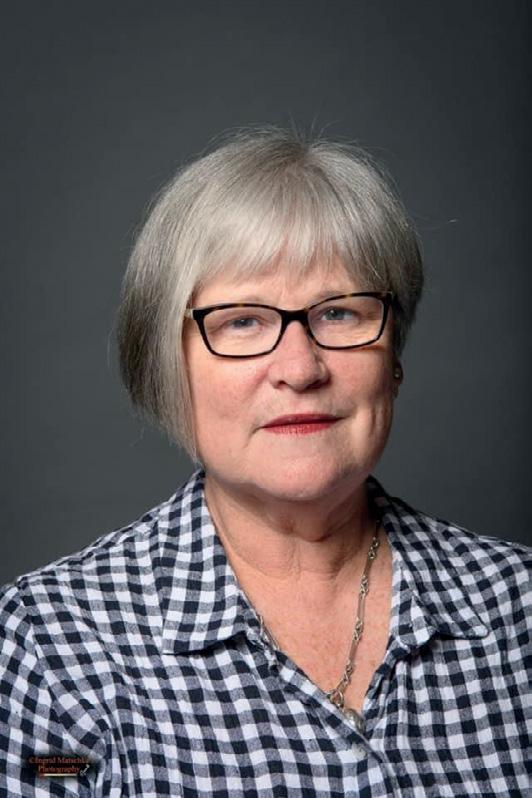
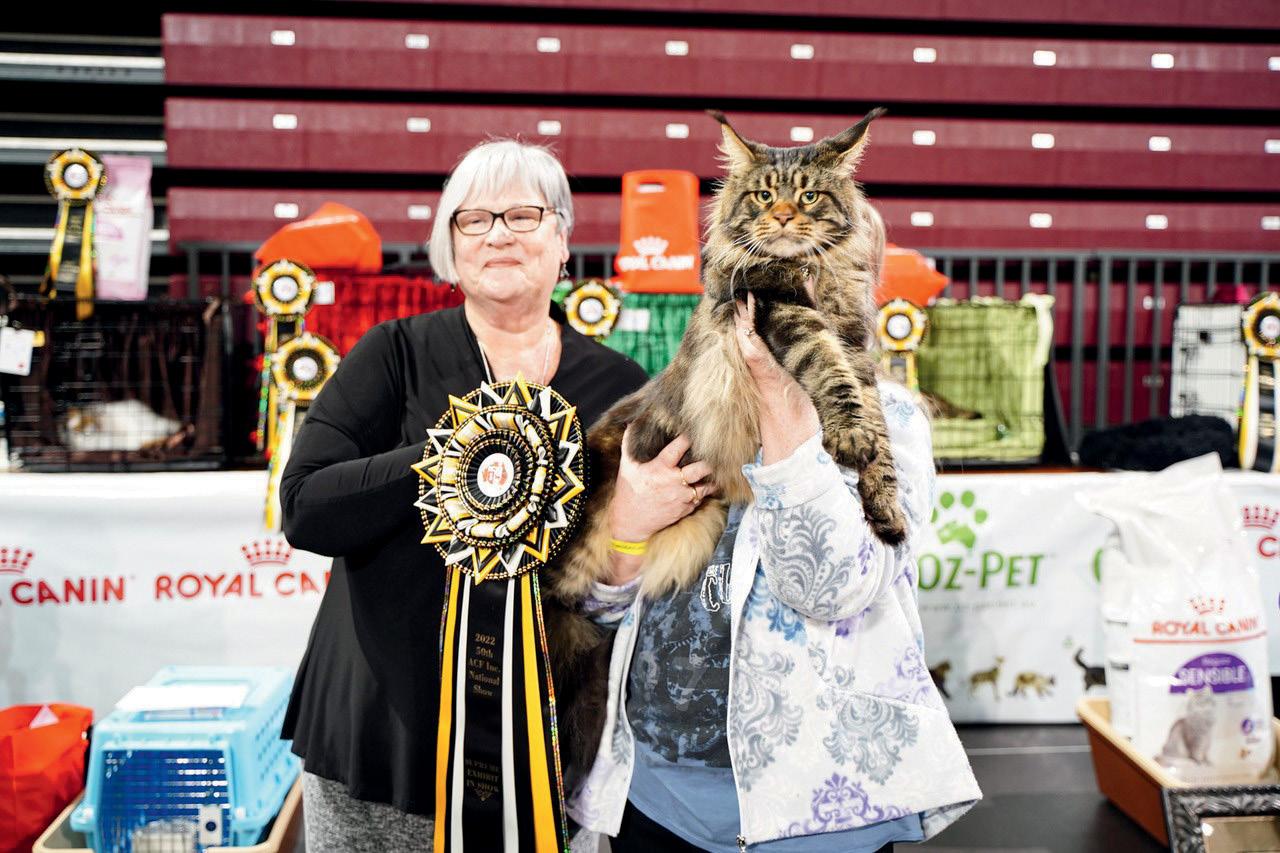
“That will have its own logistical challenges because we are hopeful of a good entry of cats at that national show and since Covid, flying cats around Australia has become expensive and more difficult. Having the WCC in Australia will focus the international cat community on ours and showcase our cats to the world.”
The ability to host the WCC is a welcome change for the past few years given the difficulties presented by Covid, and the ACF has continued to work hard and been very busy notwithstanding the challenges since 2020.
“During 2021/2022, shows have been able to run within whatever each affiliate’s state Covid regulations were, and travel is now starting to return to normal allowing interstate judges to travel freely around the country to judge at shows. The work concerning breed standards and training judges continued utilising zoom where needed continued despite the pandemic.
“The main highlight of 2022 took place in June this year when we were able to resume our normal annual general meeting and general meetings in person
Over the past few years, the ACF has noticed a trend towards cats being sold via social media and the public being scammed. Jordan says that the ACF is looking at ways to better inform the public about what to look for in a reputable and registered breeder.
“The ACF continues to remain concerned at the number of unregistered and unregulated breeders selling purportedly pedigree cats to an unsuspecting public. During Covid there was an increased demand for cats as companions while people were at home, and this has seen some instances of people entering breeding but not adhering to the ethical standards we at ACF hold our affiliates and their breeders to.
“We want to work with the industry at better educating the public in where to find a reputable and registered breeder and what to look for when considering introducing safely a kitten or cat to your family in terms of breed type and temperament, containment, and care.”
Over the next 12 months, the ACF will continue to focus on maintaining breed standards and ensuring breeders registered with its affiliates in each state continue to pursue excellence in ethical breeding and achieving best practice in all that they do.
The ACF is also looking forward to resuming meetings with the Coordinating Cat Council of Australia to work cooperatively on breed standards. n
Almost a quarter (24 per cent) of all pet cats in Australia were obtained during the pandemic, with the number divided between new and existing cat owners. Almost half (48 per cent) of these cats were given freely, while 34 per cent were obtained for $200 or less.
Animal Medicines Australia. Pets and the Pandemic, a social research snapshot of pets and people in the COVID-19 era.
“Having the World Cat Congress in Australia will focus the international cat community on ours and showcase our cats to the world. – Judith Jordan, President, ACFCoonmagic Gaston, the 2022 Supreme Exhibit, owned and bred by Kim Mattock
A surge in reptile ownership means now is the time for an updated licensing approach to reptile keeping, explains Chris Williams, President, Australian Herpetological Society (AHS).
Words Thomas Oakley-NewellTHE PAST few years have seen an incredible increase in pet ownership across Australia, largely fueled by the pandemic, and a particular rise in the number of people keeping reptiles and amphibians.
Chris Williams, President of the Australian Herpetological Society (AHS), said the AHS provides the perfect outlet for these new reptile keepers to network and meet other passionate, likeminded people and share their knowledge, particularly with the return of its monthly meetings.

“The AHS hopes that the current system can be modernised to acknowledge the vast number of people keeping reptiles as pets, while also focusing on animal welfare and the conservation and preservation of our incredible native reptile fauna.”
– Chris Williams, President, AHS
“It’s nice to feel like we’re returning to something resembling normal. The AHS normally meets each month in the city where we have guest speakers give presentations on field work, research, and captive husbandry. Over the past few years, the meeting became online presentations. They were popular, but you can’t beat the in-person experience.
“In August we did hold a special event for the launch of one of Australia’s most preeminent reptile experts, Professor Rick Shine’s new book. It was a fantastic night with about 120 reptile enthusiasts flying in from around the country for the event.”
One of the major opportunities that Williams and the AHS has identified is the Society’s role in the process of rehoming pets and continuing to be involved in the discussion around a more sensible approach for reptiles to be kept as pets.
“The current system is embarrassingly antiquated and is in desperate need of an overhaul to reflect the fact that reptile keeping is now a mainstream pet category. With becoming a mainstream pet, reptiles and amphibians, begin to face common challenges, especially around animal welfare and responsible pet ownership.”
The AHS has been pushing for a more enlightened approach to keeping reptiles for more than 30 years, as Williams believes the current licensing is far too overregulated.
“Unfortunately, the current system has many limitations and past attempts at reform have not resulted in any significant outcomes. The AHS hopes that the current system can be modernised to acknowledge the
vast number of people keeping reptiles as pets, while also focusing on animal welfare and the conservation and preservation of our incredible native reptile fauna. We desperately need a new approach to reptile licensing to carry the hobby forward for many years to come.”
Unfortunately, Williams says, the wheels turn excruciatingly slowly.
“Based on our history dealing with bureaucrats and other misguided, though well intentioned, stakeholders we need to be talking in terms of decades not years for sensible reforms to be implemented. Regardless of what may happen with legislative reform, the AHS will continue to welcome many new members at various stages of their reptile keeping journey as well as facilitate the sharing of knowledge well into the future.”
Ensuring knowledge among new reptile owners is an important issue for the AHS, as unlike many conventional pets, some reptiles can take years to reach their mature sizes.
“For instance, most species of turtle, or snakes such as carpet pythons, are born incredibly small. However, after five years many turtles are the size of a dinner plate, or a carpet python could be three metres in length. Ensuring that people are prepared to care for their pet for the life of the animal and understanding what is required across their life is an ongoing issue for people wishing to keep reptiles as pets.” n
“To continue hosting our monthly meetings, build our catalogue of online presentations and continue working with other stakeholders to try and streamline the process of rehoming surrendered or seized reptiles. We also have representatives working with various stakeholder groups alongside the NSW environmental regulator in reforming current native animal regulations in NSW.”
What is the immediate focus for the AHS over the coming year?
at 69 per cent in Australia, means more people are experiencing the joy that comes through owning a companion animal, it means increasing pressure on the veterinarians that care for them.
Dr Bronwyn Orr, President of the Australian Veterinary Association (AVA), said the increased demand for veterinary services, including the pressure on delivery of after hours services, was a trend experienced by most veterinary clinics.

“The AVA tried to ease some of this pressure by increasing advocacy, including getting veterinarians added to the Priority Migration Skilled Occupation List (PMSOL) and making our ‘Return to Work’ program free for members who might want to ease back into clinical work after a period away.”
This increased demand coupled with a national shortage of veterinarians and veterinary nurses is one of the major challenges that Dr Orr has identified in the coming year.
“The impact of the workforce shortage of veterinarians and veterinary nurses continues to be felt by the wider sector. With increased competition for veterinarians from overseas, the workforce shortage shows no signs of easing anytime soon.
“The AVA also sees an opportunity with the new Federal Government to increase investment in the veterinary profession to ensure long term sustainability and provide activities that benefit the wider public such as animal welfare, biosecurity, and food security.”
As the industry has learnt to live with Covid, the way veterinarians and the AVA operate have also changed.
“Veterinarians are increasingly moving back to

members commenting on how great it is to catch up with colleagues after many years of seeing faces on a screen. Issues around the workforce shortage of veterinarians and veterinary nurses, mental wellness concerns, and the lack of public investment in the profession continued to rear their head over the past year.”
The AVA will continue to focus on improving the mental wellbeing in the profession through its THRIVE initiative, which aims to deliver a suite of programs, including the development of a VET2VET peer support program, development of an industryspecific mental health framework, and other initiatives that form a holistic approach to veterinary wellness.
“Additionally, we aim to get a commitment from the Federal Government to introduce a ‘HECS forgiveness for rural vets’ scheme in the near future and we plan to continue our advocacy around investing in the veterinary profession. Internally, we have some constitutional changes that need to be considered by members as we continue to focus on delivering value for our members.”
Looking ahead, Dr Orr believes the utilisation of veterinary nurses and technicians will continue to evolve as the workforce shortage deepens, and that there will likely be increased regulatory attention in this space.
“Additionally, the growth of services such as telemedicine will likely continue as client demand for veterinary advice continues. Protecting the health and wellbeing of our veterinary professionals will need to be a priority to prevent burnout and ensure a sustainable workforce.” n
According to independent research commissioned by the AVA, more than half (66.6 per cent) of veterinary respondents state they have experienced, or are experiencing, a mental health condition. While 41.6 per cent of respondents say that they have experienced a mental health condition over the past 12 months.
The Australian Veterinary Association (AVA) is working hard on improving veterinarian mental health, addressing the workforce shortage, and increasing public investment, explains Dr Bronwyn Orr, President, AVA.
“Protecting the health and wellbeing of our veterinary professionals will need to be a priority to prevent burnout and ensure a sustainable workforce.”
– Dr Bronwyn Orr, President, AVAThe AVA would like a commitment from the Federal Government to introduce HECS forgiveness for rural vets
Newly launched Bark and Beyond is tapping into consumer curiosity around what is in their pet’s food and how it is made, explains Nathan Grainger, General Manager and Founder, Bark and Beyond.
Words Thomas Oakley-Newell
“Consumers are wanting to know more about what is in their pet food and how it is made.
We make ours with natural ingredients and with no preservatives.”
– Nathan Grainger, General Manager and Founder, Bark and Beyond
Bark and Beyond, said they’re lucky to have some great long-term partners for sourcing materials exclusively out of Australia and New Zealand, as they only want to support 100 per cent Australian and New Zealand made products.

“Consumers are wanting to know more about what is in their pet food and how it is made. We make ours with natural ingredients and with no preservatives. We are reacting to the market with our technologies and have recently acquired a processing plant in Broken Hill, which allows us to access a variety of raw materials and allows us to supply direct from the paddock to the consumer.”
Having the business based near the Hawkesbury River has provided its challenges recently, with
“From our company perspective, we’re keeping that secret. Let’s just say we are investing more than $6 million into a pilot plant for new technologies in the Australian market, and that our customers and staff are very excited for 2023.”
family and have recently extended our fleet of trucks to help with these issues, so far we have six semi-trailers in our fleet, delivering Australia wide, and this will grow in the next 12 to 24 months.”
Working with the community is an important part of Bark and Beyond, with Grainger pointing to a recent partnership with local charity, Ruff Trak.
“Ruff Trak is a local Hawkesbury youth registered charity that takes on young people who have disengaged from school and the community to teach them skills including dog training and dog sports. We feel very privileged to be part of this, and our parent company Hypro Pet Foods is also partnering. We are extremely proud to be a community-focused business.”
Stricter regulation around the production of pet foods is a change that Grainger would like to see implemented in the pet industry.
“We have five dedicated full-time quality assurance staff within the Hypro Pet Foods team and recently also earned our NSW Food Authority processing plant license. We would like to see many other companies following these and the Pet Food Industry Association of Australia (PFIAA) guidelines.” n

What do you predict will be the key trends in the pet food industry in the coming year?The Bark and Beyond team
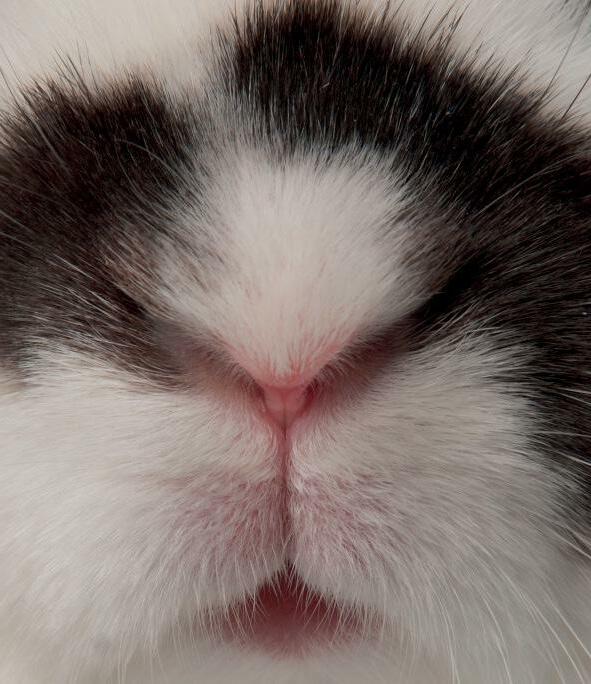
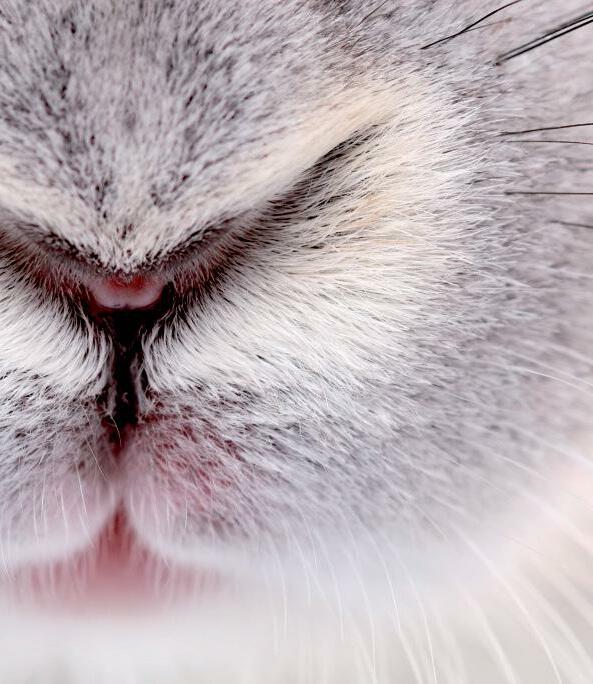
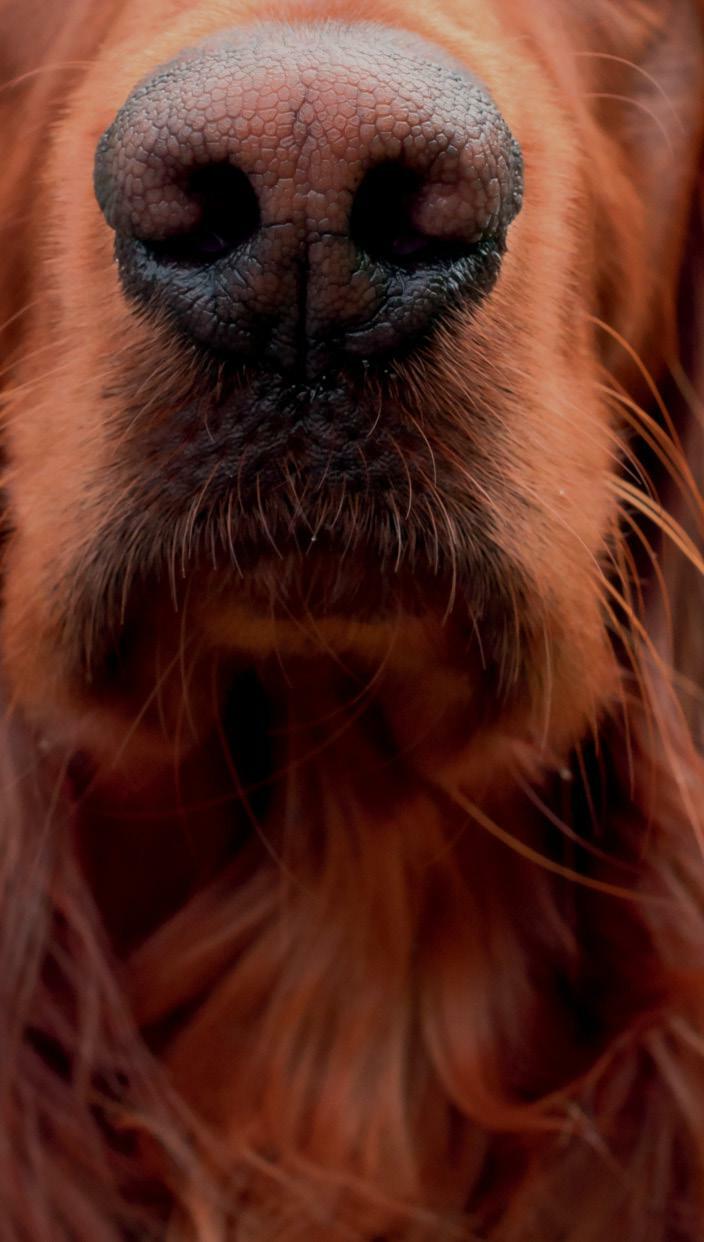
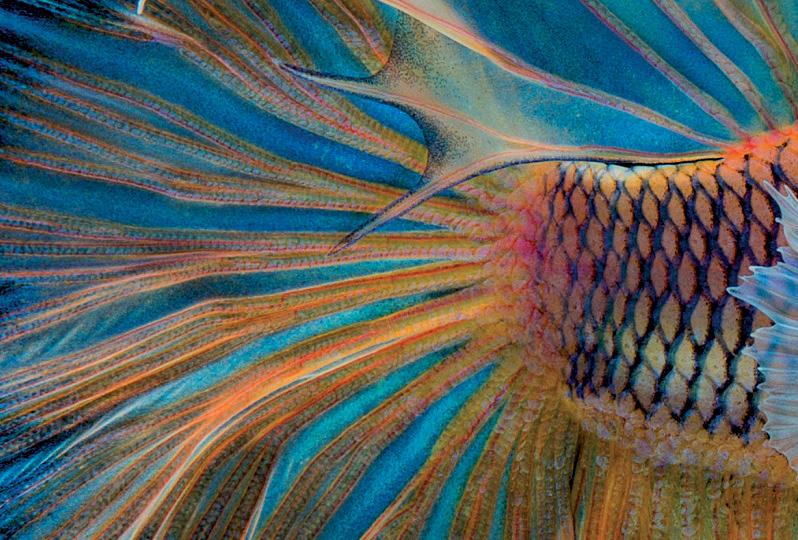
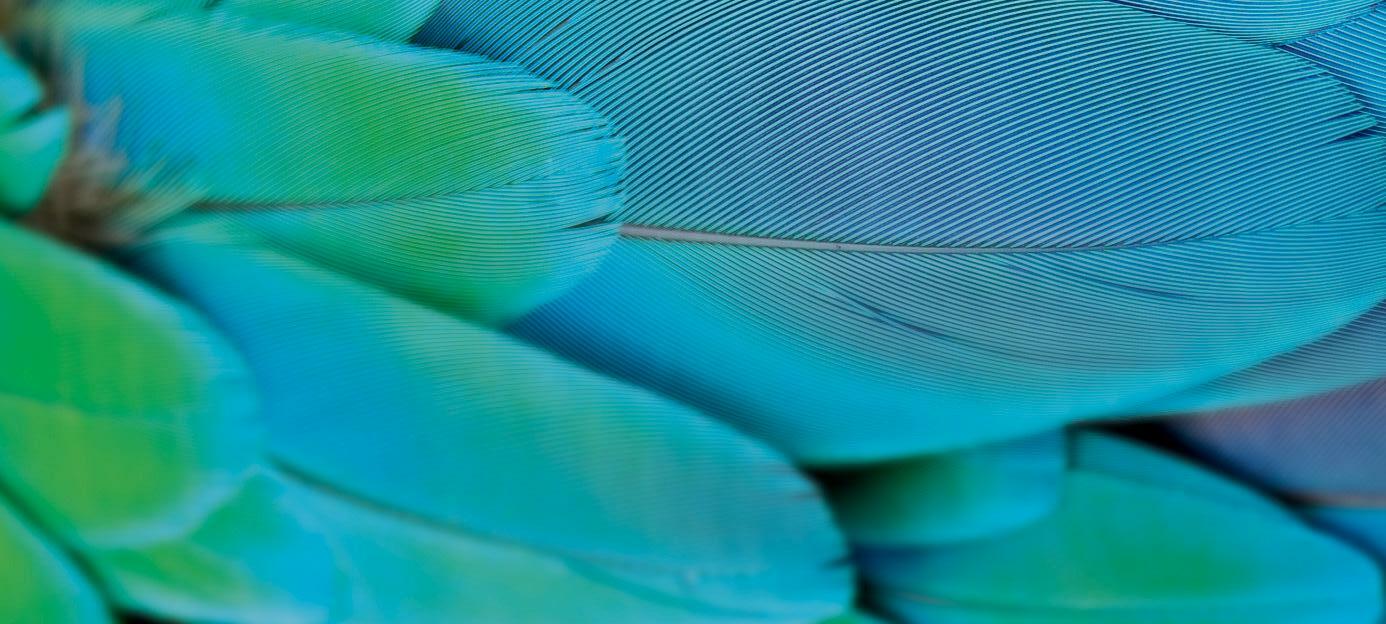
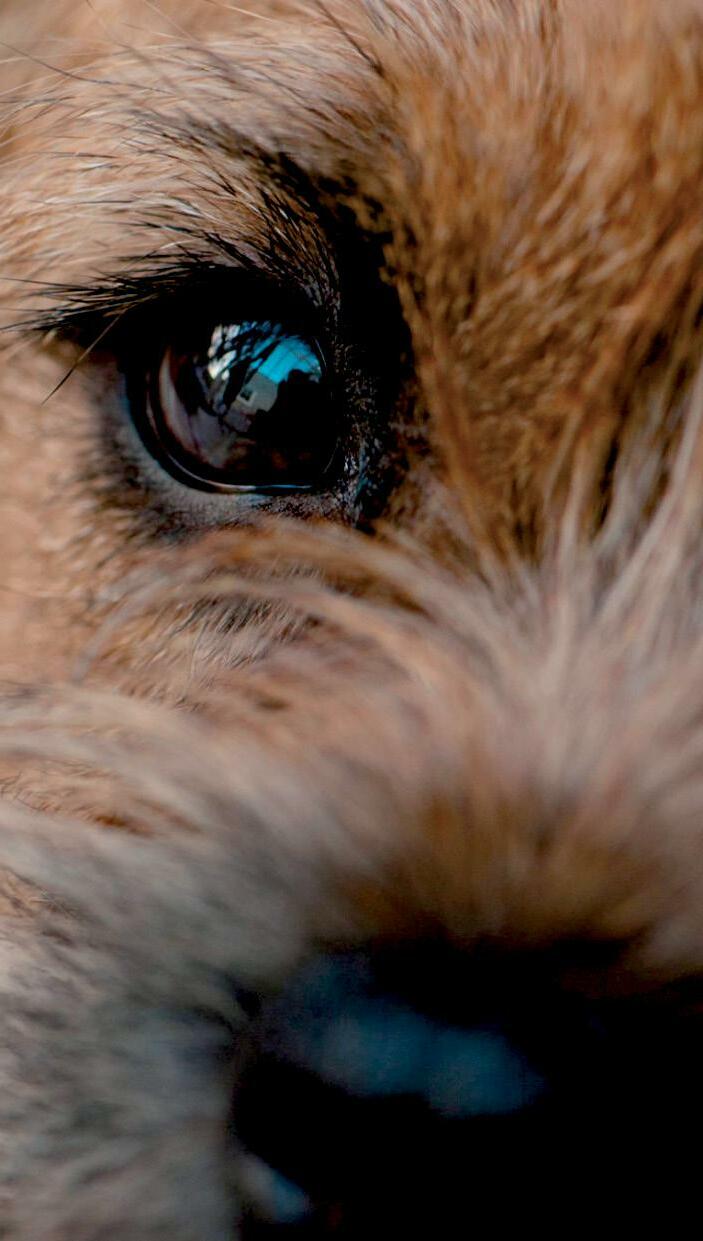
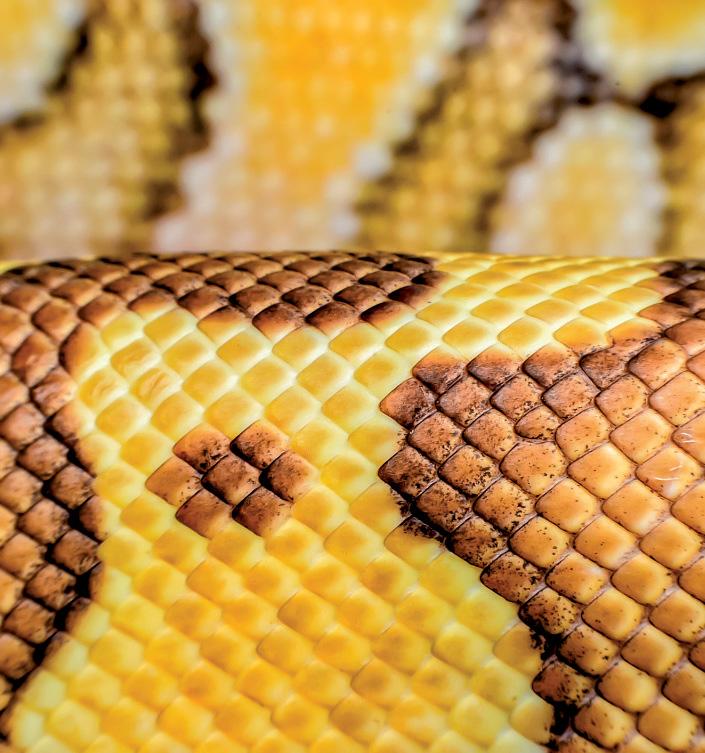


Following a successful campaign to become the public face of the Australian National Kennel Council (ANKC), Dogs Australia will be supporting its members in the drafting of new breeding regulations, says Hugh Gent, President, Dogs Australia.
Words Rachel White
A BUSY 2022 for Dogs Australia has seen it become the public face of the Australian National Kennel Council (ANKC), win a Google Grant, and donate $40,000 to the Ukrainian Kennel Union.
Hugh Gent OAM, President and Chairman of the Board of Directors at Dogs Australia, says the main highlight for him has been the campaign to establish Dogs Australia as the public face of the ANKC.
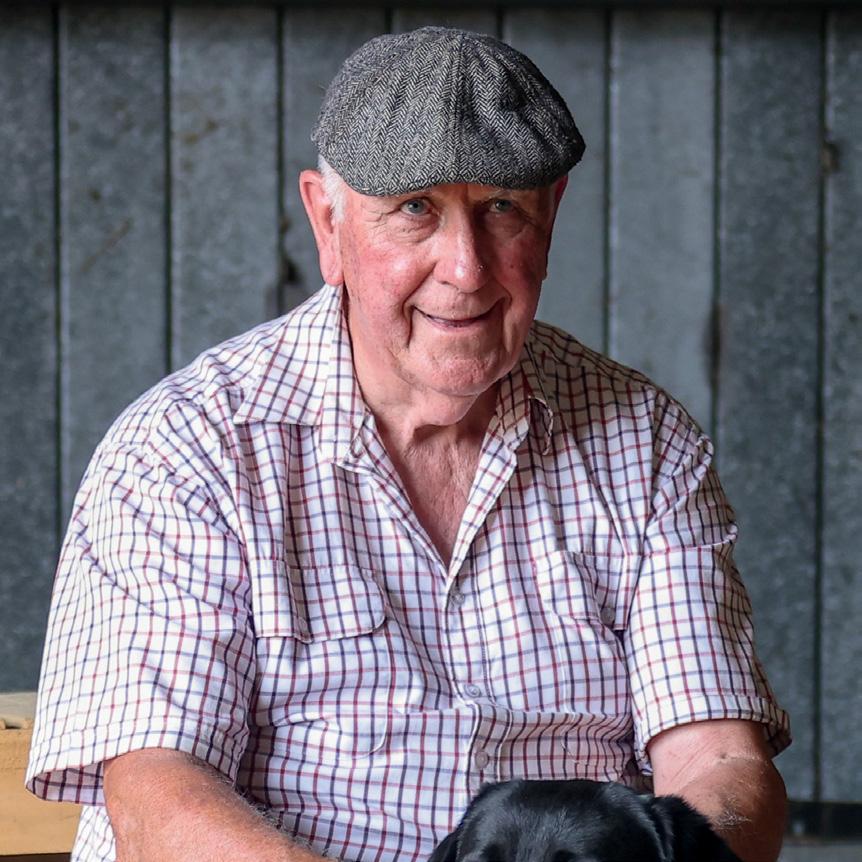
“In the process we achieved a tremendous lift in our level of engagement with the public and the assistance of Google Grants enabled us to expand our social media platform.”
With affiliated member bodies, the organisation also donated a generous $40,000 to the Ukrainian Kennel Union, which Gent says is, “making sure that the funds transferred will be used properly to save the lives of the dogs and their breeders/owners in the Ukraine”.
What sets Dogs Australia apart from other canine registries, which mainly focus on the commercial side of breeding, is the 17 sporting activities they offer dog owners, says Gent.
“animal rights activists masquerading as animal welfare organisations, who seek to achieve their publicly stated objectives of controlling or even eliminating the breeding of dogs as companion animals,” says Gent. “Which of course would impact on all areas of the pet industry.”
During the Covid-19 pandemic, with working from home becoming the new norm, Gent said he noticed a marked increase in the demand for puppies, but that sadly, this didn’t seem to be a continuing trend.
– Hugh Gent, President, Dogs Australia
Looking forward into 2023, Gent says Dogs Australia will continue supporting its affiliated member bodies in their dialogues with State and Territory Governments in the drafting of new breeding regulations, and to use the scientific expertise of its respected academic members to combat the increasing influence of the Animal Justice Party with government legislators.
“Whether the Animal Justice Party (AJP), Greens, and Reverend Fred Nile will have the support of Labor and other Independents [for the Puppy Farm Bill] is yet to be seen. We will continue to monitor the situation through Dogs NSW and be working to ensure that any proposed legislation is, to quote the Hon Dugald Saunders (MP) ‘fit for purpose’.”
“Towards the end of the year, the pandemic induced demand for puppies by people working from home showed signs of slowing, and rescue organisations and shelters reported an increase in surrenders. This did not really affect Dogs Australia breeders as the numbers of pedigree dogs surrendered is very small and they are quickly rehomed. Our affiliated member bodies have many breed rescue groups under their umbrella who do assist with all breed rescues.”
Gent said that sadly with the increase in the cost of living, including rising interest rates, cost of fuel, and electricity, families are reviewing their spending and reconsidering pet ownership.
“Although we know that there are many people who would starve themselves before they stopped feeding their animals, the cost of pet ownership may prove too costly for some, which would be reflected throughout the pet industry.” n
“Although we know that there are many people who would starve themselves before they stopped feeding their animals, the cost of pet ownership may prove too costly for some which would be reflected throughout the pet industry.”
An increased focus on health, not only of humans, but of our animal companions, has proven a successful trend for EAC Animal Care, explains Danny Xue, Co-Founder and Director, EAC Animal Care.
Words Thomas Oakley-NewellFOLLOWING THE growth of pet ownership in Australia throughout Covid, there was an increased interest in not only our own health but that of our companion animals.
Danny Xue, Co-Founder and Director of EAC Animal Care, said that the EAC business and brand have benefited from this trend substantially.
“Health management is a key topic in the pet industry. This is the critical foundation in securing the wellbeing of the furry family members that provide us with the unconditional love that we so enjoy. There is a need of proper guidance, protocol, products, and service to support pet owners with the collaboration of industry professionals, vets, nutritionist, breeders, and trainers etc.”
As an Australian-owned innovation company, Xue says that EAC is devoted to this process with quality product, science, and education.
“EAC believes education and solid science are the key for our clients and partners’ success. Since 2022, EAC committed five per cent of annual turnover to research and development (R&D). The EAC Research and Innovation Centre was established to conduct high level projects together with our partners globally. The research will focus on investigating the role of gut health and immune status and how they impact on pet and equine wellbeing and vitality.”
This investigation into gut health can be seen in EAC’s flagship product line of the In-sideout gut and immune health optimiser, with new variations both just released and on the way.
“We recently launched an In-sideout cat specific version to optimise the palatability for our feline friends. To continue the legacy of In-sideout, we are in the process of developing In-sideout kitten and In-sideout puppy to provide a strong start for young animals. EAC recently launched In-sandout as a strong solution for sand issue in equine. A clinical study has been completed in conjunction with West
Coast Veterinary Hospital showing In-sandout is an effective solution to remove and prevent sand issues.”
Not stopping there, Xue says that more products will be developed accordingly to strengthen the EAC portfolio and keep providing safe, reliable, and effective solutions.
“We also focus on providing premium service to our clients by significant investment – educational content, seminar, shipping service etc.”
The demand for quality and effective animal health products is greatly desired in the market, claims Xue, and EAC is passionate about becoming the leader in advancing animal health in the nutraceutical area through science, innovation, and education.

But in order to do this, there are of course challenges to overcome.
“Current major challenges include inflation, increased cost of living and supply chain uncertainty, plus the increasing operation costs that require the business to prioritise its most important goal to ensure the investment efficiency with zero compromise of the client’s experience.” n
management is key topic in the pet industry. This is the critical foundation in securing the wellbeing of the furry family members that provide us with the unconditional love that we so enjoy.”
– Danny Xue, CoFounder and Director, EAC Animal Care
“It is exciting to see more players emerging in the pet health area, including food, supplement, accessory, and service. Gut and immune health products and service can be the key business driver in this sector.”
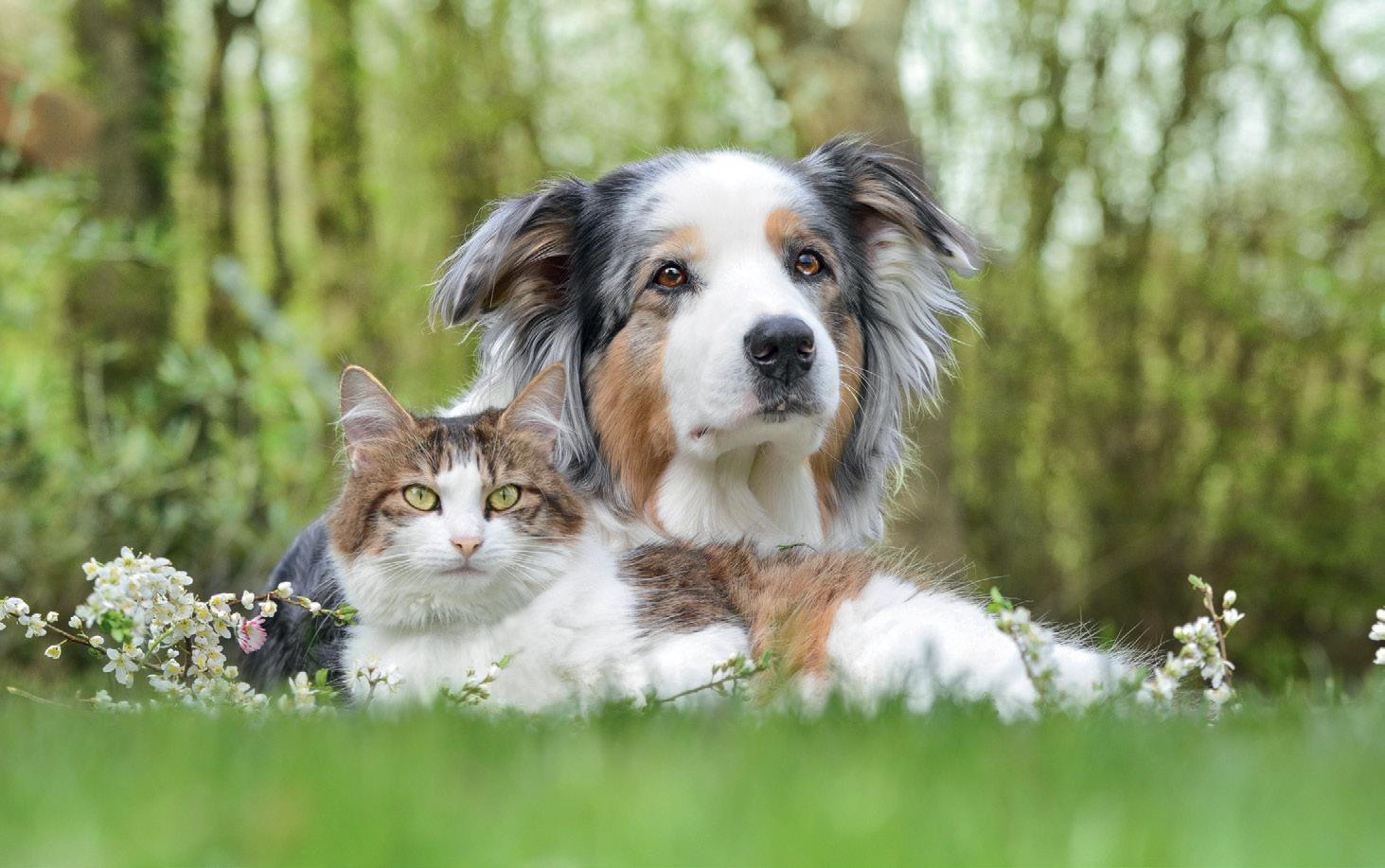
“Health
INDEPET CONTINUES to champion local independent pet stores and advocate for the entire independent pet channel through its key philosophy of ‘Stronger Together’.
As a cooperative, IndePet is 100 per cent owned by its independent pet store members, and its members are the key to its success. It’s for this reason that IndePet has set its sights on creating greater strength in numbers by growing its network to 100 stores by 2025.
It’s an ambitious goal for the group which currently supports over 45 independent pet store members, but it’s one that CEO Todd Clarkson believes in. And with eight new stores already joining the group over the past year, it’s off to a great start.
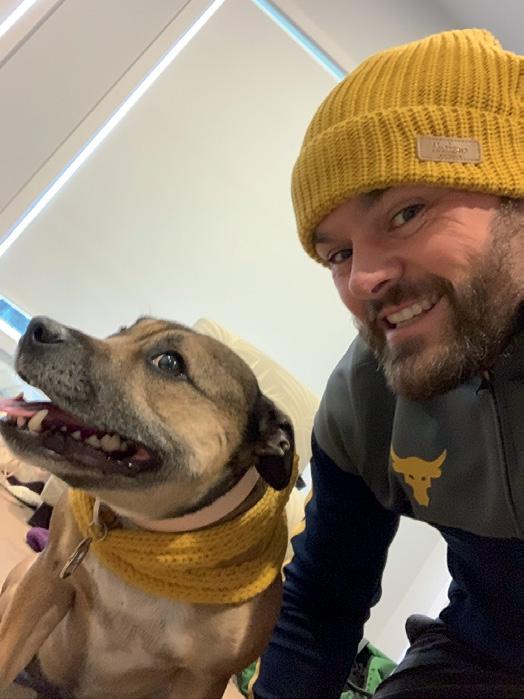

“The local independent pet store is the lifeblood of our industry and it’s vitally important that they not just survive – but thrive,” says Clarkson.
For independent pet stores to thrive in what is a rapidly evolving market, Clarkson says that it will require a change in thinking of how the industry views, supports, and ultimately respects independent operators.
“Like we have seen in other industries such as grocery and pharmacy, the independent channel must evolve into a more unified voice; and that is done through groups and cooperatives,” he says.
“This is where IndePet comes in – IndePet exists to ensure the longevity and prosperity of independent pet stores. We play our part by providing a fit-forpurpose support business that is 100 per cent focused on growing sales and lowering costs for our members across Australia and New Zealand.
“We believe that every independent pet store can benefit from being part of IndePet and that a larger, stronger IndePet is not just good for our members – but our suppliers and the industry as a whole.”
• Continue to build our exclusive product portfolio.
• Continue to build new support services for our members to help them increase sales and lower costs.
• Become more data orientated as a group and provide more insights back to our members and supplier partners.
• Increase member networking and engagement and build the relationships between our shareholders and suppliers.
Over the past 12 months, IndePet has repositioned its long term strategic objective to become a full service retail support business. To achieve this, the group has restructured and grown its team,
team as Marketing Manager.
The group has also expanded its exclusive product portfolio to help stores compete with the current price wars and launched a new customised marketing system that allows independent pet stores to be part of a large marketing campaign – but choose their own deals and offers.
Clarkson says that a strong priority has been in understanding that IndePet’s member stores have different local markets and thus the business needs to be able to support each store with the product ranges that they need in their local area.
“We have a strong focus on strengthening relationships with our supplier partners to keep us ahead of trends and new products. Our members have expanded their ranges in these areas and started to look at new and unique brands that customers are looking for. Independents are more nimble in the fast paced market – our members can react instantly without red tape or bureaucracy,” he says.
Looking ahead to the next 12 months, Clarkson says that IndePet will continue to champion local independent pet stores and advocate for the entire independent pet channel.
“We will provide more support and resources for our existing members that help them grow sales and lower costs. And we will build our existing supplier network by supporting our current supplier partners and help new suppliers to connect with our members.
“Most importantly, we will grow the IndePet store network and use their collective power to improve their individual businesses.” n
IndePet has bold plans to help its independent pet store members to thrive in a rapidly changing industry, according to CEO Todd Clarkson.
Words Deborah Jackson
“We believe that every independent pet store can benefit from being part of IndePet and that a larger, stronger IndePet is not just good for our members –but our suppliers and the industry as a whole.” – Todd Clarkson, CEO, IndePetThe Pet Superstore team in Stafford
Bringing new products to market, introducing its own new ranges, and working on doubling the size of its showroom, Pet Pacific has had a productive year, says Frank Williams, Managing Director, Pet Pacific. Words Thomas Oakley-Newell

WHILE FACING many of the same troubles that businesses across Australia have had to face in maintaining stock supplies and increased transportation costs, Pet Pacific has still managed to achieve a significant amount over the past 12 months.

Frank Williams, Managing Director of Pet Pacific, said as far as new and exciting products, he has not let Covid dampen his enthusiasm.
“Over the past 12 to 24 months, we have brought to market a stunning range of products from Europe’s largest pet product manufacturer, Ferplast of Italy, introduced our own range of Bioscape Aquarium canister and internal filters, heaters, and air pumps, as well as our own Insectivore Fish Food range made in Europe. Many more are in the pipeline for 2023.”
The introduction of new aquarium products is no surprise for Williams, given his view that this sector has seen increased interest over the Covid lockdown period.

“The stay at home period created a boom in smaller house dogs, cats, small animals, and in particular aquariums. Nano aquariums have boomed, and Pet Pacific has become the market leader in the specialised range of these units. As Australia’s leading supplier of reptile products with both the Exo Terra and Zoomed ranges – we have also seen a sharp growth in this sector of the market.”
Williams sees no signs of this trend cooling down over the coming year.
“Trends in next 12 months would definitely be a continuation of the growth of both the aquariums and reptile sectors of the market, as well as continuing growth of the super-premium dog and cat foods in the air-dried and freeze-dried areas.”
doubling the size of their showroom at Emu Plains.
“This will allow us to adequately display our recent and future growth in new products and showcase it all for our customers. The launch date of this new facility is set down as 23 February, and we look forward to welcoming as many of our customers as possible during the coming year.”
Despite the obvious success of Pet Pacific over the past year, it has not been without its setbacks, mostly Covid and cost-of-living related.
“The main challenges revolve around supply and shipping. Shortages both in material and labour for our suppliers, and huge increases in cost of transportation to get goods to reach us. Mostly these remain, but for shipping the hope is a fall-back will occur in time.”
For Williams, the focus is now on keeping supply stocks as reliable as possible for the customers.
“We will also try as best we can to maintain costs, and to maintain our selling prices at a reasonable and market acceptable level. Due to the market disruption and adverse conditions in China, we continue to increase our purchasing support to other parts of Asia as well as Europe and North America.” n
“Nano aquariums have boomed, and Pet Pacific has become the market leader in the specialised range of these units. As Australia’s leading supplier of reptile products with both the Exo Terra and Zoomed ranges – we have also seen a sharp growth in this sector of the market.” – Frank Williams, Managing Director, Pet Pacific.

“We plan to start up our multiple city trade nights in 2023, enabling us to meet face to face with most of our customer base as we did for many years prior to Covid.”
THE PET Food Industry Association of Australia’s (PFIAA) number one priority is the safety and wellbeing of Australia’s 29 million pets, and it has been working hard over the past year to ensure pet food standards are being met.
Carolyn Macgill, Executive Manager of the PFIAA, said they strongly believe all pets should have access to safe, high-quality nutrition, while all pet owners should trust the pet food they purchase.
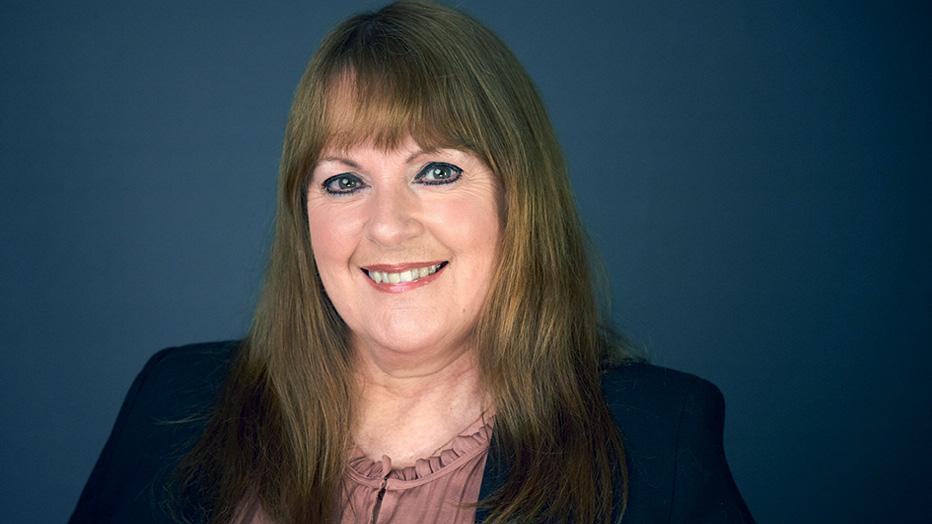
“Consumers want regulation. Animal welfare groups want regulation. PFIAA members want regulation. The PFIAA believes it is time all state and territory governments agree to a model of regulation that delivers the regulatory oversight expected by consumers but is currently missing in Australia. We believe the whole industry would benefit from regulation, even those pet food businesses which are not members.”
In 2018, the Senate Rural and Regional Affairs and Transport References Committee (Committee) released a report recommending the establishment of a Pet Food Review Committee under the then Department of Agriculture and Water Resources (now Department of Agriculture, Fisheries and Forestry (DAFF)). The Committee addressed the issues raised throughout the hearing, including the consideration of potential regulation.
“The Review Report was released this year requiring a cost benefit analysis to assist state and territory ministers in their decision to introduce pet food regulation and to consider a regulatory model.”
The review of the Australian Standard AS5812, managed by Standards Australia, commenced mid2022. The review includes a range of stakeholders and is proposing changes that align more closely with the Food Standard Code (that regulates human food).
“Stakeholders, who include the PFIAA, governments, the AVA, RSPCA, consumer advocates and others, are working towards a best practice outcome to support pet food safety and future regulation.”
Macgill said that the updated standard provides an opportunity for states and territories to establish regulation for all pet food manufacturers and importers in support of better pet food safety outcomes. The challenge is helping governments see and understand that our cats and dogs’ health and nutrition are as important as our human family members.
“Now is the time to have an industry voice and contribute to the future. PFIAA members, small and large, share their experience guaranteeing we represent their position. Members have up to date knowledge of changes through our working groups and globally through our representation on the Global Alliance of Pet Food Associations (GAPFA).
“The PFIAA working groups have a breadth of talent covering both small and large memberships, all food types, sector specialists, scientists, veterinarians, and subject matter specialists. This access to industry specialists provides an opportunity to continue to support consumer education.” n
“Looking into 2023, the PFIAA would suggest chilled and premium pet food
continue to experience growth and we anticipate an increase of the use of alternative proteins. Consumers are assessing a pet food company’s green credentials and this includes the sustainability of raw materials and packaging.”
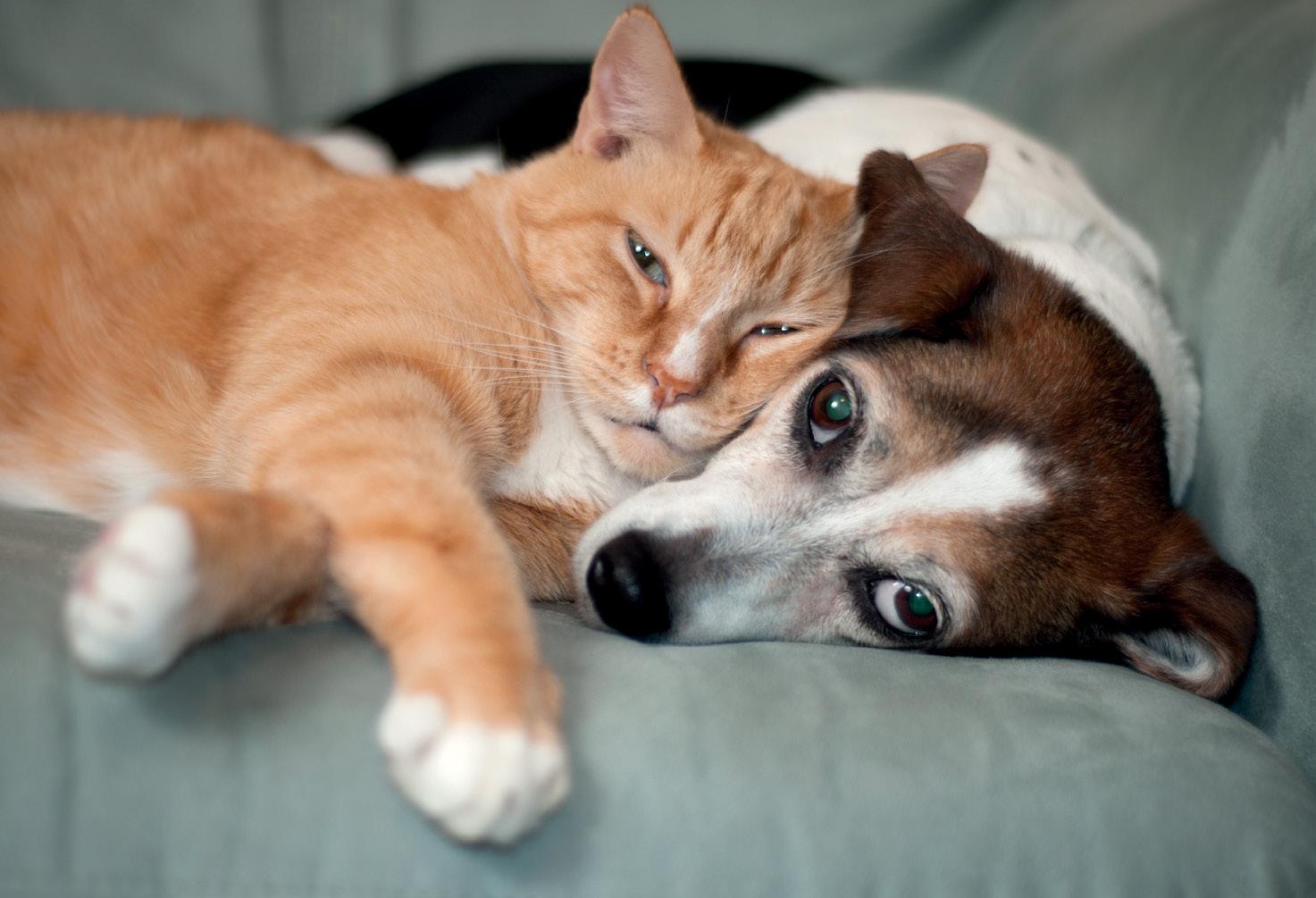
The PFIAA is fighting to ensure pets have access to safe, high-quality nutrition, and their owners trust the pet foods they purchase, explains Carolyn Macgill, Executive Manager, PFIAA.
Words Thomas Oakley-Newell
“The PFIAA believes it is time all state and territory governments agreed to a model of regulation that delivers the regulatory oversight expected by consumers but is currently missing in Australia.”
– Carolyn Macgill, Executive Manager, PFIAA
What will be the key pet food trends in the year ahead?
will
THE PAST financial year has been somewhat challenging for the Pet Industry Association of Australia (PIAA) as it grappled with ongoing significant financial losses. But in the coming year its members will be its primary focus, explains Anthony Ramsey, President of the PIAA.
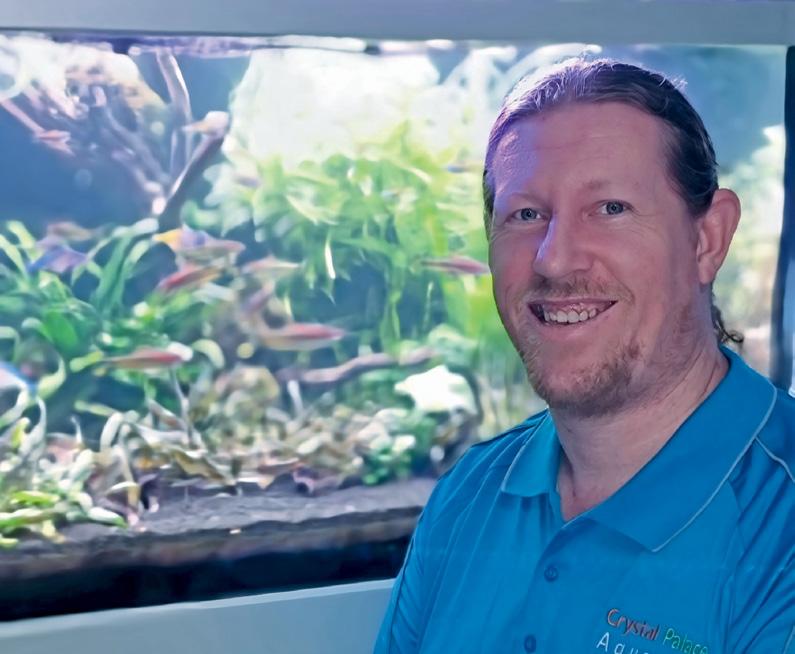
“The PIAA, with its new highly energised board in place, is committed to better representing our membership with communication, consultation, and collaboration being at the heart of how we engage with our members.”
Ramsey said there will be a greater focus on identifying and responding to sector specific agenda issues, and that the PIAA will also be reimplementing a suite of member benefits to its small business members, which will hopefully benefit them financially.
“We have also begun the rollout of a series of sector specific social media channels to provide consumers and industry with a forum to deliver a variety of content and key messaging in a modern and costeffective way. This is also a great way to combat the disinformation often disseminated by those who oppose our industry.”
On those who oppose the industry, Ramsey said that the industry is coming under an ever-increasing threat by organisations which hold ethical and fundamental objections to the keeping of all domestic animals, including pets.
“We must ensure as an industry we unite and continue to focus on our professionalism and the highest standards, to best be able to defend our industries against the challenges ahead.”
This is not the only challenge facing the industry, there are of course the supply chain difficulties and increasing costs that all businesses, regardless of industry, will have to come to terms with over the coming year.
“Although a downturn in the economy seems likely in the next 12 months, the Australian pet industry has traditionally been relatively recession proof. Consumers still spend on their beloved pets no matter how tight the household budget becomes. Service sectors of the pet industry such as boarding, doggy day care, and grooming are also likely to see good growth, with so
many more pets entering Australian households during Covid over the past few years.”

With Covid seemingly now almost behind us, the PIAA is hoping to take full advantage of the ability to have face to face interactions.
“Consumer expos are again on the calendar and the PIAA looks forward to once again promoting itself and its messaging around responsible pet ownership to the industry and pet owning public alike.”
Ramsey said that the PIAA is focused on addressing the interests of its members and ensuring their voices are heard when important regulatory decisions are being consulted on.
“The PIAA is back and once again an organisation run for the members by the members. If you are not a PIAA member or have left PIAA because of past issues or frustrations, I once again urge you to join and give the association another chance. With greater numbers comes a greater voice as we continue to advocate for and guide the Australian pet industry through the regulatory challenges that lie ahead.” n
“Never before has our industry been under attack by those who have an ethical objection to the keeping of all animals. It is a good time to remind everyone involved in our industry that we are under the microscope and to please ensure your systems, processes, and procedures in your business adhere to the relevant codes of practice, and that you are putting the welfare of animals in your care before all else.”
What should the pet industry keep in mind over the coming year?
A new look Pet Industry Association of Australia (PIAA) is ready to face the challenges and opportunities that present themselves in the coming year, says Anthony Ramsey, President, PIAA. Words Thomas Oakley-Newell
“With greater numbers comes a greater voice as we continue to advocate for and guide the Australian pet industry through the regulatory challenges that lie ahead.”
– Anthony Ramsey, President, PIAA
New products, a major rebrand, and international expansion, has given Linda Goldspink-Lord, founder of Poseidon Animal Health plenty to do over the past year. Words Thomas Oakley-Newell

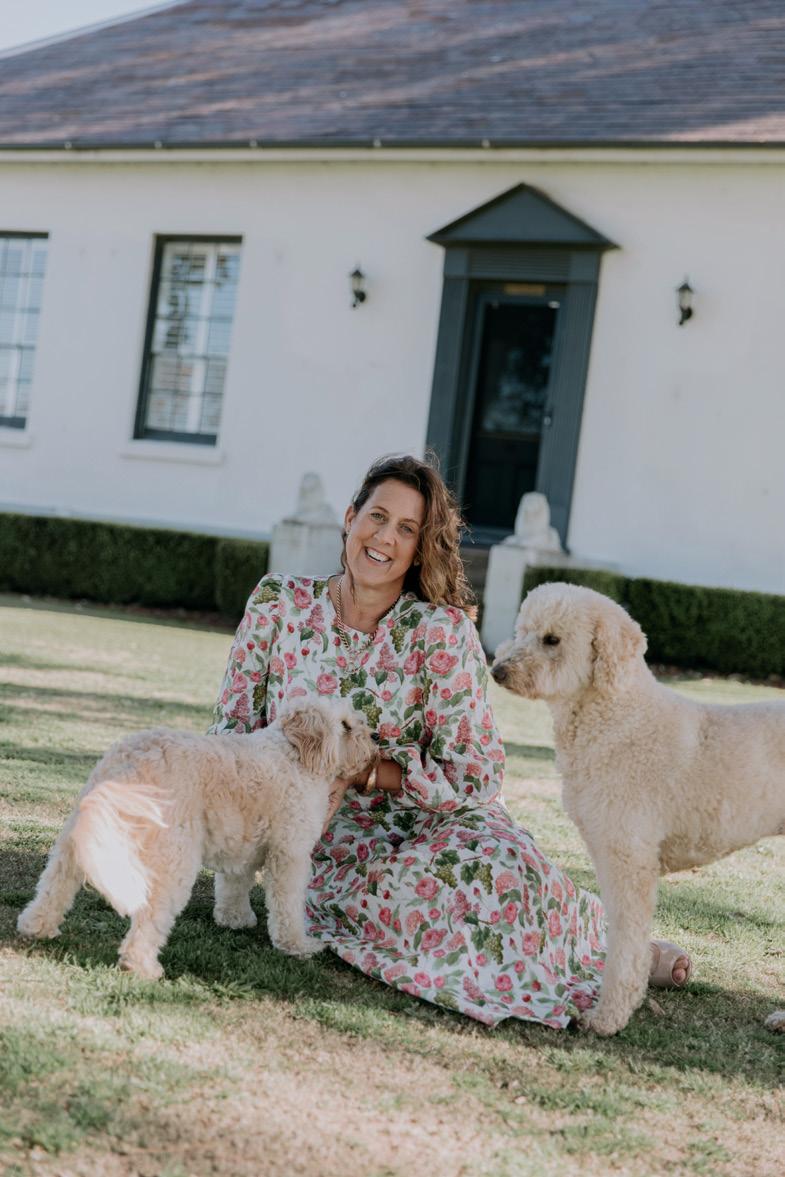
IT HAS been a busy year for Poseidon Animal Health and its Founder, Linda Goldspink-Lord. The company rebranded in order to better represent its growing range of products that now cover both equine and canine health, and with the hope to continue that expansion into other species.
“We’re operating in an increasingly competitive market, and we’re responding with new products and launches to ensure we are giving our customers the best possible gut health supplements for their animals,” explains Goldspink-Lord.
The launch of Poseidon Animal Health’s canine supplement Digestive K9 was a major highlight for the company and Goldspink-Lord.
“It was inspired by the success of our equine range of products for horses. As owners of dogs and horses ourselves, we were keen to also help our dogs to also enjoy the gift of true health with great gut health foundations.”
Linda
“Education is at the heart of what we do, and we’re proud of putting gut health on the agenda for owners of horses and dogs, and to continue providing education through our websites, events, resources, and marketing channels. We’re focused on educating all dog and horse owners, not just our customers, and we take this responsibility seriously.”
Following on from that, there are also plans to release more products in both the canine and equine range including functional treats such as dog dental chews with gut-friendly ingredients, and a new equine product for horses in the racing industry.
This rapid business growth, while certainly positive, comes with its own challenges.
“We’ve had to grow our team, scale our market research, respond to growing demand, and expand our customer service channels. We’ve focused on working closely with retailers and providing point of sale training to their staff, so that they have a good awareness and understanding of our products.”
As there is still plenty of work to be done around increasing the awareness and understanding of animal gut health among Australian horse and dog owners, Goldspink-Lord says this provides the opportunity for Poseidon Animal Health to be part of the education and, underpinned by scientific research, empower dog and horse owners on how best to take care of their animal’s gut health.
“This includes helping people understand the new ingredients coming to market – for example talking about postbiotics and why they’re beneficial. Our Digestive K9 already has postbiotics in it, so we’re ahead of the curve on this locally in Australia. It’s something we’re seeing a lot in overseas products, and
it’s backed by international research as an important element for gut health.”
Looking overseas, Goldspink-Lord says Poseidon Animal Health is focused on expanding internationally including growing its export market in Asia and preparing to launch its products in the US.
“We will be exploring options around production onshore in new markets and working with locally-based experts to help us educate new markets and audiences.”
At the same time, Goldspink-Lord recognises the importance of its Australian retailers, and how important the point of sale team is in delivering great experiences to customers.
“We’re excited to offer more opportunities for teams to have training in understanding our products and giving them opportunities to learn and provide exceptional customer service at that critical point of sale.”
Poseidon Animal Health will continue to bring out more innovative, evidence-based products to support the gut health of animals.
“The gut truly is the foundation for everything –when you get the gut right, you build good foundations for overall health. It’s an essential health building block and is about helping our animals to thrive and live their best lives.” n
“The gut truly is the foundation for everything – when you get the gut right, you build good foundations for overall health.” –
Goldspink-Lord, Founder, Poseidon Animal Health
How important is informing owners about animal gut health?Linda Goldspink-Lord
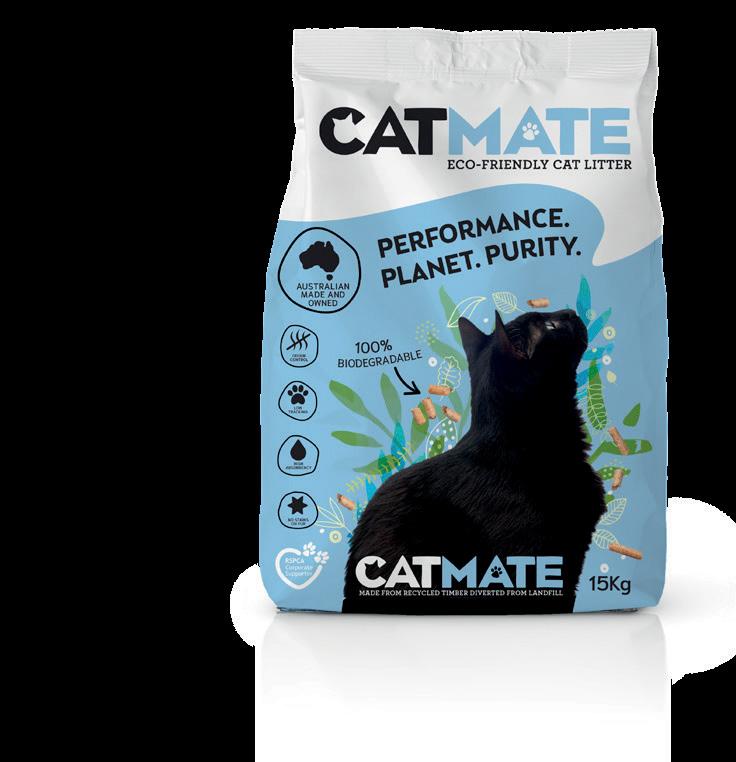

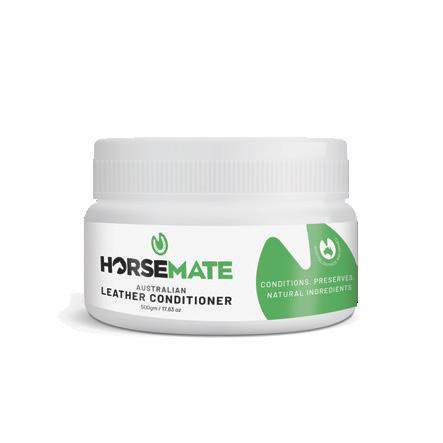



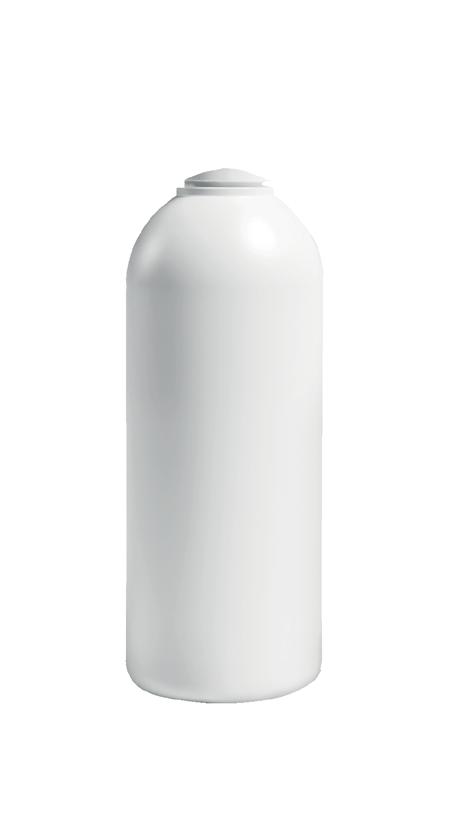
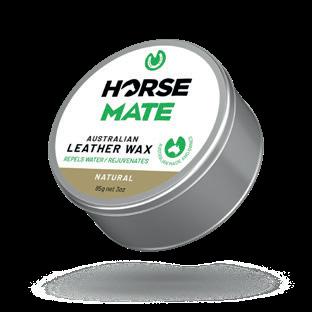

Words Thomas Oakley-Newell
PROVIRO GROUP might be celebrating 10 years in business in 2023, but it is showing no signs of slowing down, with a flurry of new products set to be released in the coming year.
Carolyn Probert, CEO of Proviro Group, said the recently released Horsemate Leather Care range will be on display at the Equitana 2022 trade fair in Melbourne, and that 2023 will also see the launch of more new products.
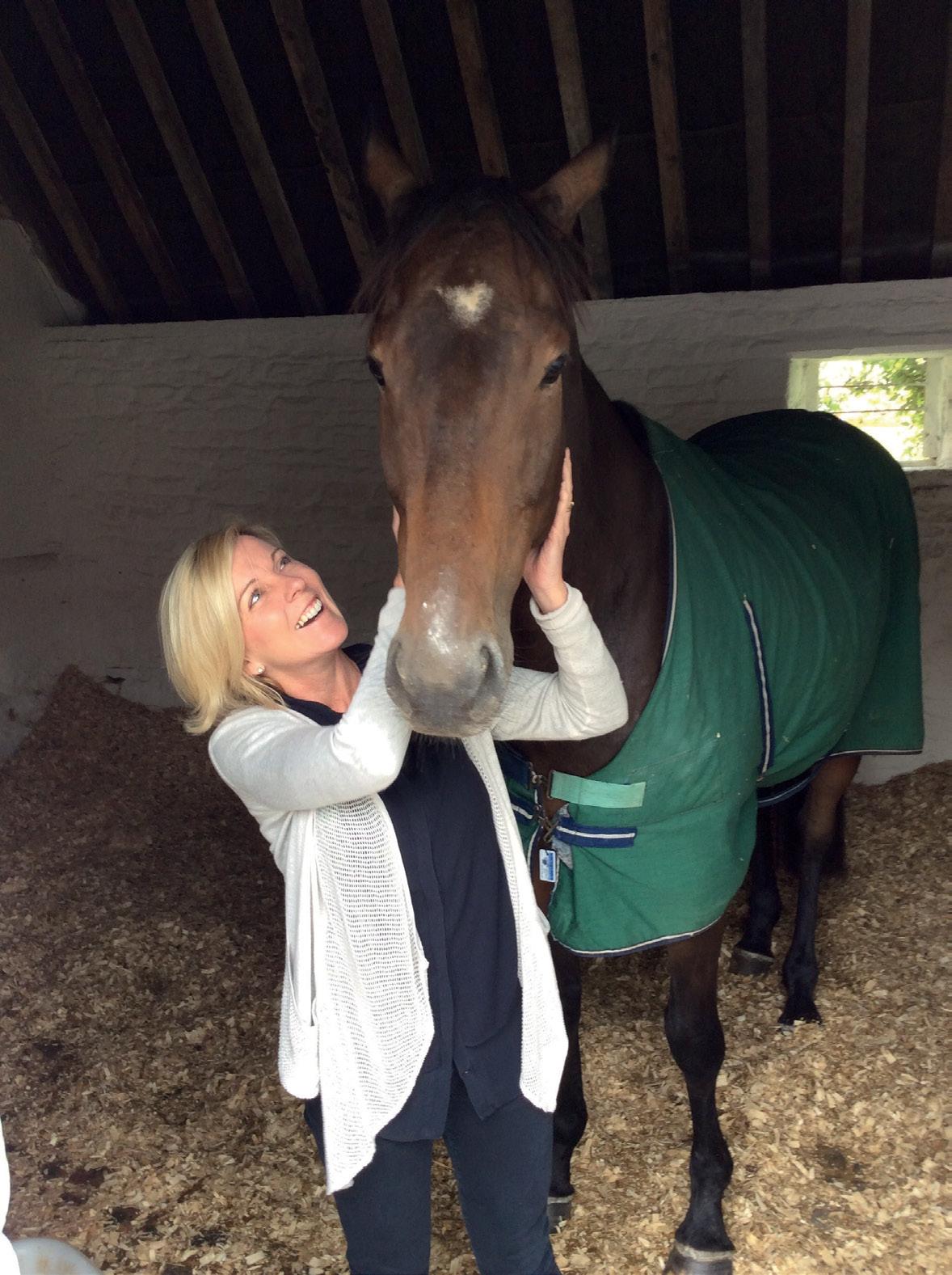

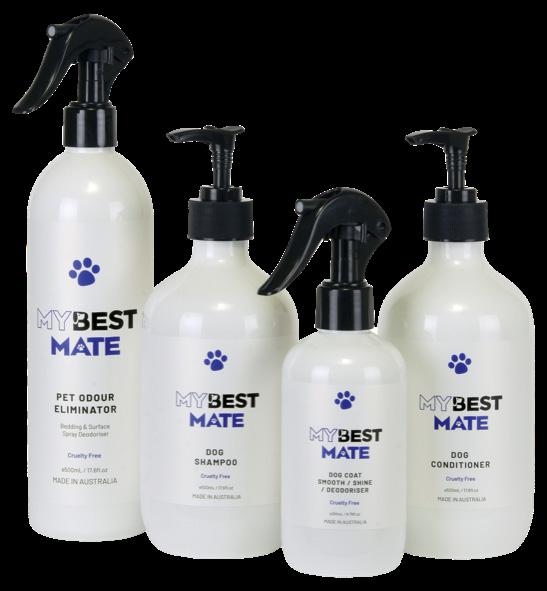
“We’ll be introducing new products to expand our ‘Mate’ range, including a specialty range of grooming products for both the equine and dog market, plus our newest Mate No Mess Mate. We also have a very exciting addition to our Catmate litter range. Each of our new products is tailored to suit a different section of the pet market.”
The past year has seen Proviro working through many challenges including Covid, floods, and supply chain issues.
logistical problems, which have impacted all supply chain sectors. Fortunately, with our team’s expertise we have adapted and taken on these challenges to maintain supply to our existing customer base while continuing to grow the business.”
While Proviro has been dealing with these challenges at a company level, the effects of Covid have had a wide-reaching effect on the entire industry, with more people working from home and a higher tendency to purchase products online.
“Though Covid restrictions have predominantly lifted, consumers are seeing the benefits of home deliveries. When it comes to cat litter, our brand Catmate fits nicely into the ‘online home delivery’ service as does our complete range.
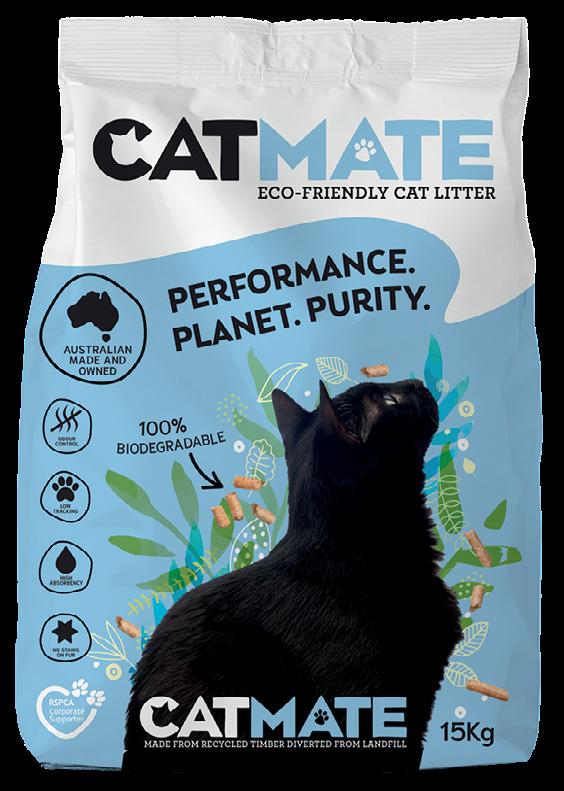
“Proviro Group moved with this trend by partnering with a large organisation to directly fulfil their customer orders and deliver direct to the consumer.”
–
“The animal bedding/litter sector has not been immune from challenges seen throughout the entire economy. Cost and availability of freight have created
Proviro has made changes to its logistical setups to counter the supply chain problems businesses all over the world are set to face in the year ahead.
“Due to the changes we have been confronted with over the past few years, we have adapted by transitioning from supplying all customers to predominately only supplying wholesalers. Proviro Group supports our wholesalers and their capabilities through their own distribution channels to deliver more efficiently to the pet retailers.” n
“Our relationship with the RSPCA and the opportunity to support many of their 2022 campaigns to raise money for animals in their care. We continue to supply the RSPCA with litter nationally.”
Despite getting set to celebrate a decade in business in 2023, Proviro Group continues to evolve, releasing new products across different markets, says Carolyn Probert, CEO, Proviro Group.
“With our team’s expertise we have adapted and taken on these challenges to maintain supply to our existing customer base while continuing to grow the business.”
Carolyn Probert, CEO, Proviro Group
Humane cat management is a key priority for RSPCA Australia according to Dr Sarah Zito, Senior Scientific Officer (Companion Animals).
Words ThomasAS ONE of the country’s leading sources of animal welfare science, RSPCA Australia works with governments and industries to progress animal welfare across a range of issues.
Dr Sarah Zito, Senior Scientific Officer (Companion Animals) at RSPCA Australia, said the past year has presented its fair share of challenges for the same Covid-related issues that many people have experienced, particularly for its shelters, which have seen many animals needing care.

“RSPCA shelters have continued to work hard to care for the thousands of animals that come through our doors, including by providing life-saving veterinary care as well as desexing, microchipping and vaccinating to give them the best chance of adoption.”
Looking back at the year past, Zito identified the RSPCA’s annual Welfare Seminar as a highlight, with the focus in 2022 being on climate change and animal welfare.
“Climate change increasingly threatens the welfare of all of the animals in our lives, and our Seminar brought together leading experts in animal welfare and climate change to cover topics such as the devastating effects of climate-induced events for animals and managing animals in disasters.”
Zito said that in the coming year, in addition to its frontline work caring for animals in need, the RSPCA will continue to use science-based animal welfare
knowledge to raise awareness of animal welfare issues, help people provide their animals with a good life, and advocate for the welfare of animals.
One of these issues is the management of Australia’s population of unwanted cats, which is a crucial issue for the RSPCA and the wider community, with key components of humane cat management including cat containment and pre-pubertal desexing of cats.
“In particular, we’ve seen increased interest in cat containment legislation across the country. Keeping cats safe at home reduces the risk of them getting injured by cars, dogs or other cats, and cats can be healthy and happy at home if the environment in which the cat is contained meets the cats’ physical and mental needs. The RSPCA advocates for and provides resources to help ensure that cat containment is implemented in a way that safeguards cat welfare.”
Zito explained that cats need an environment that not only provides for their basic needs but is also optimised to encourage the expression of normal feline behaviours (such as resting, hiding, perching, playing, scratching, scent marking, stalking, and pouncing), minimises stress, and promotes good health and welfare.
“The RSPCA provides the community with resources to help them keep their cats safe and happy at home, such as our Safe and Happy Cats microsite, and recommends that cats are desexed before puberty.” n
With an estimated 4.9 million pet cats in Australia, our feline friends are the second most popular pet, (Animal Medicines Australia). Despite our obvious love for cats, there are still an estimated 700,000 living in Australia’s towns and cities that are not directly owned by any person but have a dependence on humans (Legge et al. 2017). Animal Medicines Australia. Pets and the Pandemic, a social research snapshot of pets and people in the COVID-19 era Legge S, Murphy BP, McGregor H, Woinarski JC, Augusteyn J, Ballard G, Baseler M, Buckmaster T, Dickman CR, Doherty T, Edwards G (2017). Enumerating a continental-scale threat: How many feral cats are in Australia? Biological Conservation, 206, 293-303.
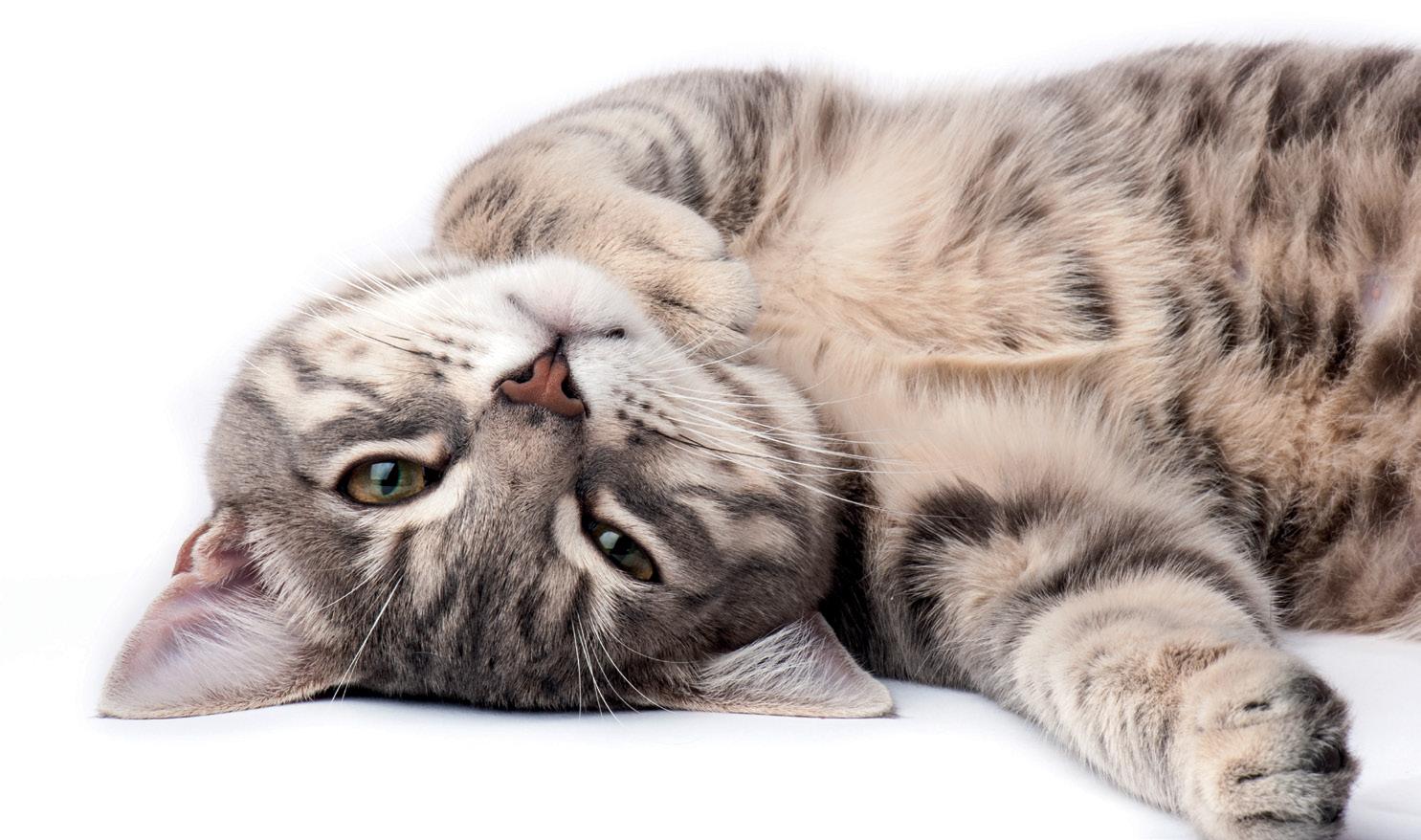
Oakley-Newell
“RSPCA shelters have continued to work hard to care for the thousands of animals that come through our doors to give them the best chance of adoption.” – Dr Sarah Zito, Senior Scientific Officer (Companion Animals), RSPCA Australia





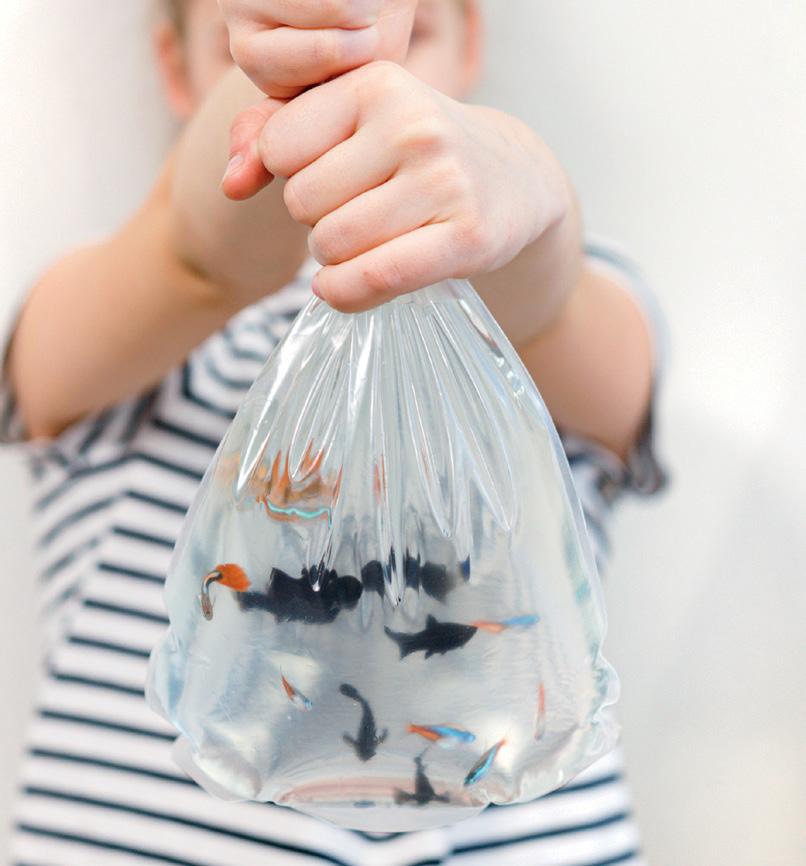


Scan me to catch up on the Pet Industry News podcast
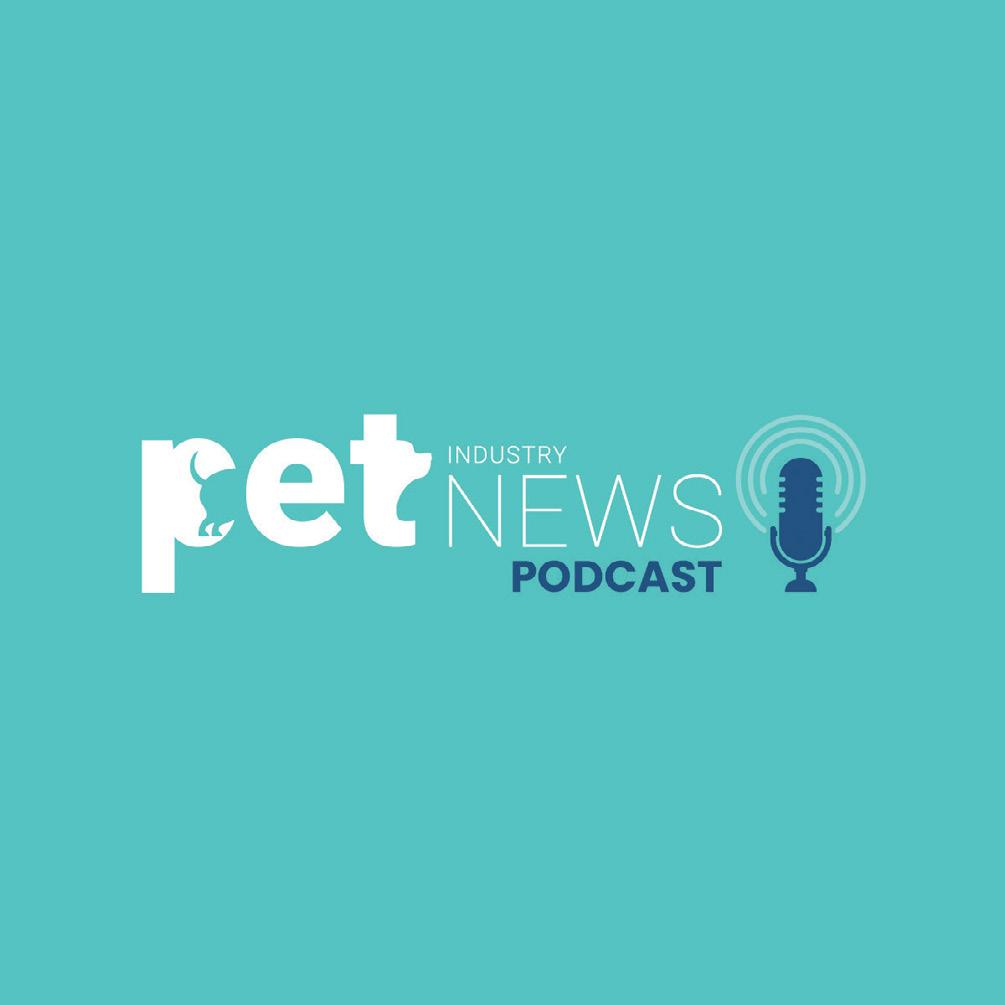
COMPANION ANIMALS are an important part of our lives and deserve the best; keeping them healthy and happy is a priority.
With pet owners becoming more focused on preventative healthcare to help maintain their furry friends’ optimum health, it’s no surprise pet retailers are more prominently incorporating wellness products into their stores.

We’re talking about pet food and supplements that boost the immune system, care for the gut, strengthen the joints, help with anxiety, improve skin, and more.
Dog owners across Australia cumulatively spent $20.5 billion in 2020 while cat owners spent $10.2 billion¹. Food leads as the largest category of spending for pets, followed by pet health related items.
The increased spending on wellness products and services has certainly been influenced by the increased humanisation of pets. Furthermore, studies have shown that on average pets are living longer. As pets get older and their metabolism slows with age, pet healthcare – particularly supplements – holds interesting potential for further dynamic value growth to 2027 in addressing the nutritional needs of senior animals, according to a Euromonitor International World Market for Pet Care report.
Pet owners’ focus on healthcare presents a huge opportunity for retailers to drive new business by carrying all the wellness products that pet parents need. But the key to success is more than having the shelves stocked with health product options.
“Staff education about pet health and products from veterinarians and manufacturers is crucial,” explained Janine Yeates, Marketing Manager of Just For Pets, one of the largest groups of independent pet retailers representing more than 45 stores around the country.
“Through Covid, our stores experienced up to 30 per cent growth in sales. Because people couldn’t go anywhere and found it difficult to see a vet during the pandemic, they went to pet stores to find a solution for their pet’s problems.
“Behaviour, anxiety, joint, skin, coat and more – many things can be treated in-store with foods, supplements, and training. It all comes back to how stores educate their customers, and that goes back to how their staff are educated. Staff need to have the knowledge behind healthcare products and services and sell them properly based on the animal’s individual needs.”
Bree Durie, owner of Just For Pets member Taree Pet Barn in NSW, has seen a significant increase in customers heading to the pet store to seek the healthcare advice of their knowledgeable staff.
“The pet store is not being used to replace the expert advice of a veterinarian but instead as a channel to help customers understand their pet better,” Durie explained. “It is true that a good portion of customers entering the pet shop are completely unsure on how to resolve the issues they may currently have with their pet. In some cases, people don’t realise there’s an issue. We have found that through asking the right questions of our customer we can better understand the customer and their pet’s relationship and find the true underlying issue at hand.”
Matthew Seychell, store manager of Pets Unleashed (also a Just For Pets member), has seen a huge increase of pets with separation anxiety since the start of the pandemic.
“Separation anxiety is not only on the rise, but it is now the most common health concern we encounter in our store,” he said. “Often the problem is misdiagnosed by our customers who believe anxiety is more of a behaviour problem and come in to talk to us around correction collars
The pet store is not being used to replace the expert advice of a veterinarian but instead as a channel to help customers understand their pet better.” – Bree Durie, Owner, Taree Pet Barn
and even surrendering the pet to a shelter. Thanks to a combination of products, staff training, food and supplements we have been able to help many families start on the road to curving this anxiety.”
Currently, the Queensland store’s most popular product in the wellness category is Paw Complete Calm by Blackmores, a natural product based around L-tryptophan and Vitamin B that helps with the pet’s natural nervous system and aids pet owners in beginning a training program.
“We have also recently taken on a new product, Nectar Calm and Relax, which is also doing very well with counter displays and sampling,” said Seychell. “The counter display can help us identify customers with pet health concerns even if we can’t see their pets. Nectar Calm and Relax is available through Real Pet Food and works very similar to Paw Complete Calm but is a powered to be added to water and can be helpful for fussy pets not wanting to eat the chew.”
Seychell shared a recent experience of a customer who came into the Pets Unleashed store with a rescue dog from the Animal Welfare League, adopted six months before.

“The staff noticed the dog was walking through the store licking its lips and pacing on the lead. We recommended the Paw Complete Calm and a looser lead walking method. This combination has helped the customer adapt their dog’s behaviour and thrive, breaking the habit and balancing their anxiety,” he said.
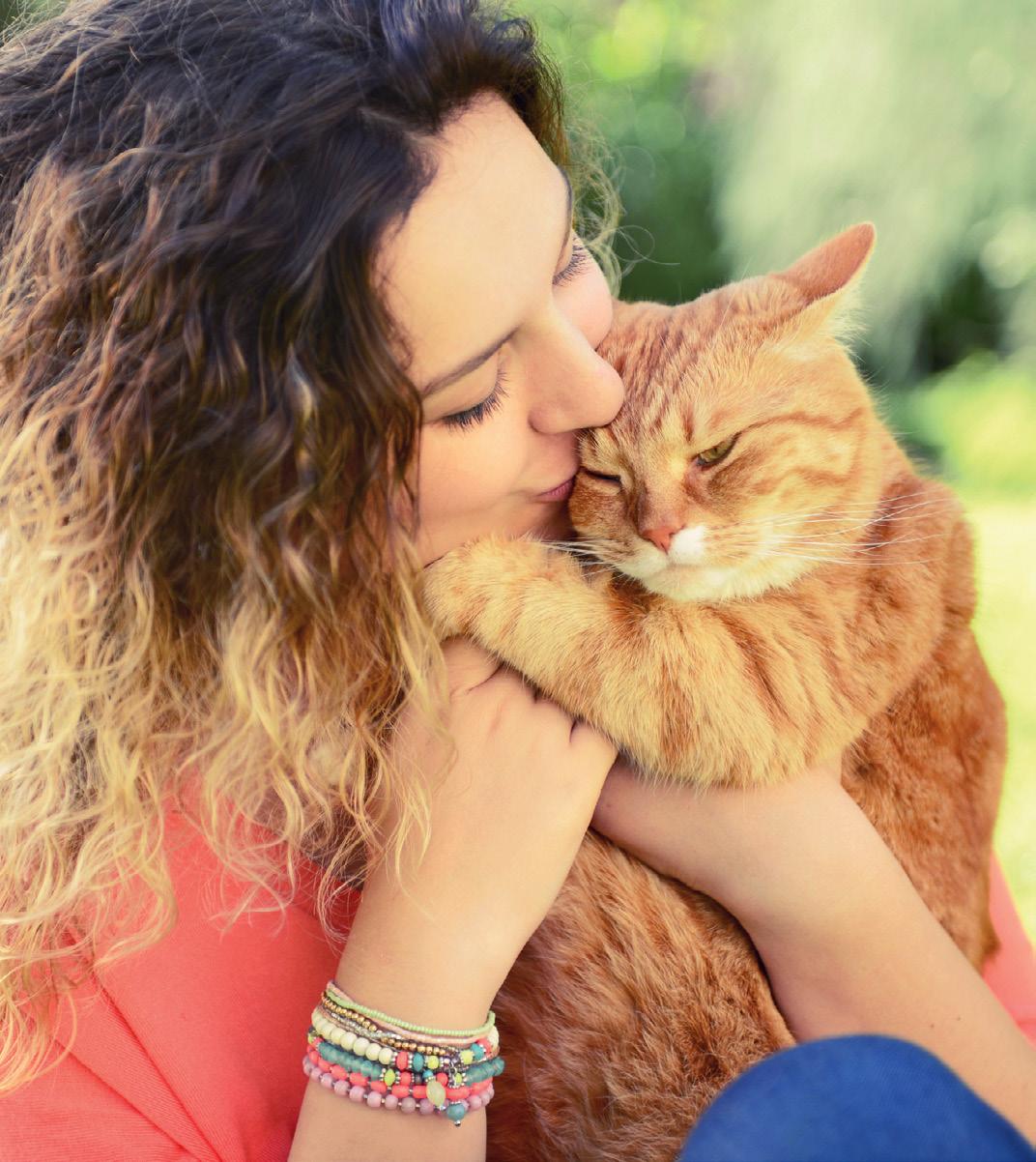
At Taree Pet Barn, Durie has noticed the dynamic between people and pets has changed significantly since Covid. When they were once at home with more flexibility in their day to be with their pets, pet parents are now returning to the office, going on trips and after school activities and more.
“All these things a pet does not understand nor accept as ‘normal’ and have led to a change in their behaviour. People have found their dog barking, being destructive, urinating uncontrollably and in some cases displaying aggressive behaviour towards particular people,” said Durie.
To deal with barking problems, most people are told to put a barking collar on their dog, not realising that if the barking has come from a place of stress and anxiety, we could do more harm than good in using the collar as the corrective measure.
“When customers visit us, we try to ‘unpack’ the problem as to what triggered the change in behaviour, why all of a sudden, the (unwanted) behaviour started and a more appropriate measure to try and address the issue at hand,” she said.
“Many supplements exist to help in alleviating the stress felt by our pets in these situations and are becoming a popular alternative to help correct the behaviour. As we go through time, new supplements will emerge to further cater for our dogs’ wellbeing and needs. As a pet store, we will continue to find the best products for our customers and help them along their journey with their pets.”
At Just For Pets, Yeates explained that to educate staff about wellness products, retailers need to be reaching out to the product manufacturers to learn what training is available. While some manufacturers, like PAWS Blackmores, have an online training portal, many other brands offer instore training to ensure retailers are educated to be able to sell the product.
“Retailers need to choose manufacturers that put health first and they can do that by asking about the science behind the product, such as case studies,” she said.
Seychell shared an example of excellent product information and training for pet store staff provided by Nectar of the Dogs, including a one-hour webinar training plus short product refresher videos and user generated content videos from pet parents.
What also contributes to retailer’s success in selling wellness products is
“Staff education about pet health and products from veterinarians and manufacturers is crucial.”
– Janine Yeates, Marketing Manager, Just For Pets
building strong partnerships in the pet industry, particularly veterinarians, and align national/local calendar events with education seminars to introduce healthcare products, such as pet dental month, winter care and arthritis, tick season etc.
“Just For Pets members have a monthly focus, for instance senior pets, anxiety or parasites, so that we can give stores the opportunity to educate the customer and offer a solution,” said Yeates.
“We get suppliers on board, such as dental chew companies, to do displays and showcase their products more easily and that enables staff to have a conversation with customers in-store.”
Pet retailers are also using healthcare products as cross-sell and upsell opportunities to boost revenue. While a customer may come into a pet store looking for a product, the team member may introduce the option of pet vitamin supplements while fulfilling the need the customer was initially looking for and allowing them the space to browse the selection on offer.
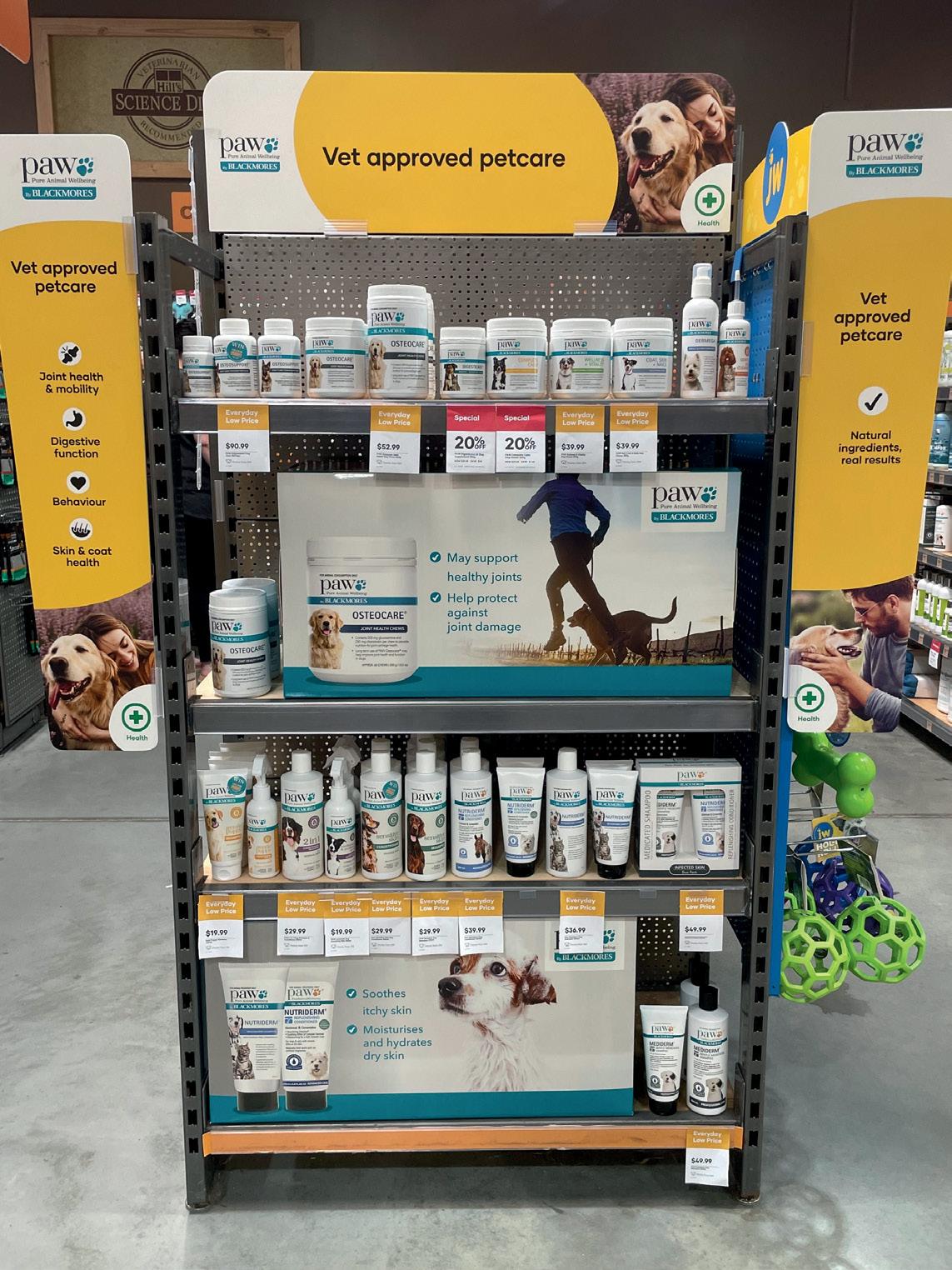
“With reduced access to vet appointments caused by staff shortages, pet owners are increasingly tackling basic healthcare needs at home, such as first aid for wounds, plus skin, ear, eye, and dental care products, and they still need help along the way. Pet stores are well positioned to offer the assistance,” said Yeates.

With so many pet wellness products on the market today, how can retailers choose a reputable pet healthcare brand that vets, and pet parents can trust? Anthony Hillier, Pet Health Business Director Blackmores Group explained the four key elements:
• Vets are key: The vet is the most important source of information for a pet parent so it’s vital they play a huge role in the credibility and recommendation of a pet health brand.
• Education: While pet parents love and care for their pets as if they would the rest of their family, the reality is that pets aren’t people and as a result their health needs are different to ours.
• Science and evidence: All ingredients and formulas have the evidence to support their use.
• Quality and transparency: Pet parents want to know that the products their pets are taking are made with high quality ingredients and contain the correct level of actives to provide the result that they claim.
Hillier said when it comes to PAW by Blackmores (PAW), vets are the cornerstone of the brand, with its range focusing on skin and coat health, joint health, digestive health, mental health and wellbeing, liver health, ear care and grooming.
“Not only are all our formulas developed by our in-house team of vets, but we also work closely with specialist vets in the industry to ensure we are developing products that answer to their patient’s needs,” he said.
“PAW also seeks to ensure education is at the forefront of everything we do. Both to practitioners and consumers. Whether it be about an ingredient, formula, product, health concern or even new research.”
Sharing advice to retailers about selling healthcare products, Hillier first highlighted education.
“Spend some time reading product labels at the shelf, speak to your reps or complete learning modules online,” he said.
PAW, for instance, provides evidence-based natural pet health education for pet industry professionals, including e-learning specifically for retail staff members who are able to access e-learning modules, fact sheets, articles and other resources anywhere, anytime and from any device.
“Recommend brands to customers that are transparent and reputable. There are so many products out there, it can be hard to know what’s
“For us it’s so important to ensure we are providing pet parents, retailers and practitioners with tailored information and support to ensure they feel confident caring for their customers and pets.”
– Anthony Hillier, Pet Health Business Director, Blackmores GroupShowcasing the Paw by Blackmores range in-store
right for each pet that you may see in store. Look for the brands that are clear with their formulas, doses, and ingredients and those that are recommended by vets,” said Hillier.
“If you don’t know, refer to a vet. It’s ok to not know all the answers. Vets train for many years to understand the health needs of pets so if a pet parent is asking questions that you think you can’t answer you are better off recommending they consult their local vet. Pets are family after all, and we want to make sure they are getting the care they need.”
Looking at the future of animal healthcare products, Hellier anticipates a continuation of pet humanisation and the mirroring of human trends into the pet world.
“With an increase in small and designer dog breeds, personalised care will increase in importance for pet parents. Brands will need to ensure they are creating products that cater for the differing health needs of breeds, sizes, and species,” he said.
“We are already starting to see a shift in perception of preventative versus curative care. Forty-five per cent of pet parents currently say they would prefer prevention over cure.”
The future also holds huge opportunity in the feline space when it comes to natural health care. While today, the category is driven mainly by canine offerings, the popularity and growth of cats is picking up speed, said Hillier.
“Natural pet health is a reasonably new category and knowledge around how to best care for our pets wholistic health is limited,” he said. “So, for us it’s so important to ensure we are providing pet parents, retailers and practitioners with tailored information and support to ensure they feel confident caring for their customers and pets.”
Motivated by the health, happiness and wellbeing of companion animals, pet retailers want to be there for people and their pets every step of the way.
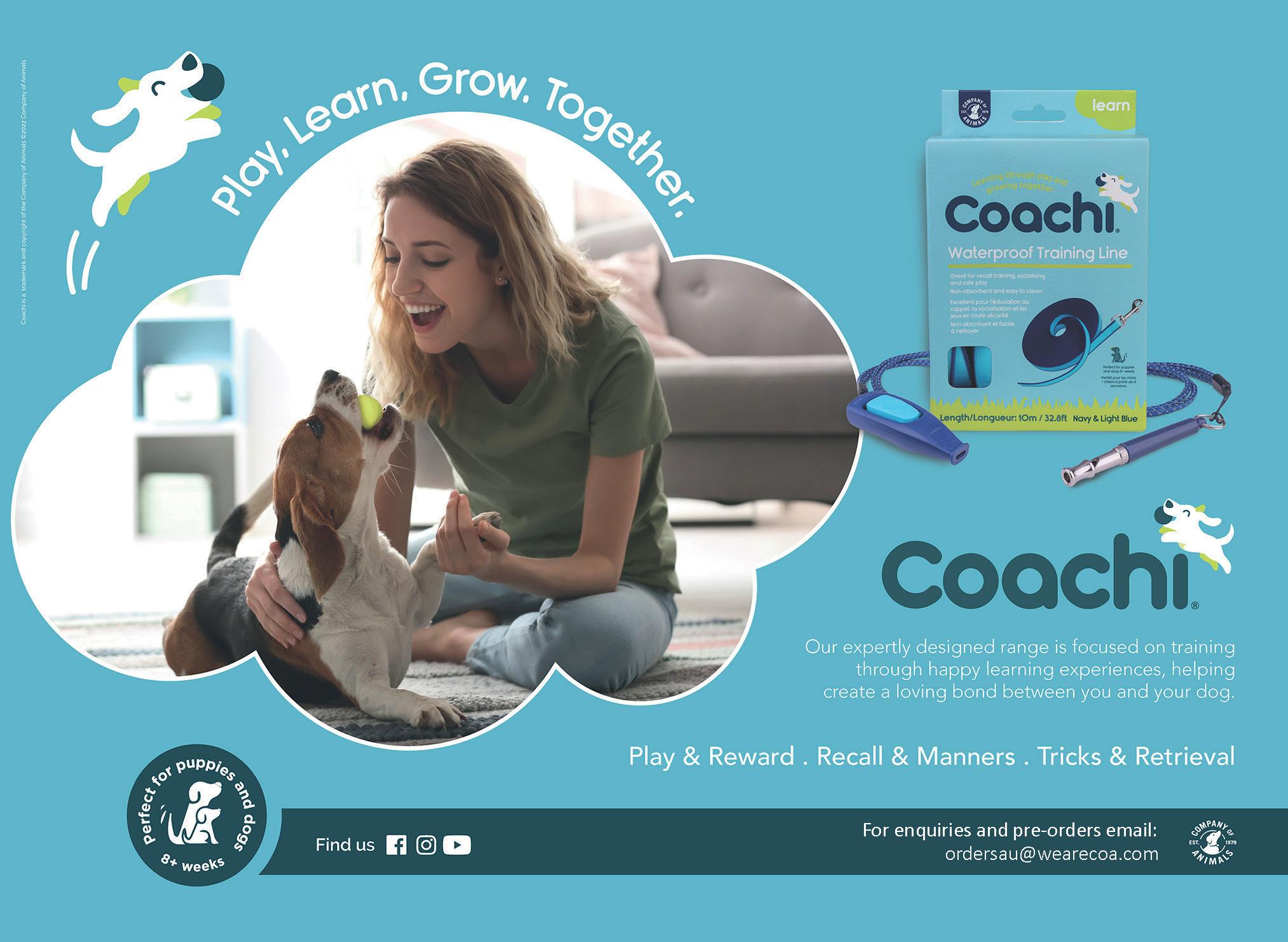
To help pet parents provide their four-legged friends the best health care possible, retailers overseas are partnering with pet insurance companies to offer affordable and meaningful pet insurance cover.
Recently, UK pet care retailer Pets & Friends signed a new partnership with Animal Friends Insurance to give customers exclusive discounts. Reportedly the scheme will provide Animal Friends customers with a £10 voucher when they spend £30 or more with Pet & Friends to spend online at petsandfriends.co.uk, alongside bespoke content and handpicked Pets & Friends product reviews to help with their pet’s health and wellbeing.
In return, Pets & Friends customers will benefit from access to Animal Friends pet insurance policies, including various types of cover to suit specific pet needs, a selection of policy excess options to help manage monthly costs, and a dedicated vet portal that allows vets to claim on behalf of pet owners.
American retail giant Walmart has also partnered with pet-related digital content publisher The Dodo to offer pet insurance branded as “Fetch by The Dodo” (in addition to other pet-focused initiatives, such as the Walmart Pet Lovers box featuring toys, treats, branded dog apparel and more), according to a post from Vox Media, The Dodo’s parent company.
It’s clear that through education, product awareness and strong partnerships, retailers can achieve great success with healthcare offerings in-store. n
Source: ¹ Animal Medicines Australia, Pets and the Pandemic report
MORE AUSTRALIANS than ever are choosing reptiles as their pet of choice with numbers of the scaly sidekicks more than doubling from 194,000 to more than 426,000 between 2019 to 21, according to the Pets and the Pandemic report from Animal Medicines Australia (AMA).
As flexible working arrangements have become the new norm post-pandemic, pet ownership has accelerated with the Pets and the Pandemic report from AMA revealing almost 70 per cent of households now own at least one pet.
Contrary to some media reports of pandemic loneliness driving pet acquisition, the report found it was opportunity rather than desperation driving sales. Most households reported it was the ability to work from home that finally allowed them to acquire a longed-for new animal.
Jumping from two to four per cent of all pet ownership between 2019-21, reptiles are increasingly popular because they are generally small, easy to maintain, non-allergenic and apartment friendly.
“Reptiles have wide appeal due to their compact size, relative ease of maintenance, and not least because they are incredibly fascinating to watch,” says Ben Dessen, Retail Manager at Kellyville Pets.

“Making no noise, nasty odours or messy fur to worry about, people with allergies to pet dander are particularly well suited to a scaly companion,” he says.
Tim Mensforth, Managing Director of iPetz, a reptile enthusiast and breeder with almost 30 years of experience agrees, adding: “With a lot of people moving into townhouses or units where you’re not allowed to keep a dog or a cat, people are heading towards native animals like reptiles.
“They’re very low maintenance, you can feed them every couple of weeks and go away on holidays without having someone come in to look after them,” he says. “They’re fantastic animals.”
Although relatively easy to care for, there’s still a range of dos and don’ts relevant to caring for reptiles that everyone considering buying one should consider, says Dessen.
“While reptiles have less maintenance requirements than more traditional pets – there’s no grooming or brushing required for a bluetongue lizard,” he jokes. “They do have a very specific set of requirements that need to be met for them to live a happy, healthy, and enriched life.”
“Reptile keeping comes with a lot of responsibility, like with all pets,” says Dr David Vella, Director of Sydney Exotics and Rabbit Vets.
As a vet who loves treating reptiles, Dr Vella says counting the cost from a financial, spatial and time management perspective before investing is imperative.
“Researching the specific requirements for a particular species is vital for successful keeping,” he says.
“Different species require different husbandry and feeding. There are some reptiles that are easier to keep than others, while some species require a lot of experience to keep successfully.”
Dessen agrees, saying it’s crucial to weigh the responsibilities carefully as reptiles are long-lived with specific requirements, so caring for them is a long-term commitment.
“All reptiles will require a specialised enclosure, heating,
look at the all-important dos and don’ts of reptile care according to the experts.Words Rachel White
“Sharing the home with a reptile connects people with nature by bringing a small slice of that animal’s natural habitat into the living room.”
– Ben Dessen, Retail Manager, Kellyville Pets
lighting and thermostat as well as natural furnishings and a varied diet,” he says.
“If cared for correctly, some reptile species can live for a very long time, with pythons living for 20 years or longer and turtles living for an amazing 50 to 60 years. So, it’s critical to get things right from the start.”
The big thing with reptiles is proper heating and lighting, according to Mensforth, who says it’s all about simulating the reptiles’ native tropical environment.
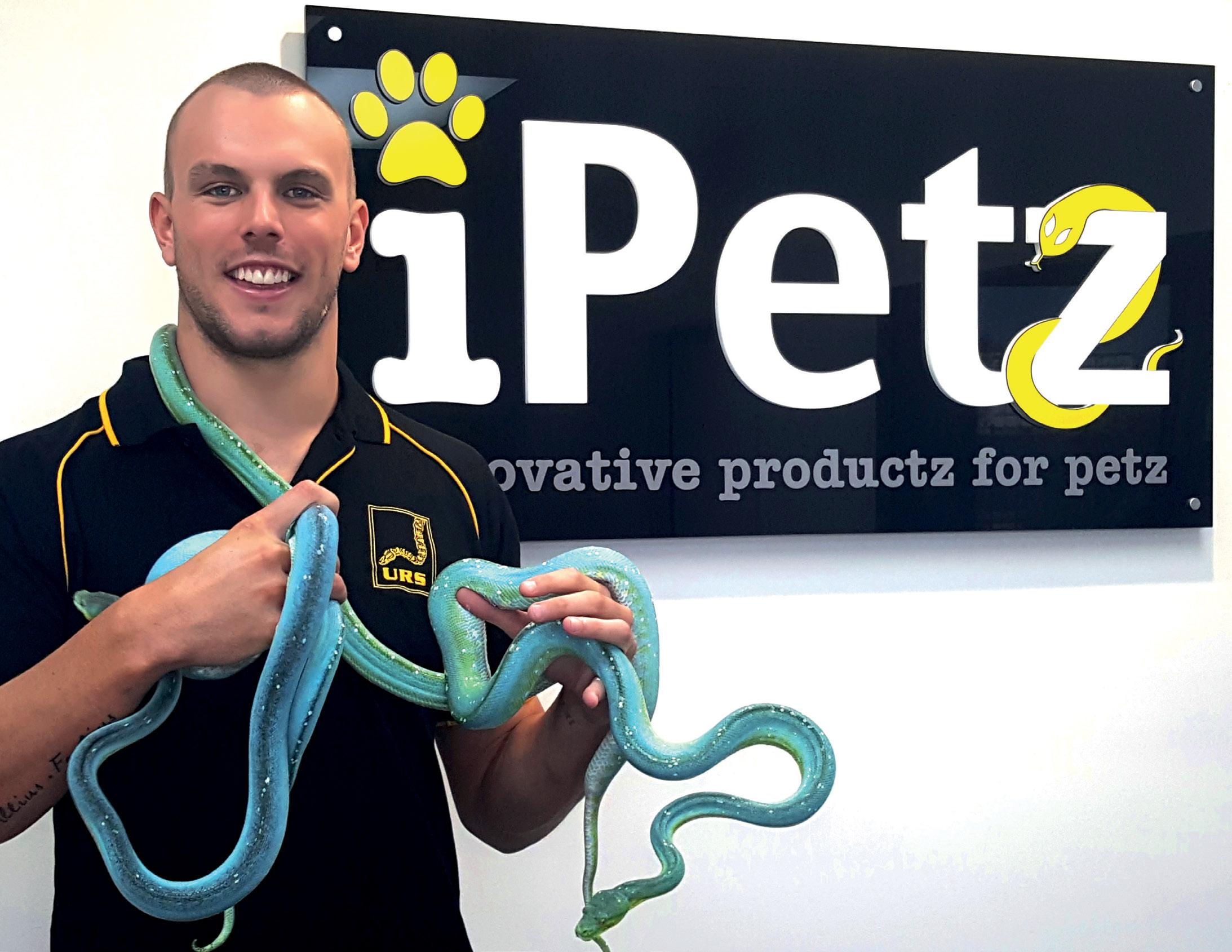
“Most of your reptiles are tropical animals, not all of them, but most of them are, so you have to make sure their caging requirements are correct.
“The initial outlay is going to cost you a few dollars, but if you do it properly the first time the animal is going to live for a long time,” making the investment well worth it, he says.
According to Mensforth, the ideal temperature for most reptiles ranges between 28 to 32 degrees Celsius. Setting up the cage with a cool and warm end allows them to thermoregulate their body temperature throughout the day.
“The best entry-level reptiles for children and families include the central bearded dragon, blue tongue lizard as well as children’s and spotted pythons due to their small size and docile nature,” says Dessen.
“Reptiles such as geckos are fascinating to keep but are
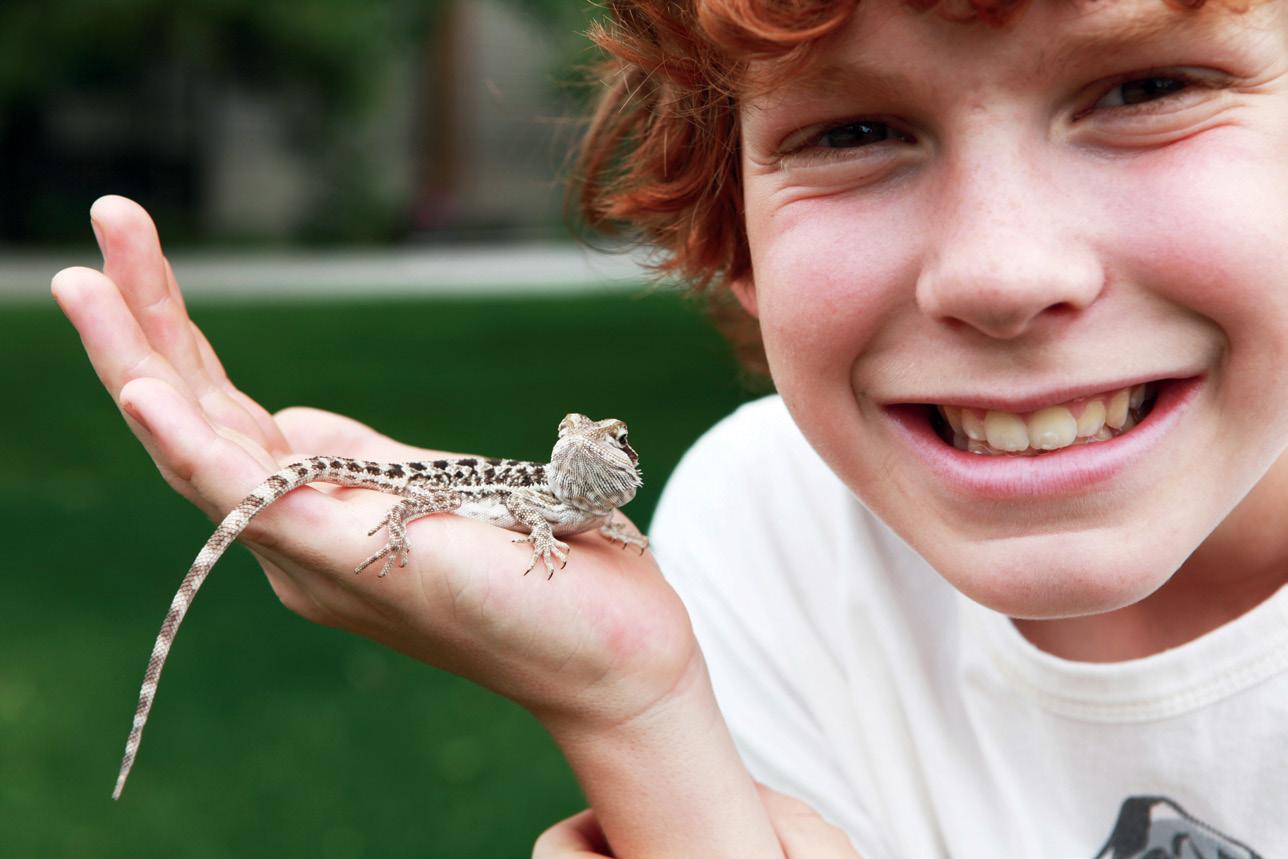
very delicate and do not tolerate handling, so are not as well suited to younger children,” he says.
“Turtles are by far the highest maintenance pet reptiles, requiring large tanks and regular water changes.”
Dr Vella adds that it’s wise to keep your expectations realistic when starting. “Enclosures can be adapted and increased in size with the growth of the reptile,” he says.
“Young turtles, for example, can be kept in a 1.2m tank and small lizards and snakes can start off in a 60cm long enclosure.”
Josh Cox, Founding Director of Reptile Encounters, a mobile zoo based in Melbourne, stresses the need to be a responsible owner. All too many times, he’s seen reptiles abandoned or mistreated because of a lack of care.
“Absolutely all species of animals and reptiles are unique and have their own individual requirements,” he says. “It is the responsibility of the retailer and customer to be across this before acquiring those species.”
Cox says the “size, shape, style of enclosure, [type of] food and frequency of feeding, heating requirements, thermostats, UV requirements, substrate, the lifespan of the animal,” are all key factors to consider before investing.
Prospective owners should ask lots of questions about certain species before committing. Questions like: ‘Can they be housed with other animals of the same or different species? And what to do if the animal needs veterinary care?’
“If you can’t commit to taking care of the animal, providing the right environment and food, don’t take the animal on in the first place,” says Cox.
If you’re a reptile novice, it makes sense to start with “what we call the pet shop animals,” says Mensforth.
“These are introductory species to a lot of people when they start keeping reptiles, it’s usually your central bearded dragon, children’s pythons, spotted python, eastern bluetongue.”
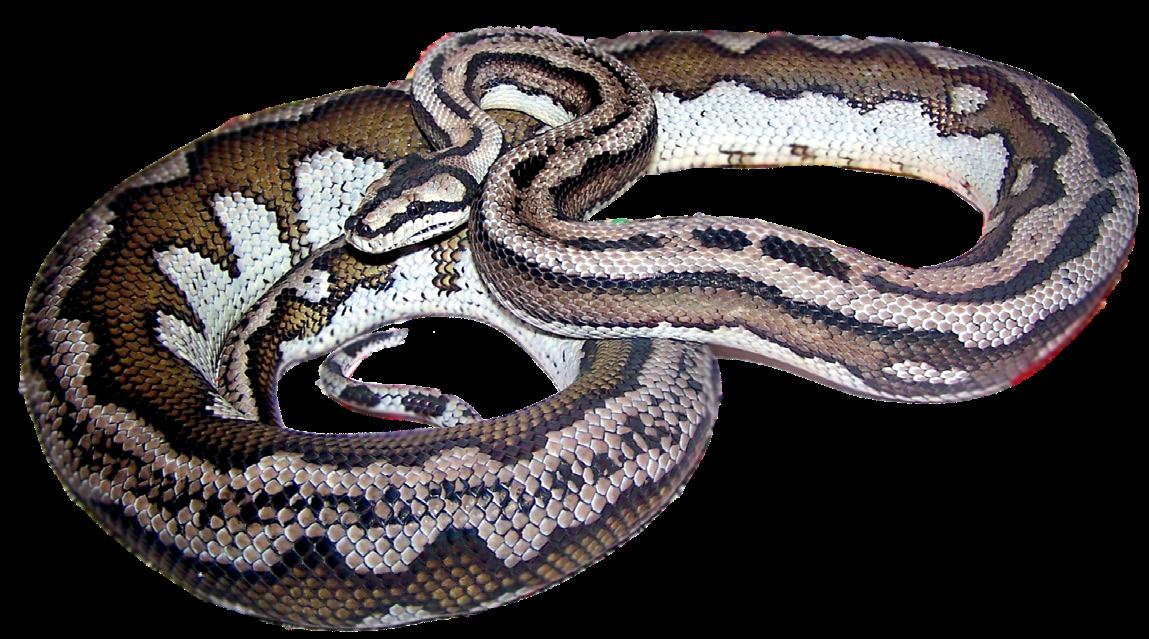
Although, Mensforth warns prospective reptile owners to proceed with caution. In his experience, once people have one reptile, it’s usually the case that “they can’t stop until the house is full and they’ve got to move”.
The Pets and the Pandemic report cited at the outset, that participants said pets of all sorts had positively impacted their lives throughout the pandemic, primarily as they provided joy and comfort and were good for mental health.
“Sharing the home with a reptile connects people with nature by bringing a small slice of that animal’s natural habitat into the living room,” says Dessen.
With so much to be gained from keeping a reptile, it follows that investing in specialist care is well worth the time, effort, and money necessary.
“There are more and more vets getting up to speed with native animals, including reptiles,” says Mensforth. For new reptile owners, he recommends finding the best vet through your local herpetological society.

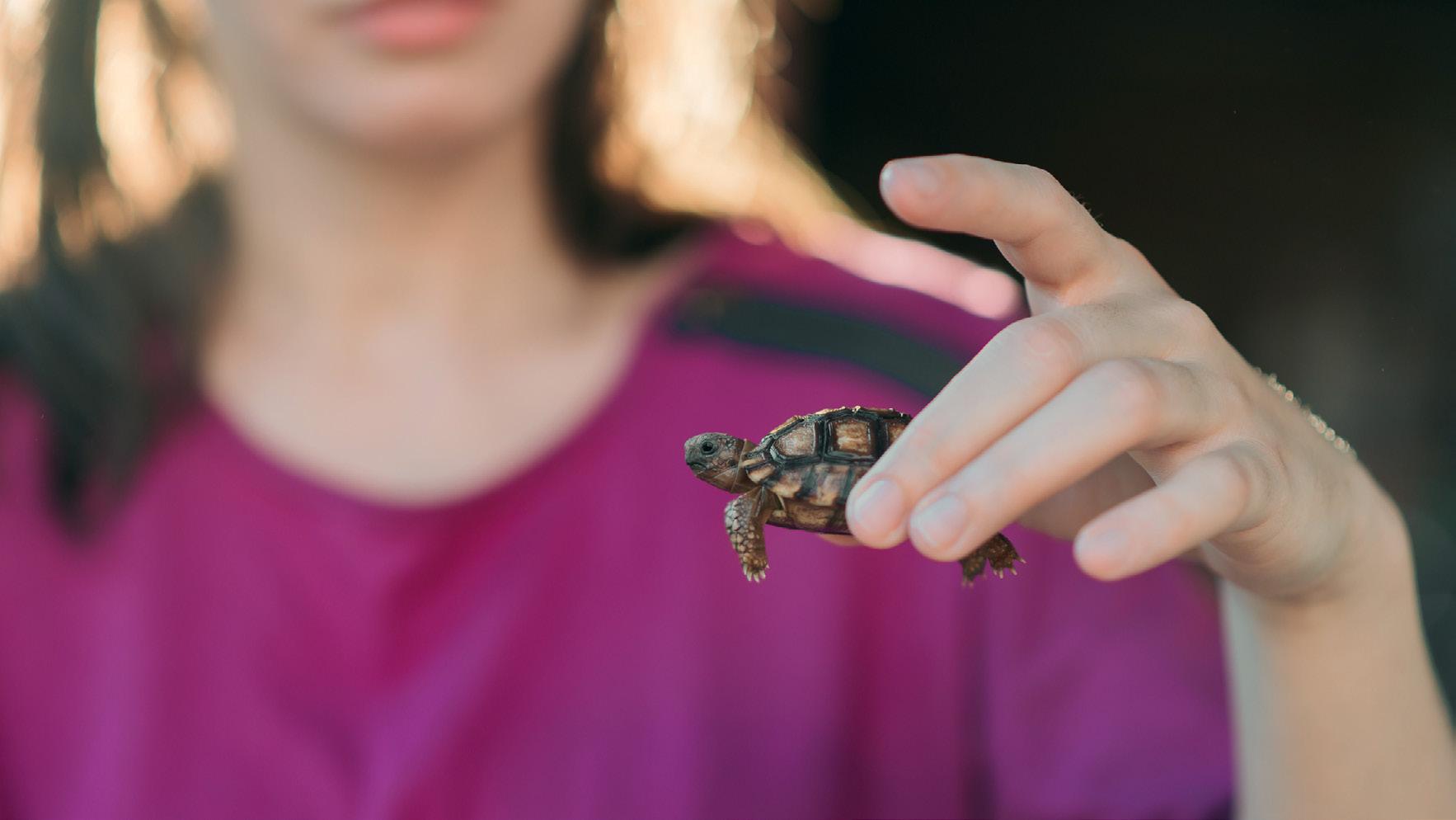
“For someone who is starting off, they are an ideal place to go and talk to people and find out who are the best vets,” he says. “You can even get on Facebook and join a few groups” to ask for recommendations, says Mensforth.
Dr Vella says: “Specific specialisation in reptile medicine and surgery is a very difficult accreditation to acquire. Most reptile vets that see reptiles in Australia have a special interest in reptiles but are not specialists in this field.”
Still, that doesn’t mean seeing a vet without official specialisation is a waste of time. “I encourage any vet that is evenly remotely interested in seeing reptiles to do so,” says Dr Vella. “They are fascinating creatures, and we have
“If cared for correctly, some reptile species can live for a very long time, with pythons living for 20 years or longer and turtles living for an amazing 50 to 60 years. So, it’s critical to get things right from the start.”
– Dr David Vella, Director, Sydney Exotics and Rabbit Vets

Cherish Pet Food, Australia’s own scientific premium pet food, is excited to launch its 8kg Amazing Adult and 8kg Mindful Mature Small Bites to add to its existing range of pet food.
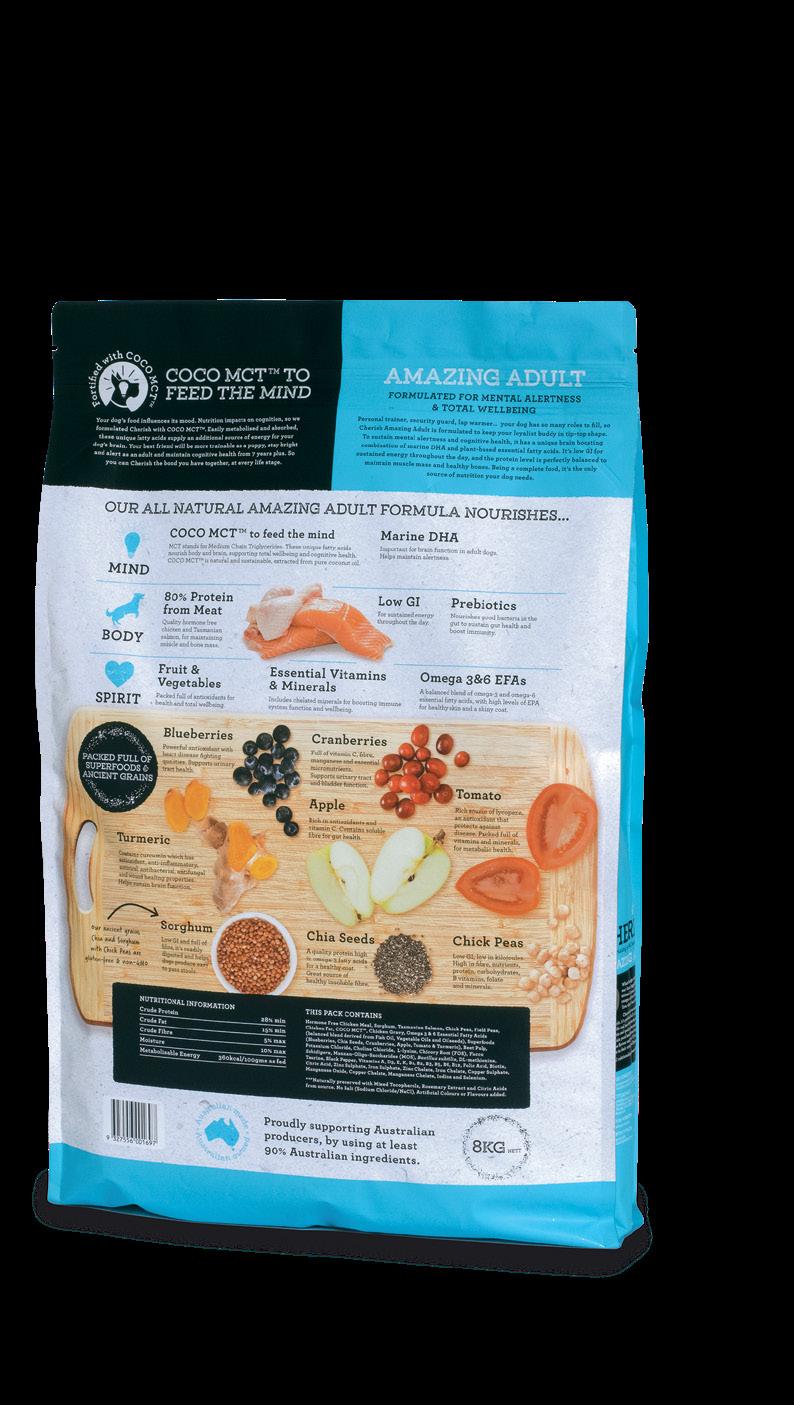
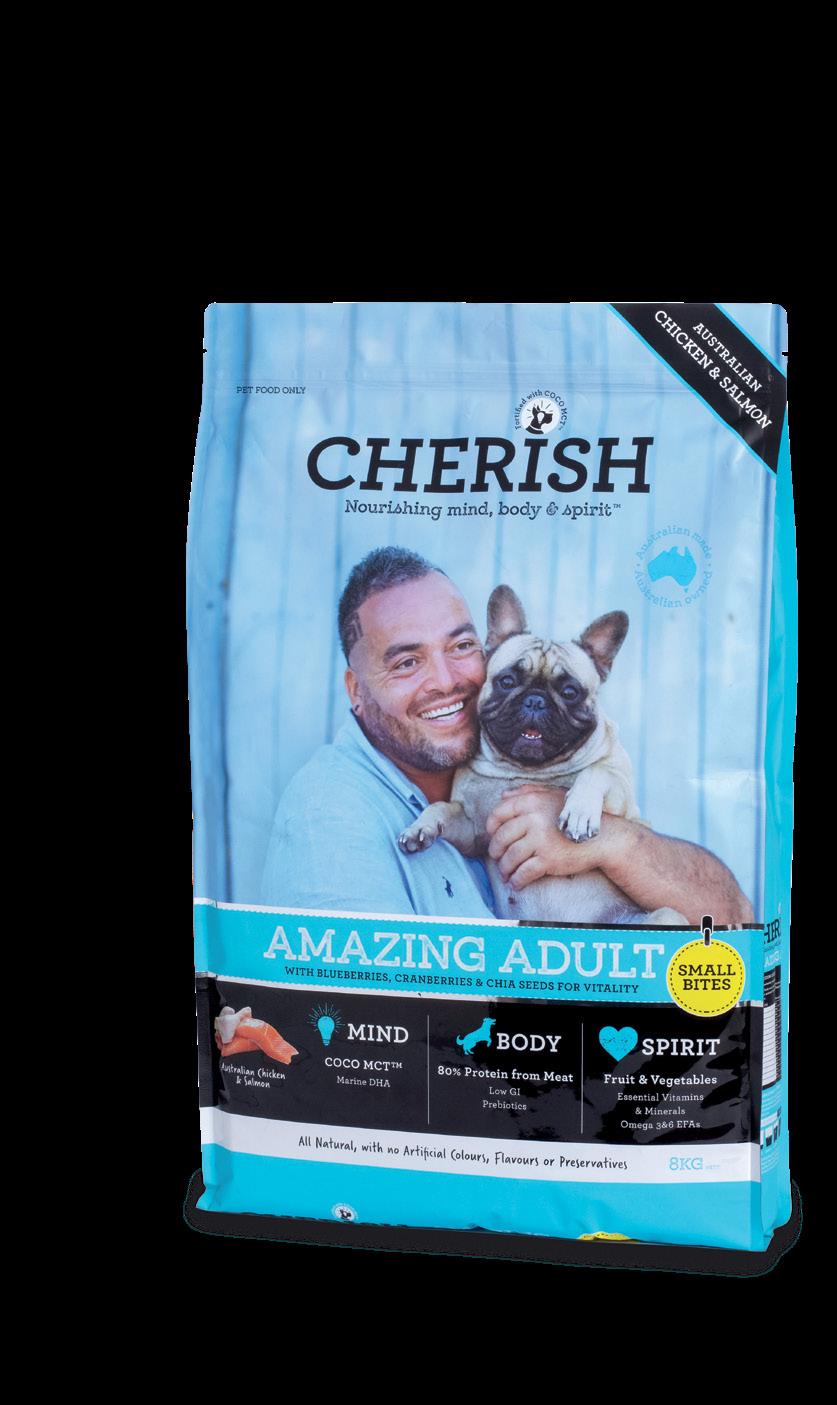
Scientifically formulated using Australian farmed ingredients, the small bites range is aimed at providing quality nutrition to your smaller or senior canine companions.
Cherish Pet Food is packed full of superfoods: antioxidant rich blueberries, cranberries, and turmeric; two types of prebiotics to assist gut health and immune function; and the allimportant brain boosting combination of medium chain triglycerides (extracted from coconut oil), DHA, amino acids, selenium and iodine to support brain function. A scientific balanced blend of omega-3 and omega-6 essential fatty acids, with high levels of EPA is also included for healthy skin and a shiny coat. It is gluten free and low GI for sustained energy throughout the day, and the protein level is perfectly balanced to maintain muscle mass and healthy bones. Being a complete and balanced food, it’s the only source of nutrition your dog needs.
Made in an Australian-owned AS-5812 certified manufacturing facility and with every ingredient safely within the acceptable range of intake as set by Association of American Feed Control Officials (AAFCO), you can be assured Cherish Pet Food meets the nutritional requirements of your pet with the quality you expect.
Please visit cherishpetfood.com.au/wholesalers to locate a wholesaler in your state.
Gut health plays an important role, not only in the uptake of nutrients but also in disease prevention, metabolism balance, behaviour, and general vitality. A survey in the US has shown that gastrointestinal issues are the most common issue in dogs (26 per cent) and cats (31 per cent).
Additionally, other frequent health issues can be exhibited as the tip of the iceberg and may be attributed to damaged gut health, such as skin, ear infections, allergies, obesity, and metabolic issues etc.
Recent research in both humans and animals has proven that immune status could shape gut health by affecting gut morphology, microflora ecology and metabolic pattern, and pathogen virulence. Numerous stressors may compromise gut health mediated by the immune system, particularly overshooting inflammation, and be hard to avoid in daily life, including food composition and regime, pathogen, environment, and stress. Impaired gut health with unregulated gut inflammation is shown to be associated with malnutrition, chronic diseases, stress development, depression, and low resistance. So gut and immune health is the critical foundation to secure the vitality and wellbeing of our furry friends.
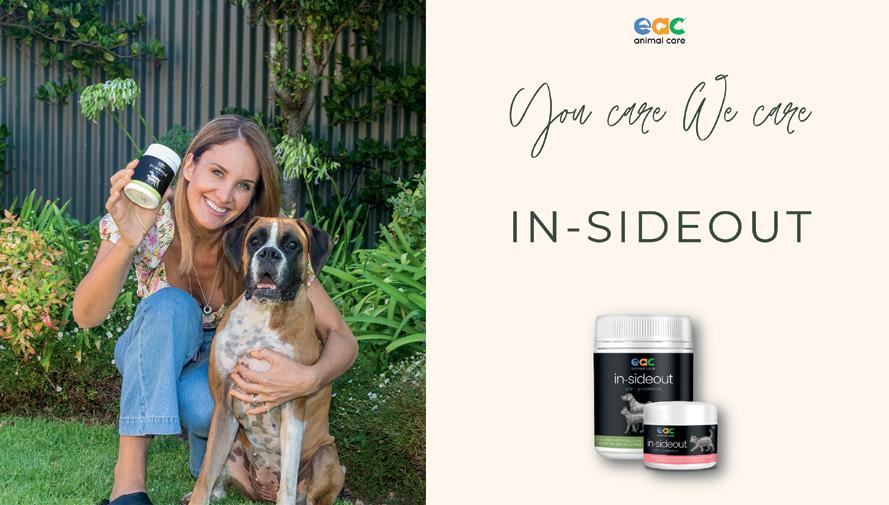
In-sideout cat and In-sideout dog are premium nutraceutical products designed to build up a robust gut and immune health based
on Balanced Immunity Management (BIM). BIM technology is developed by the EAC research and innovation centre (RIC) led by Dr Danny Xue, Head Scientist and Immuno-Nutritionist of EAC animal care.
BIM is a holistic approach that includes a three-step solution:
• Predisposing factors control
• Immuno-regulation
• Metabolic loss compensation.
This provides a strong tool to support pet health with a wide range of applications including daily maintenance, prevention and treatment support, and recovery. Top quality ingredients in In-sideout work synergistically with proven modes of action to ensure the best results. In-sideout is the leading brand trusted by thousands of professionals and pet owners.
With the mission of advancing animal health, EAC Animal Care focuses on delivering quality products, science, and education to all animal lovers. As an Australian business, EAC has proudly committed five per cent of turnover to R&D to stay at the forefront of innovation and pledges a commitment to support and lead change within the animal health industry. With all this and more, EAC can continue to deliver what is in the DNA of the team: you care, we care.
To learn more, email admin@eacanimalcare.com or phone 08 7076 9000 or visit eacanimalcare.com.
Make treat time even more tail wagging fun. Simply smear the lick pad with Doggylicious Doggy Butter to keep your dog entertained. It’s the perfect distraction during brushing, grooming, or to extend treat time.
Licking is known to release endorphins, which helps your dog feel calm. The Doggy Butter Lick Pad also reduces calorie intake by making small, tasty treats last longer, which in turn reduces the risk of over feeding.
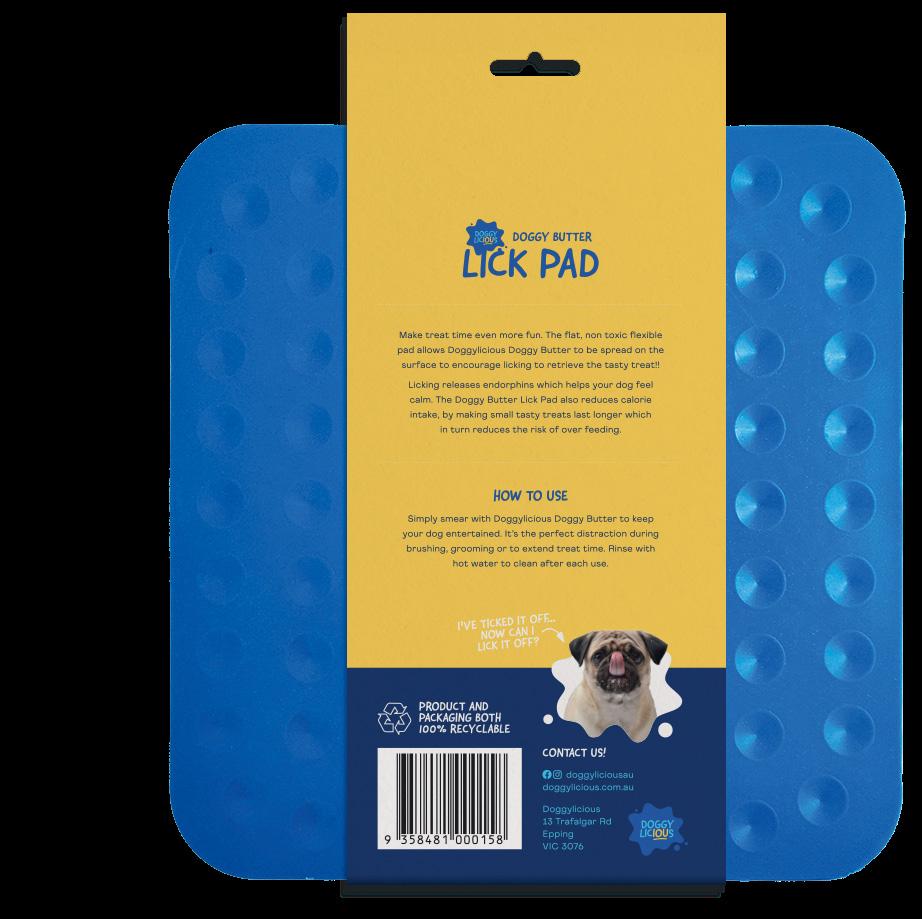

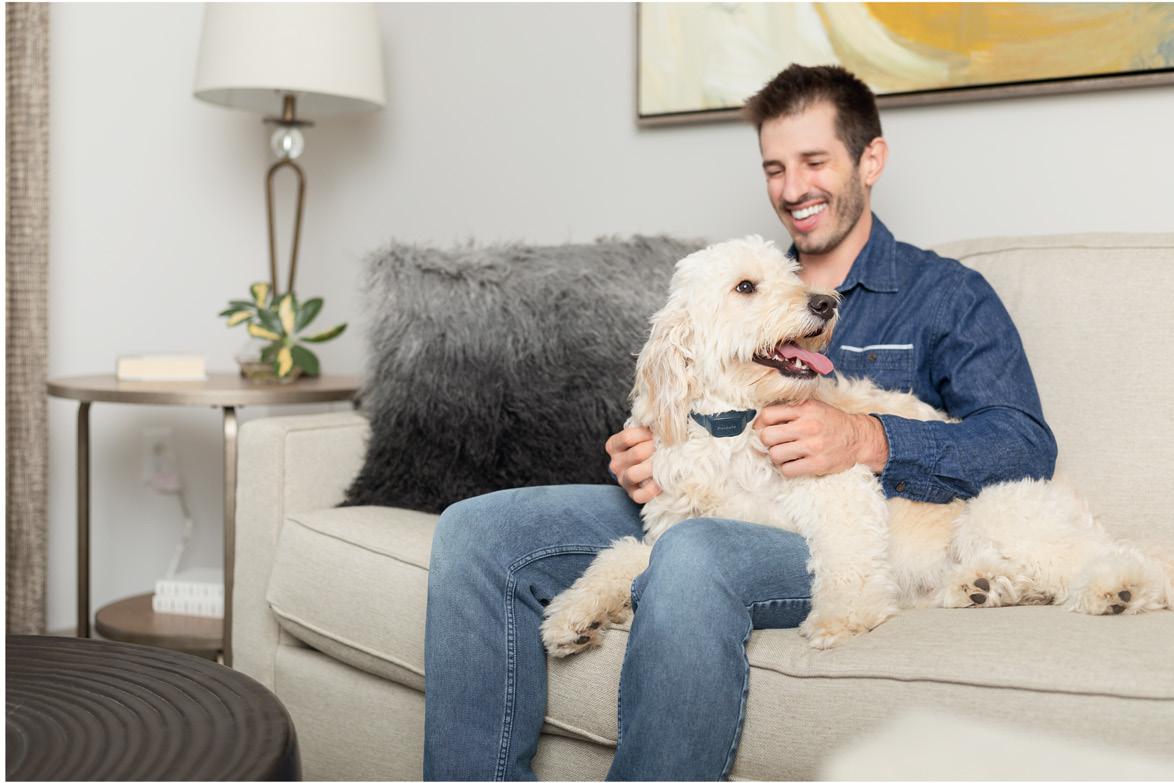
Please contact woof@doggylicious.com.au if you’re interested in stocking this product and the popular Doggy Butters at wholesale pricing.
The PetSafe Audible Bark Collar offers a unique pet training solution using innovative sound technology to safely detect and distract from barking.

A global leader in pet product solutions, the PetSafe Audible Bark Collar was the winner of the Pet Independent Innovations Awards Bark Control Product of 2022.
Zarqa Ali, PetSafe Brand Australia Marketing Manager, said the Audible Bark Collar gives dog owners an alternative option when looking for the perfect pet training solution.
“We have incorporated SoundBurst technology into the collar that will effortlessly identify your dog’s bark and immediately release a distracting sound designed to halt the bad behaviour.
“The collar can deter ongoing nuisance barking and put pet parents’ minds at ease when leaving their dog home alone.”
While wearing the Audible Bark Collar, a dog will never be falsely corrected through a loud noise or another dog’s bark because the collar’s dual-detection feature must sense both vibration and sound before activating. The collar is waterproof and rechargeable for up to 40 hours of use.
“The Audible Bark Collar offers a new option of bark control that allows a broader group of dog parents to make the best training choices for their pets and helps to enable peaceful and happy living experience with our pets.”
If you are interested in selling PetSafe products, visit intl.petsafe.net/en-au or contact intlemea@petsafe.net.
Hypro Premium is excited to announce the launch of its new line of premium pet food. In addition to its current grain-free range, it now has a selection of premium wholegrain products that deliver all the nutritional benefits that dogs need to thrive.

But it beggars the question – why wholegrain? Hypro Premium believes in crafting only the highest-quality pet food from premium Australian-made ingredients.
Hypro Premium understands that no two dogs are made the same. They have different body types, different health requirements and different needs when it comes to what they eat. So, they have created a new range of dry food that includes the same nutritional benefits as their existing products – but with the added benefits of wholegrains.
The new wholegrain range packs your best friend’s diet with carbs, fibre, and plenty of energy from things like brown rice and oats.
There’s a reason why most dogs – and their owners – love having
wholegrains in their diet. It’s because there are countless nutritional benefits for pooches. Hypro Premium wholegrain products are:
• Packed with plenty of wholesome nutrients to keep your dog happy, healthy, and energetic.
• Full of healthy carbohydrates, fats, and antioxidants.
• Supportive of your pet’s healthy skin and coat, as well as a great way to boost their immune system.
• 100 per cent Australian Made and Family Owned
Whether it’s wholegrain or grain-free, Hypro Premium provides highquality dry food to keep pets happy and healthy.
Hypro Premium wholegrain comes in a variety of flavours for both adult dogs (Fish & Potato, Chicken & Brown Rice, Lamb & Brown Rice) and puppies (Chicken & Brown Rice) for RRP $126.
If you would like to stock the range, please contact the team on 1300 070 113 or at info@hypropetfoods.com.au.
Even with the best of care, modern-day horses experience stress.
Competitions, strenuous work, transport, dental work, farrier visits, illness, long days competing or working, extreme heat and humidity, extreme cold, time off feed or other changes to your horse’s normal routine all cause some level of stress.
That stress can compromise gut health. Gut bacterial populations can shift. Your horse may eat less, they often stop drinking, muscles dehydrate and fatigue sets in. Performance suffers, leaky gut can develop, wellbeing is often compromised, and behaviour can become anxious and highly strung, making riding unsafe and unenjoyable.
Many ‘stress’ supplements on the market are a ‘Band-Aid’ approach. They only serve to cover up the symptoms of stress and in some way attempt to ‘calm’ the horse, but Stress Paste is different.
Stress Paste supports a horse’s gut and muscle physiology in a way that helps them directly deal with stress. And in helping a horse cope with stress, we can reduce the impact of stress on behaviour.
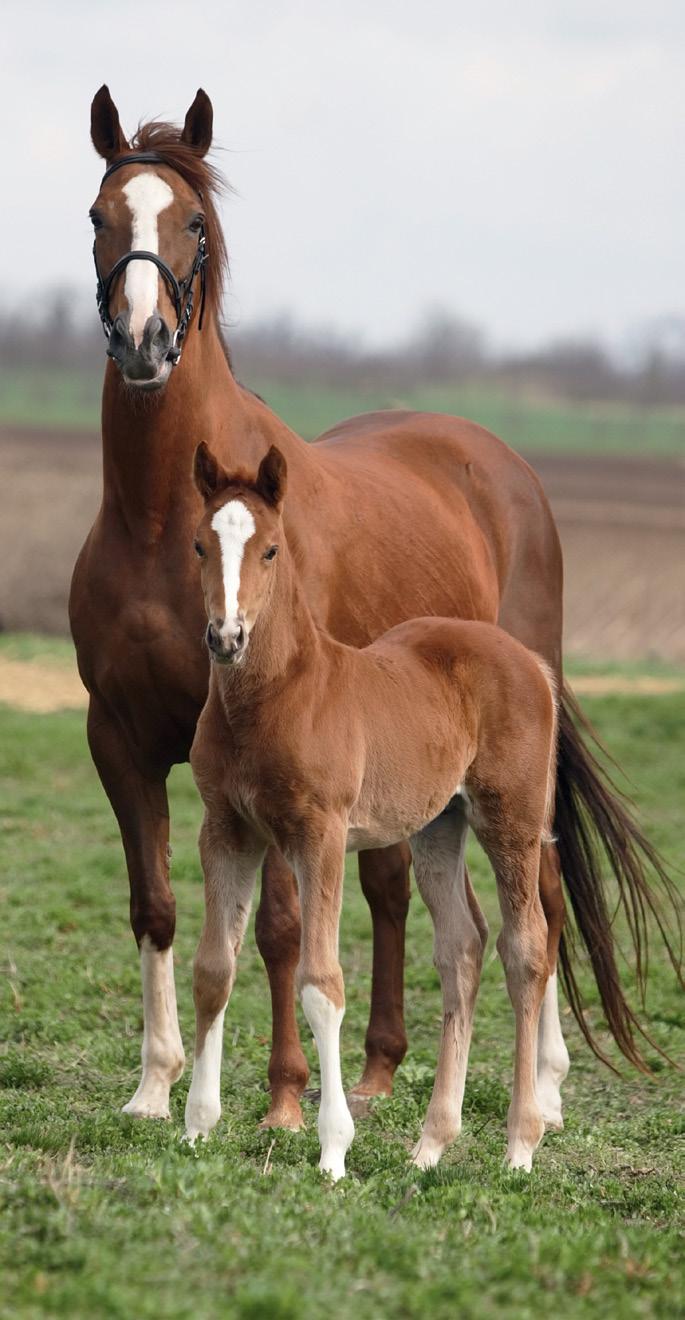
When your horse’s microbiome gets out of balance, we start to see: Reduced fibre digestion, weight loss, increased risk of colic, reactive behaviour, vitamin deficiency, loss of appetite, poor hoof quality, poor immune function, disrupted hormone production, and higher stress.
Stress Paste is designed to specifically address each of these responses to stress and to keep the horse eating and hydrated with well-functioning, well protected muscles. This is why it is complete with so many ingredients. Stress Paste is also designed to support the gut so it and its bacteria can remain healthy during higher stress periods.
If you are interested in stocking Stress Paste please contact info@poseidonanimalhealth.com.au.

Stress Paste gives your horse the tools to deal with stress
Europe’s largest pet product manufacturer – Ferplast of Italy – is famous for creating new and innovative products for the international pet industry.
None has been more exciting than the recent introduction of the GoodBite Natural ranges, designed to satisfy the needs of dogs and small animals to exercise their teeth and jaws – as well as cleaning the teeth at same time.
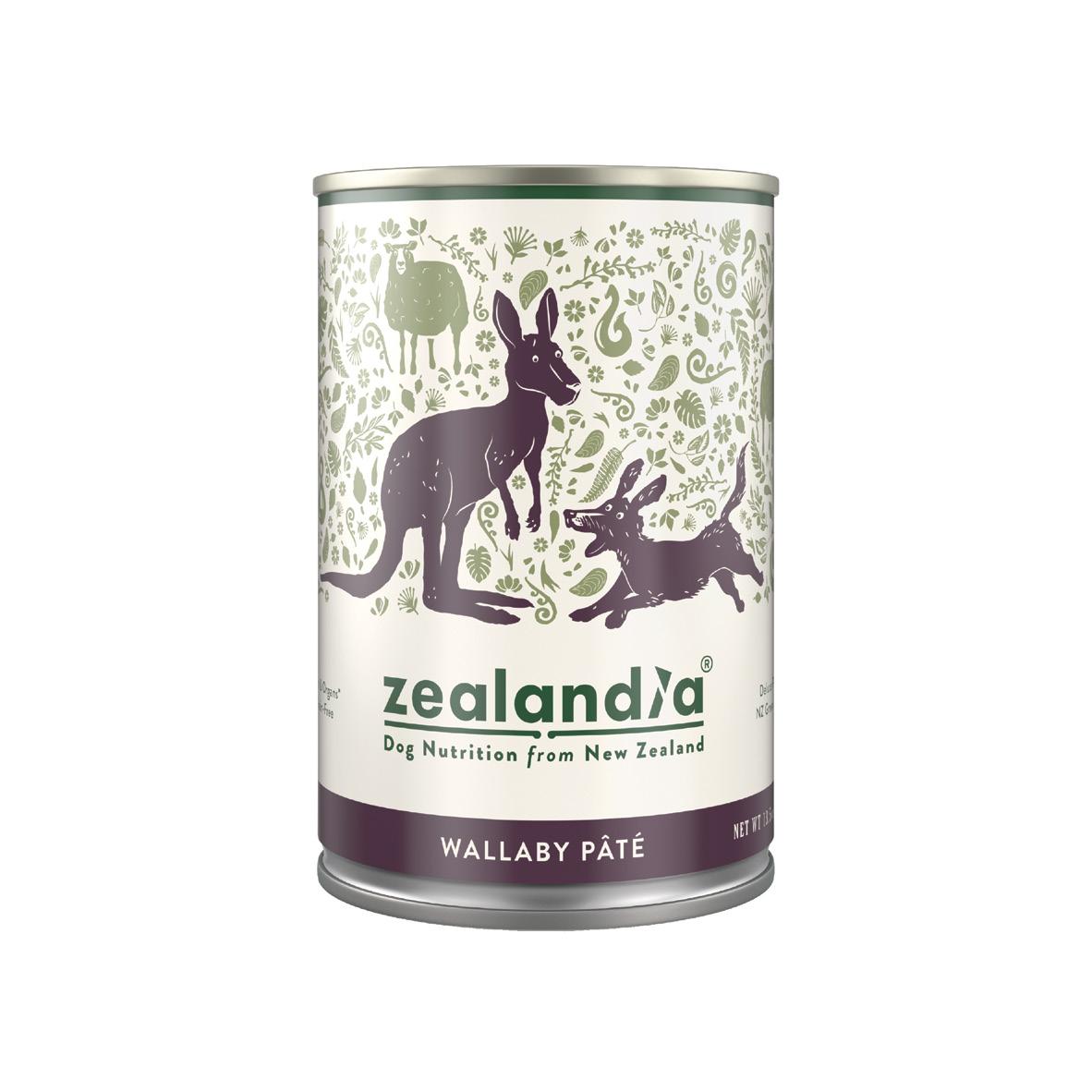

Made from a natural vegetable and grain base, the range has many features to appeal to both shopkeepers and customers alike, without the dangers associated with plastic and rubber chew items.
• Natural components.
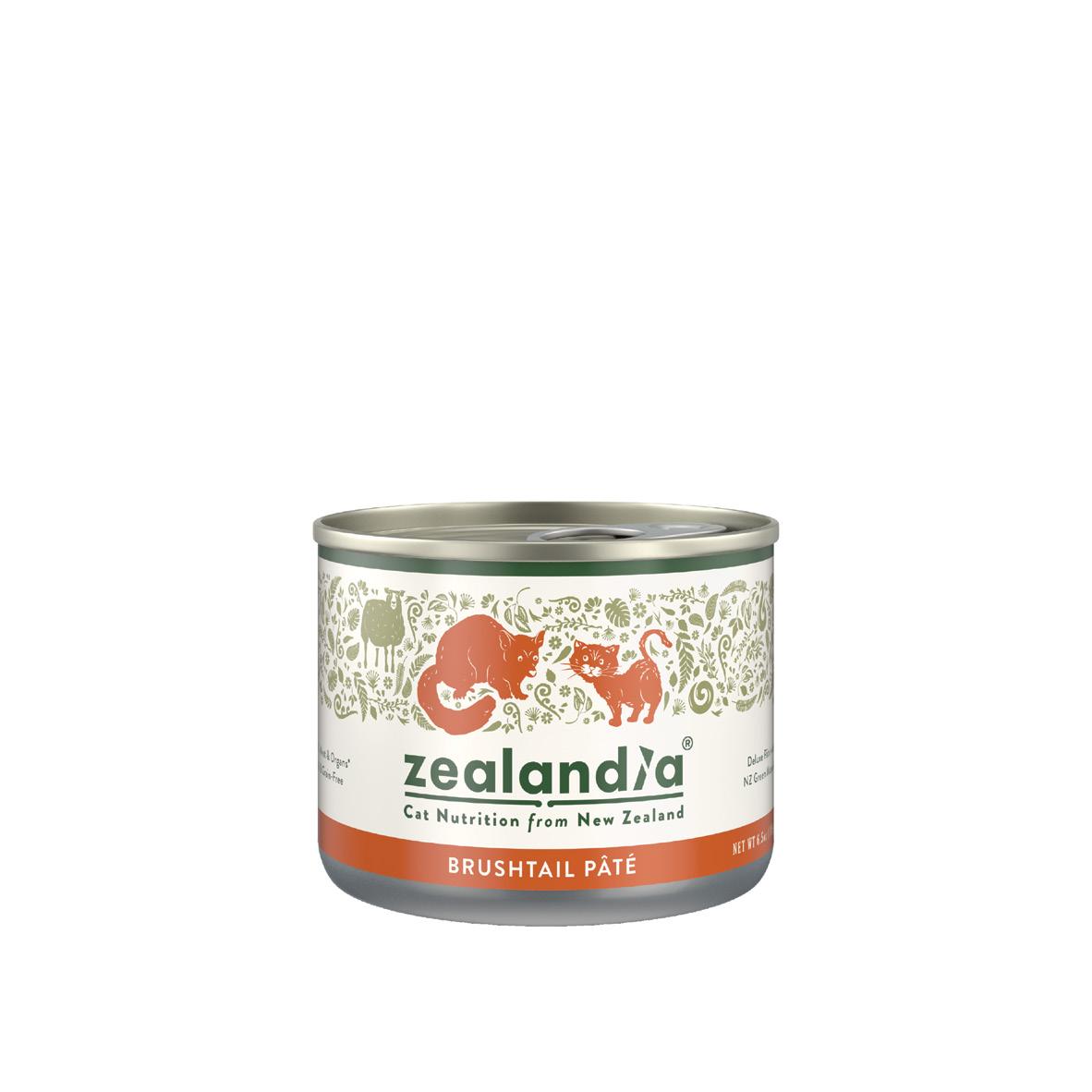

• Strengthens teeth and promotes dental hygiene.
• Does not alter animals’ diet in anyway.
• Completely non-toxic and is biodegradable.
• Has no expiry date involved.
• Flavoursome and safe if ingested.
For dogs, GoodBite Natural comes in six sizes to suit all breeds and in six flavours –Chicken, Salmon, Beef, Lamb, Ham, and Cereal.
For small animals, GoodBite Tiny and Natural are the ultimate in nibble items for rabbits, guinea pigs, ferrets, mice, and rats. Coming in four flavours – Cheese, Green Apple, Corncob, and Carrot, they are available in both single packs and a smart silent salesman counter display of 48 mixed pieces. For more info visit petpacific.com.au or contact your local Pet Pacific sales representative.
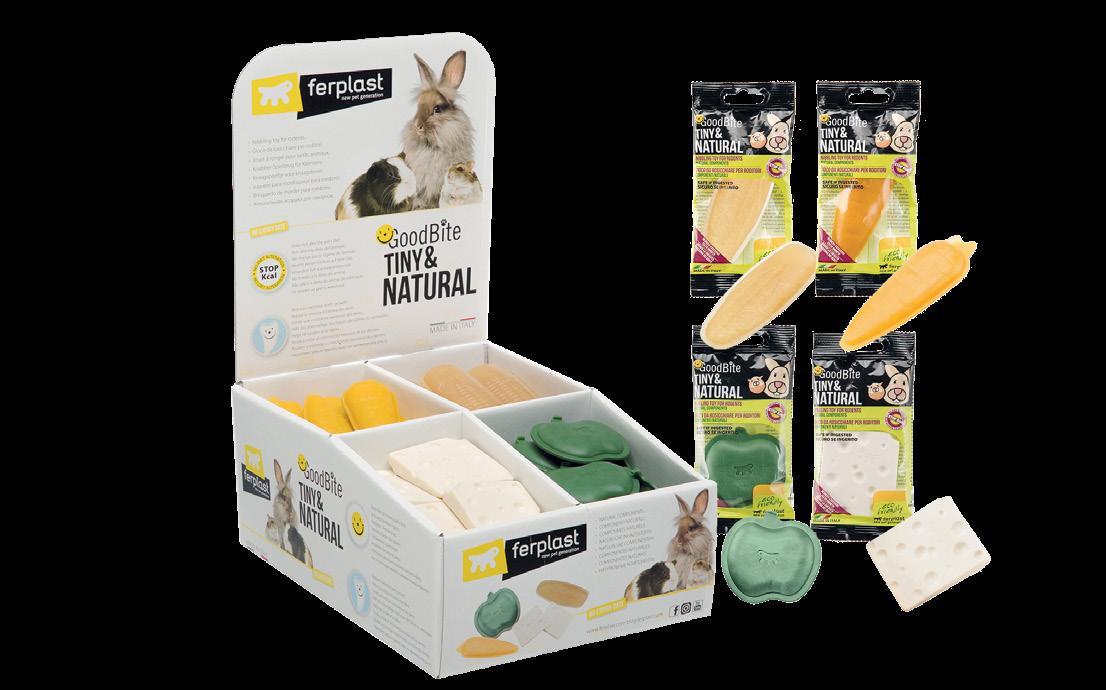
Simple and delicious, Ziwi Peak’s nutrient-dense boosters are crafted with nature’s superfoods for authentic health and wellness. Used as a meal topper, each recipe features 50 per cent carnivorous superfoods enriched with live probiotics to promote optimal digestive health. No synthetics, potatoes, legumes, or starches in these simple, clean recipes.
These unique and functional recipes are not only a convenient way for pet guardians to naturally enhance the nutrition of their pet’s meal, but also are incredibly delicious – a highly palatable and healthy way to treat your pet to the best.
Raw inspired and prepared by gentle freeze drying, Ziwi’s booster recipes are crafted with only Mother Nature’s best ingredients – and made without added synthetics.
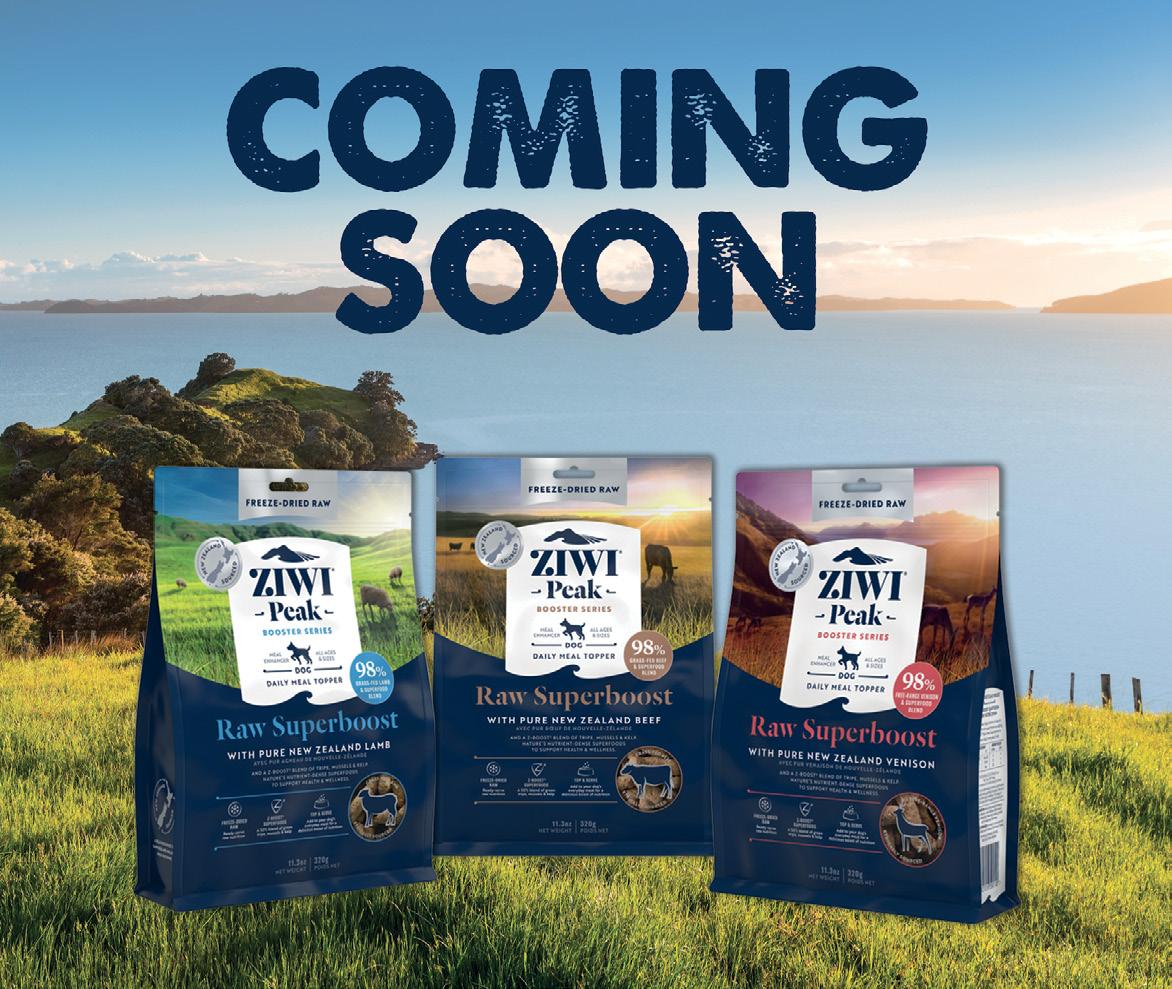
Freeze drying is the process of drying frozen raw material under vacuum conditions in which the ice in the material turns directly into vapour. The frozen raw material goes from one preserved form (frozen) to another (freeze dried) at a very low temperature, with little damage to the flavour, nutritional, or bioactive properties of the raw material.
Ziwi’s Freeze dried boosters are as close as you can get to fresh raw, while also being shelf stable and convenient. The biologically active probiotics and enzymes are preserved better; unlike frozen materials which will deteriorate rapidly if the cold temperature is not consistently maintained. You can rehydrate the boosters before adding them to your pet’s meal or sprinkle them straight from the bag for extra crunch. Want to learn more? Contact Number 1 Australia on 03 8011 0205 or visit number-1.net.au.

Founded by former model Sarah Macleod, Bourke St the Label was born from a desire to see more contemporary, design-driven pet accessories.
During Covid, Macleod had the time to design her own dog accessory range, with the debut collection taking its cues from Melbourne’s cultural scene including the laneway lifestyle and the city’s street art.
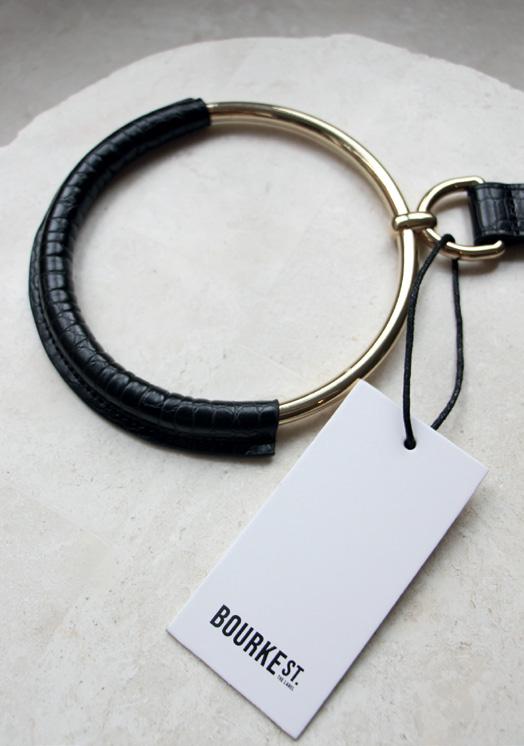

The Bourke St ‘Signature’ lead boasts the company’s registered padded circular handle design and is exclusively designed in Melbourne ($169). The Bourke St collars come in black, rose and cream and are made from vegan leather ($59-$79) with matching waste bags ($89). The Bourke St Bridal Dog Lead Set features the ‘Signature’ lead with an added modern bow and waste bag in white for that special day ($289). For wholesale opportunities please contact Sarah Macleod at wholesale@bourkestthelabel.com or on 0493 206 358.


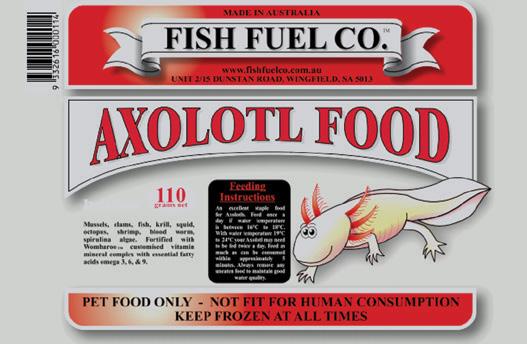


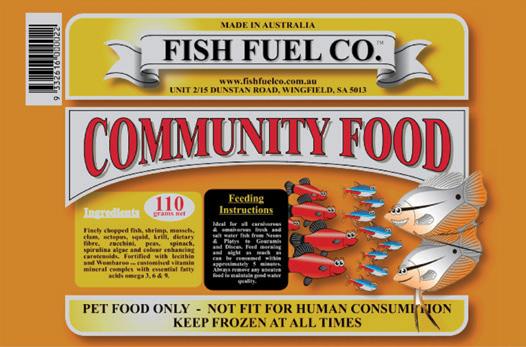
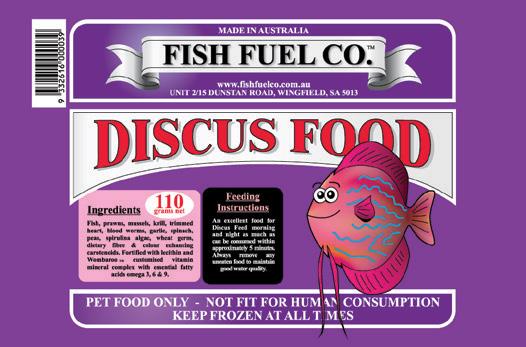
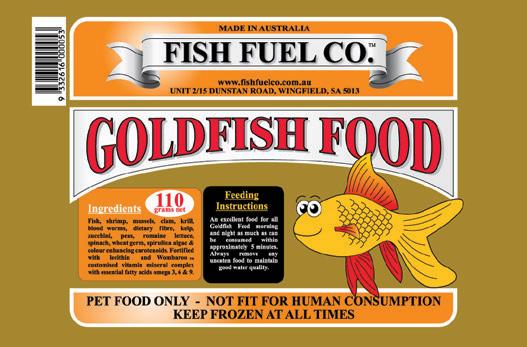

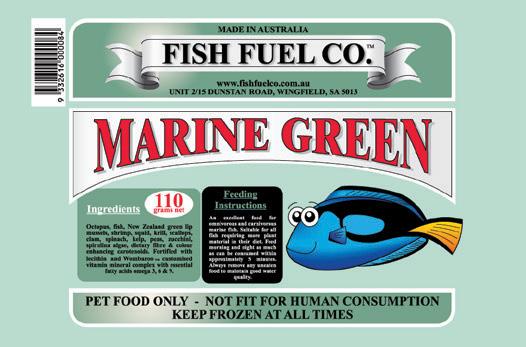
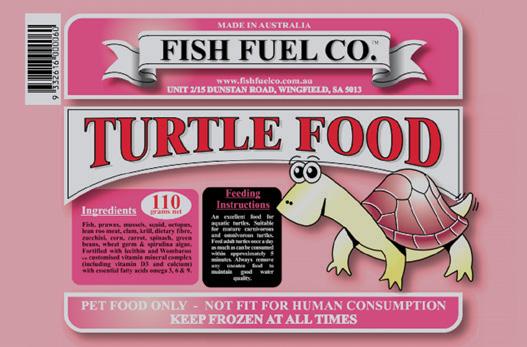
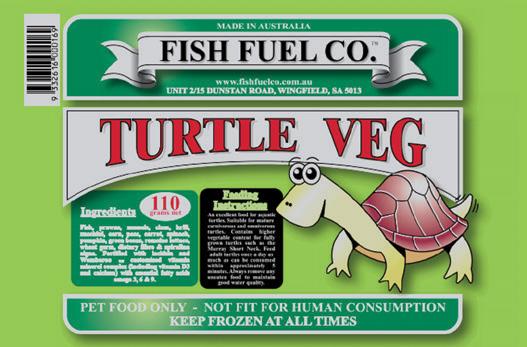



IT’S BEEN a busy past three months for the Pet Industry Association of Australia (PIAA) as we have stabilised our governance and financial position. We can once again get on with our agenda of promoting and growing the Australian pet industry and continuing our ongoing advocacy efforts to protect the industry against unnecessary red tape and overregulation.
I would like to take the opportunity to thank both Linda Chamarette and John Parkinson who have both moved on from PIAA in October after many years of service. Kathy Horner will continue to be the primary point of contact for our members as Administration and Membership Coordinator. Other directors and I are also more than happy to address any member queries by phone or email.
PIAA recently participated in Underwater Pet Expo in Melbourne, a consumer event featuring all things aquarium related. The show was a resounding success and allowed PIAA to relaunch our greater presence and focus on the aquatic sector to both the industry and consumer alike. PIAA communicated messages such as responsible fish ownership around the ‘Don’t Dump That Fish’ campaign as well as launching our series of instructional training short videos through our PIAA aquatics YouTube, TikTok and Instagram channels.

I have also represented PIAA in an online meeting of the International Pet Advisory Council (IPAC), which is a coalition of national pet industry trade associations from around the world. Such a forum allows us to share ideas, discuss challenges and compare notes, providing PIAA the opportunity to develop and distil ideas that are working well for other pet industry associations around the world. PIAA will also continue to collaborate, extend, and explore cooperative relationships with likeminded pet industry representative organisations in Australia.
PIAA has begun to explore re-establishing relationships with preferred supply partners to offer benefits to PIAA members. We understand not every
benefit will suit every member’s business, but we are particularly confident that, if adopted, our members who operate micro-businesses and small independent businesses will be able to achieve savings well beyond the cost of their PIAA membership fee. The areas we are initially looking at offering as part our member benefits package are merchant rates, energy supply, insurance brokerage, and HR assistance. We will keep you posted as these offerings come online.

PIAA has been developing its response to the recommendations of the NSW parliamentary committee into the puppy farm legislation being proposed in NSW. PIAA steadfastly supports the right of our industry (and the pet keeping public) to keep, breed, and sell companion animals. PIAA also fully supports any effort to eradicate the practice of puppy farming, that is irresponsible and unscrupulous breeding practices without care for the quality of life, needs, and welfare of the animals being bred.
It is clear some greater regulation needs to exist in this space to eliminate dodgy operators. It’s also critical a common-sense position is arrived at, which achieves the desired outcomes and doesn’t throw the baby out with the bath water by eliminating reputable, ethical breeders from our industry.
Never has our industry been more under attack by those who have an ethical objection to the keeping of all animals. It is a good time to remind everyone involved in our industry that we are under the microscope and to please ensure the systems, processes and procedures in your business adhere to the relevant codes of practice, and that you are putting the welfare of the animals in your care before all else. It’s also a great time to join PIAA if you are not a member as our position to effectively lobby for desirable outcomes is strengthened by a growing membership base. n
Under new leadership the PIAA is continuing its work to protect and grow Australia’s pet industry.
Words Anthony Ramsey
“It’s a great time to join PIAA if you are not a member as our position to effectively lobby for desirable outcomes is strengthened by a growing membership base.”
– Anthony Ramsey
of Australia
The Australian Veterinary Association is calling for HECS fee forgiveness for rural vets. Words
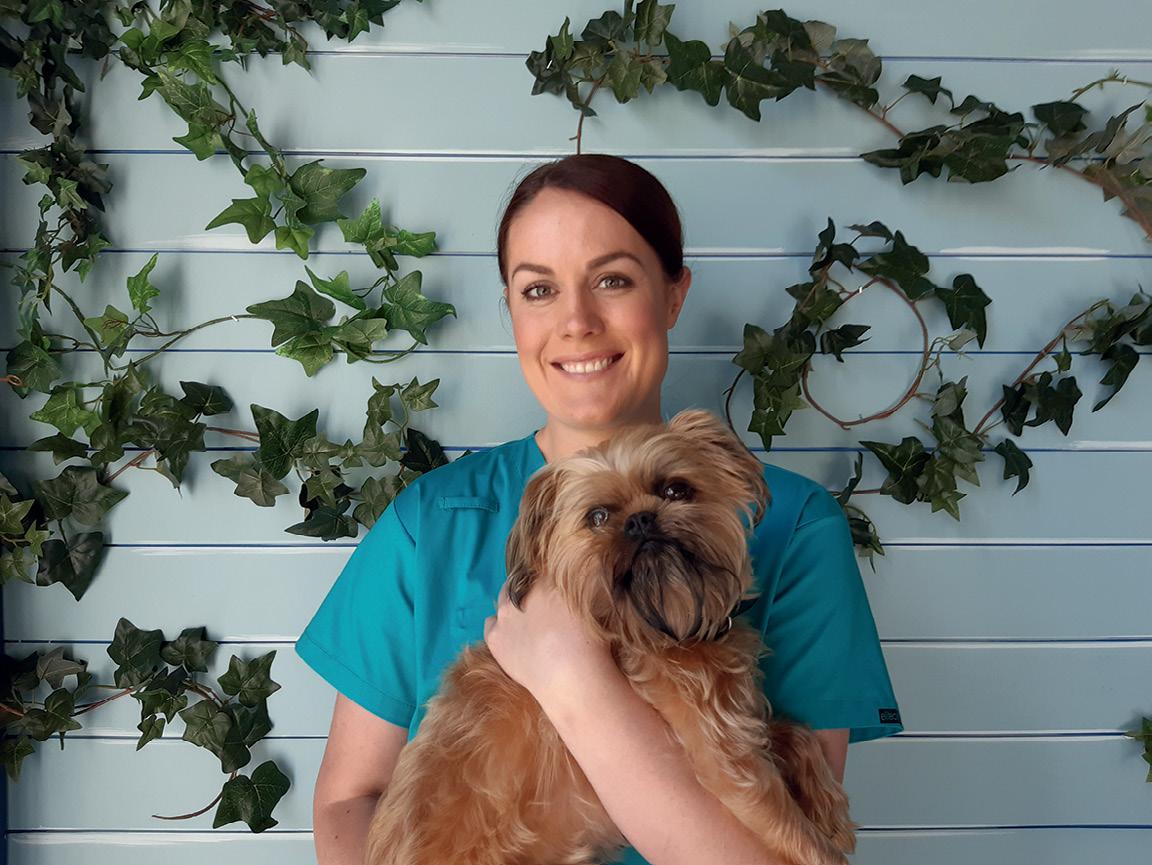
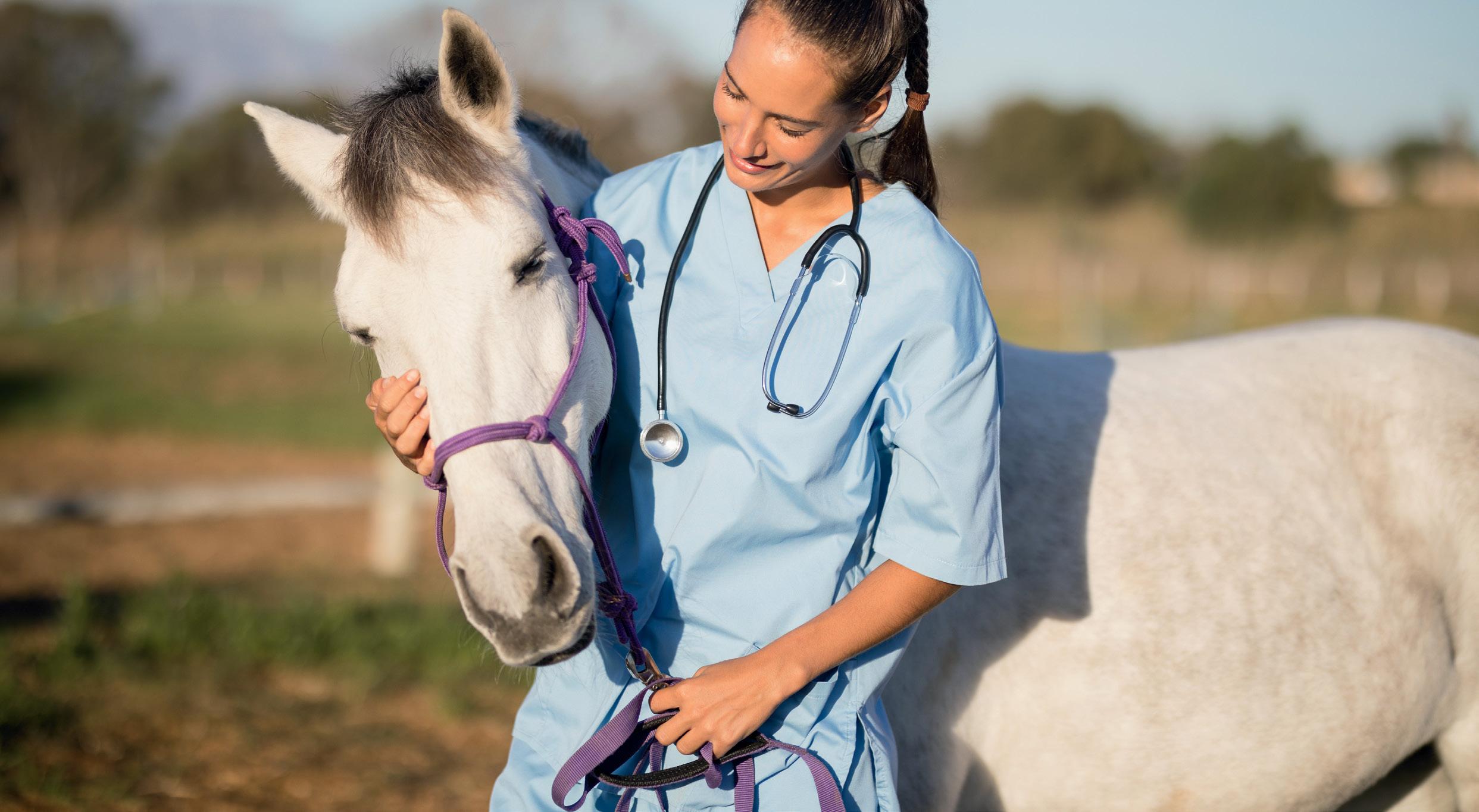 Bronwyn Orr
Bronwyn Orr
IF YOU live in an urban or suburban area, it’s easy to take ready access to a doctor, pharmacist, or veterinarian for granted. While there may be longer waits than usual in the cities, it’s still possible to find the help you need. But what happens if you live in an area that doesn’t have these services? Increasingly, rural communities are losing their local GPs and veterinarians as practitioners retire and aren’t replaced. We’ve heard of towns like Parkes in NSW where, since losing their local veterinarian, owners must drive much further to seek the care they need for their pets. The after hours situation in many communities is even worse. Some clinics are unable to provide veterinarians 24/7, leading to sometimes hours-long commutes for owners seeking emergency after hours care.
While the shortage of veterinarians and veterinary nurses is affecting every corner of Australia, and indeed most of the world, our rural and regional areas are at the frontline. Where a shortage of veterinarians in a city may lead to increased wait times for nonurgent appointments, a shortage of veterinarians in the country can lead to an inability to access veterinary care entirely. This has significant implications for animal welfare as well as biosecurity.
This is why at the Australian Veterinary Association (AVA), we are calling on the Federal Government to support HECS fee forgiveness for rural veterinarians. There are approximately 700 veterinarians graduating from our seven veterinary schools in Australia each year. On average, each veterinarian can expect their degree to cost them between $57,000 and $75,000, assuming they received a Commonwealth-supported place and
depending on whether they completed an undergraduate or postgraduate veterinary degree. For full fee-paying students or international students, the debt they will graduate with will be more than $100,000.
Veterinarians have one of the lowest starting salaries of any professional degree, and when combined with a significant HECS/HELP debt, can lead to financial stress for early career veterinarians. A program that would see all or partial forgiveness of student debt, in return for spending several years living and working in a rural area, would be very attractive to many new graduate veterinarians and could help provide essential services to our rural and regional communities. While not a long-term solution to the veterinary shortage, this program would provide immediate relief to dozens of communities and veterinary businesses around Australia. The good news is that similar programs are already in effect in Australia for medical doctors and nurse practitioners. The administrative architecture is already in place; we just need the government willpower to make it happen. The Nationals Farmers Federation has publicly supported our call for HECS forgiveness for rural veterinarians, as has the New Zealand Veterinary Association, where a similar program has been in effect for more than a decade, resulting in dozens of rural communities having access to veterinary care where they otherwise may not have.
Having more vets in our rural and regional areas benefits everyone. I call on colleagues in the wider pet industry to support our efforts to see HECS fee forgiveness for rural vets, to ensure pet owners across all of Australia can access the care and services they need. n
“Having more vets in our rural and regional areas benefits everyone.”
– Bronwyn Orr– Jared Patrick
THE AQUARIUM Industry Association of Australia (AIAA) continues to facilitate the applications of the nine species of fish that they would like to see added to the permitted import list. The species are Red Line Torpedo Barbs, Galaxy Rasbora, Polkadot Loach, RedTail Blue loach, Striated Loach, Skunk Loach, Emerald Tiger Rasbora, Featherfin Synodontis, and Histronica Loach. These fish are with the Environment Department to undertake their own risk assessments.
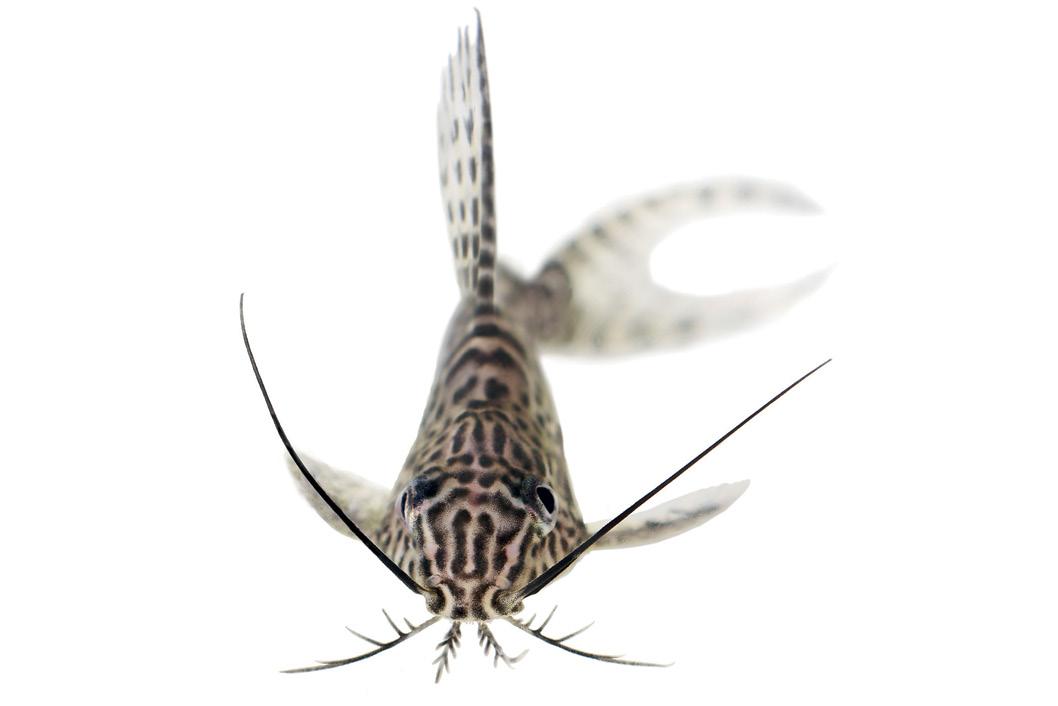

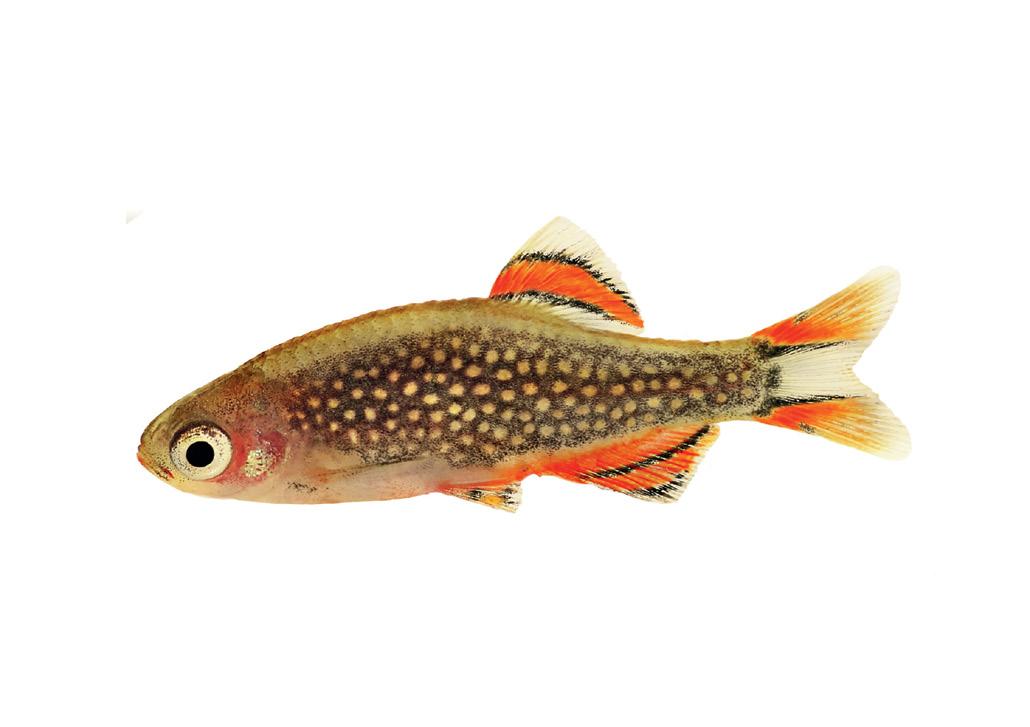
AIAA has continued to provide strong advocacy and representation to government of all levels on behalf of our members and the aquarium industry in Australia. We continue to stay alert to relevant issues around our country that impact our members and the aquarium industry generally.
One of the additional topics on the radar of many marine fish importers and retailers is that captive marine fish are not able to be imported, whereas captive freshwater fish make up the predominant

drawn up. This has now changed significantly with many captive-bred Clownfish and now an increasing number of marine Angelfish being available on the international market. We continue to lobby the Biosecurity division of the Agriculture Department to commence this review. At the video conference meeting held on 29 September the Biosecurity team updated the AIAA that the marine ornaments Import Risk Assessment discussion paper for public consultation was imminent.
AIAA has participated in consultations and the risk assessments process overseen by the Freshwater Vertebrate and Invertebrate Pest Committee that investigated ornamental fish that are present and traded in Australia but not approved for import called the ‘Grey List’. This created uncertainty surrounding their legality and could have resulted in hundreds of aquarium fish species being taken away from our trade if not for AIAA’s involvement. This process is now complete with no short-term adverse impacts likely, in large due to our input.
The AIAA continues to advocate for its members and the broader aquarium industry. Now is the time to join if you’re not a member – head to the website aiaa. net.au to join now. n
“AIAA has continued to provide strong advocacy and representation to government of all levels on behalf of our members and the aquarium industry in Australia.”Words Jared Patrick

WE KNOW that fat is an important nutrient in our own diet as well as in our pet’s diet, but what is the function of fat and what are the differences in the fat requirements of people and their pets?

Generally reducing our intake of saturated fat is recommended as it is linked with high cholesterol in humans. Commonly cholesterol is referred to as:
High density lipoprotein (HDL) = Good cholesterol
Low density lipoprotein (LDL) = Bad cholesterol
In humans, a diet high in saturated fats can increase the level of ‘bad’ cholesterol, which may potentially lead to blocked arteries. However, it is rare for dogs and cats with high cholesterol to suffer from circulatory disorders. Instead, elevated levels of cholesterol and triglycerides (called hyperlipidaemia) can indicate other underlying health conditions such as diabetes mellitus or pancreatitis.
So, what’s the deal with fat? Dietary fats can come from animal, marine, or vegetable sources and are either solid or liquid (oils) at room temperature. Fats are made up of individual units called fatty acids and fat is the most concentrated form of energy available as a nutrient, providing more than two-times more calories per gram than either protein or carbohydrates.
• Fat is an excellent source of energy (calories).
• Provides essential fatty acids which cannot be produced by the body (so must be provided in the diet), such as Linoleic acid, Alpha-linolenic acid and a specific dietary requirement for cats is Arachidonic acid.
• Carries fat-soluble vitamins (A,D,E and K) and facilitates their absorption into the body.
• Helps promote a soft, shiny coat and healthy skin (by helping retain moisture in the skin).
• Fat can also enhance the taste and influence the texture of food.
• While human endurance athletes rely more on energy from glycogen (supplied from carbohydrates), Purina research has demonstrated that canine endurance athletes fed a high fat diet have improved endurance compared to when fed a high carbohydrate diet.
• Pregnant and lactating pets have significantly increased energy demands for both growing foetuses and for lactation. They require three-times as many calories compared to normal adult maintenance needs. Since fat can increase the palatability of food, a diet slightly higher in fat may also encourage fussy pets to eat. Keep in mind that a pet’s appetite may vary from day to day. Normally this is not a problem unless the loss of appetite persists, and they start showing signs of illness. If this occurs, consult with your veterinarian.
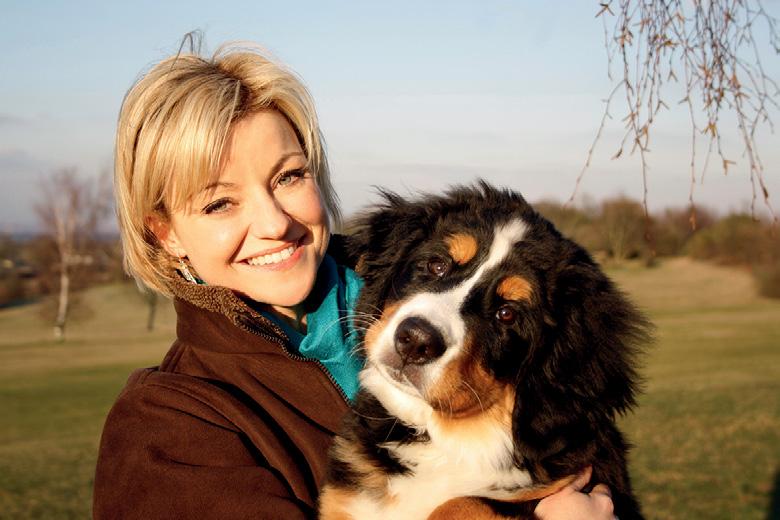
• Fat is the main contributor of calories in the diet, consequently less dietary fat helps reduce the caloric density of food, which in turn can help overweight or less active pets to lose weight and to maintain a lean and healthy body condition. Purina’s landmark LifeSpan study has demonstrated that dogs kept to lean body condition throughout their lives have significantly longer and healthier lifespans, with delayed onset of health conditions associated with aging such as osteoarthritis.
• A low fat diet is often recommended for dogs with gastrointestinal (GI) conditions since they may not digest fat properly. Undigested fat in the colon or large intestine can lead to diarrhoea or intestinal inflammation. With all medical conditions, including GI conditions, veterinary advice and supervision is always required. n
andScientific Affairs Lead
“Since fat can increase the palatability of food, a diet slightly higher in fat may also encourage fussy pets to eat.”
Dietary fats are important for dogs and cats just as they are for humans. But how do our requirements differ?
Words Zara Boland and Michael Zajac
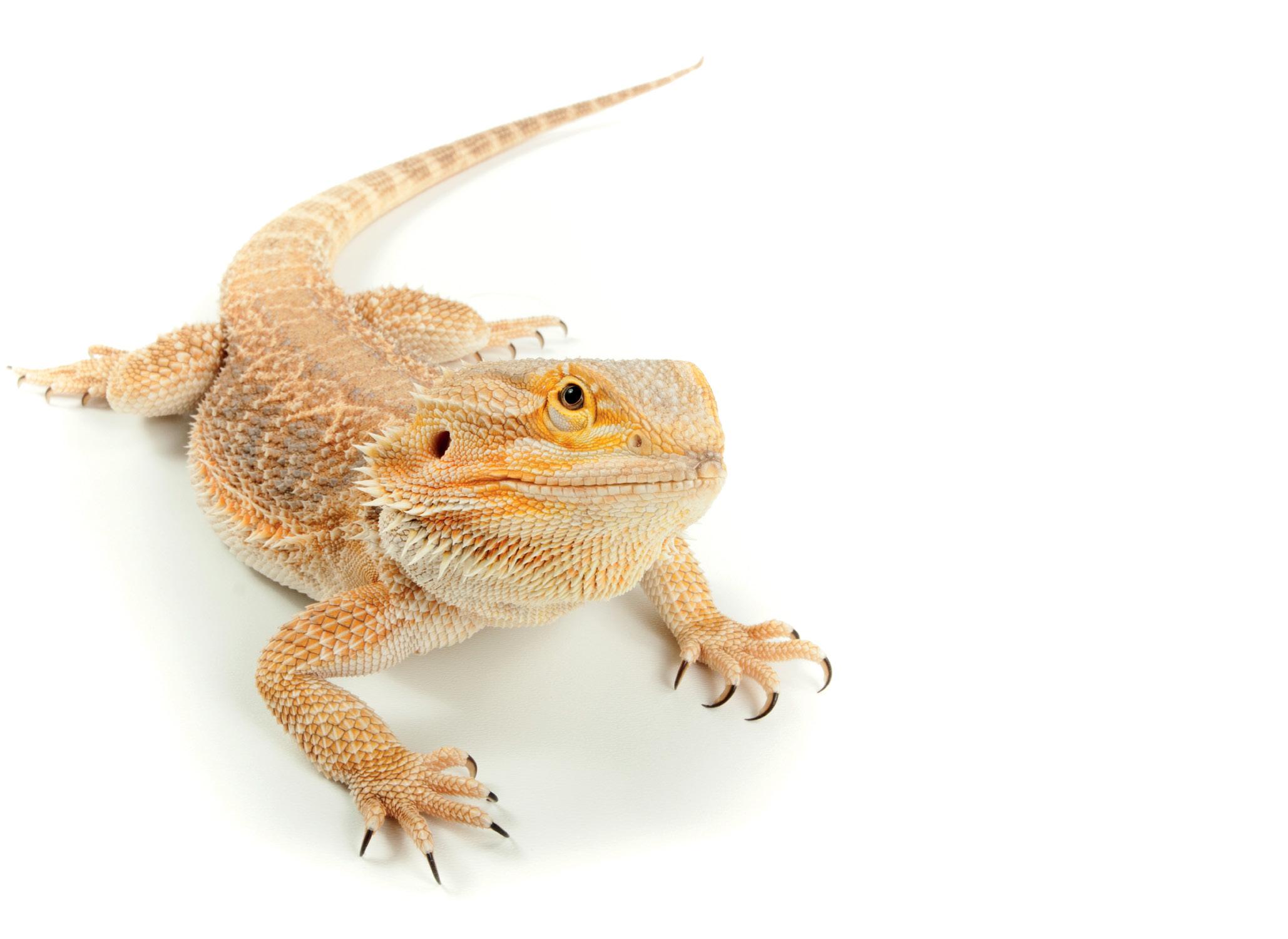
IT ALL began on 3 September 1979 when the Pet Industry Joint Advisory Council (PIJAC) – now the Pet Industry Association of Australia (PIAA) was legally established. The Memorandum of Association and Articles of Association were signed on 21 August 1979 by five industry visionaries who were committed to the establishment of an industry association, “to protect and advance the interests of the pet industry in the Commonwealth of Australia”. These visionaries were Alan Brian Whelpton, Lawrence Trevor Small, Enrico Vincent Datodi, Normal Leslie Chinn and Michael Forster.
The industry was fragmented into retail pet shops, boarding kennels, groomers, aquariums, breeders, and trainers along with other ancillary industries with very little link to each other. Regulations were decided without representation from the pet industry as a whole. Despite this, business was thriving with new ideas and technologies. What it lacked was a strong united voice.
Now retired from the pet industry, Alan Whelpton AO was founding President of PIJAC and contributed greatly to the pet industry. He acted as Managing Director of Pets International, Australia’s oldest and largest importer, distributor and wholesaler of pet products (sold to Masterpet Corporation in 2002) and was honoured with PIJAC’s first Pet Industry Man of the Year award in 1980.
“The industry benefited greatly because the majority of the industry believed in what we (PIJAC) were doing and devoted many hours in assisting,” says Whelpton. “Even prior to having an executive director we formed various sub-committees that did a lot of work for the industry behind the scenes.”

After just 12 months, at the first Annual General Meeting there were 42 financial members.
In the early 1970s, the Fisheries Council of Australia convened a meeting of the Chief Fisheries Officers in all states to meet in Darwin, at the request of the Tasmanian Salmon Industry. The prime subject of importance – a ban of all live goldfish coming into Australia. PIJAC was invited to attend, and the then President of PIJAC Australia, Frank Williams, was sent on behalf of the aquarium industry members to represent their interests.
Following a blistering attack surrounding the dangers of importing sick goldfish into Australia, the Salmon Industry went on to explain how all our native fish could be wiped out, by both disease and the eating of spawn by these imported species. However, Williams then addressed the meeting telling of a recent visit to Tasmania, where local fauna officers told him of their grave concerns of the regular large escaping of salmon fingerlings from local hatcheries into the Franklin River system. They advised as these fish grew, they were slowly wiping out most of the native fish species in the surrounding area.
This was heard with deafening silence, and when asked to deny this, nothing positive came forth from the Salmon Industry representatives. From that time on, the subject of banning goldfish imports was never mentioned again.
In 1989, the workload of PIJAC was such that a full time Executive Director was required. This was Kevin Pakes who continued holding that position until his passing in 1993.
“It is my wish and hope that the newly appointed directors have that fire and can put the association back where it belongs, a leader in our industry.”
– Bob Croucher
With PIAA experiencing a period of transition, we look back at why the association was formed and some of its significant achievements over the years.
Words Bob Croucher
Some of his major achievements were forming state administrations for the association and education programs involving TAFE, ensuring that young people enter the industry with a complete education on animal care.


Red tape was an issue in the early days of the industry, particularly when it came to animal medications and their registration. Not only requiring expensive packaging changes for imported medications but the requirement to register each product in every state, and because it was a small industry, medications were lumped along with primary industry animals such as cattle, sheep, and pigs. Around 1992, changes were made to offer national registrations. PIJAC made representation to include exemptions for treatments to ornamental fish and exotic caged birds.
While it took a while, PIJAC started to be included in many state and national meetings relating to the welfare of animals and given the opportunity to contribute to making new laws and regulations.
In 2004, the name of the association was changed to Pet Industry Association of Australia (PIAA) as the board felt that industry members and the public would have a better understanding of what the association was all about.
It was in late 1990 that PIAA’s then President, Frank Williams approached me with the idea of publishing a regular magazine. It was agreed that good communication was important between wholesalers and retailers as well as those in other sectors of the industry, including groomers, boarding kennels, and others. The magazine filled that requirement with the first issue distributed to more than 3,000 in January/ February 1991. The magazine continues today, be it with new owners. Now there are weekly newsletters, a high-quality website, and regular podcasts.

Overseas trade shows have always been important for Australian wholesalers seeking out new products and overseas trends within our industry.
It seemed that to hold a trade show in Australia would be an obvious move, and that PIAA would be the one to organise such a show. So began the first ‘Pet Expo 91’ which was held in World Trade Centre, Melbourne, Victoria on 5-7 October 1991.
An important part of the trade show was the dinner, which was always well attended and gave industry members time to relax and socialise with like-minded people. Many new friendships have been linked to these dinners, where awards were presented in all sections of the industry, both to individuals and companies.
Educating the industry is also an important role taken on by PIAA. This began in 1994 with ‘Pets*Mart’ held at Darling Harbour, Sydney. Two of the key speakers were John Pease aka Mr Body Language and Professor John Gratzek who was a Professor of Veterinary Medicine at the University of Georgia. Since then, education became an important part of the Trade Shows.
Ornamental fish expert Rick Datodi was an early Vice President and headed up the live fish sub-committee. He ran Aquarium Industries, which began as a small retail shop and gradually grew into wholesaling as well as expanding the retail side of the business to eight shops [Aquarium World] around Melbourne. But the aquarium sector of the pet industry was under threat of proposed government regulations.
“The government at one stage was bent on banning importation of goldfish, as mentioned earlier, but PIAA was successful in stopping that,” Datodi said. “They also had proposed limiting permissible fish for import, to just 100 species, which would have knocked the industry off the perch.”
Datodi was heavily involved in negotiating quarantine issues with the government and became successful in opening the biggest quarantine station in the country, which industry members criticised at the time but benefited from the compromised quarantine outcome in the end.
“It was for the survival of the overall industry.
“They also had proposed limiting permissible fish for import, to just 100 species, which would have knocked the industry off the perch.”
– Rick DatodiThe Pet Industry Joint Advisory Council (PIJAC) Kevin Pakes Alan Whelpton
“The pet retail sector has benefited greatly from PIAA’s long-term efforts in raising standards and changing negative perceptions of pet shops, but there is still work to be done.”
– Kim Peries, Pet City
There was no consideration for individual benefits,” he explained.
Most of the lobbying and issues PIAA had to tackle over the past four decades were around retail, which were fundamentally the perception of pet shops among the public and the sale of livestock in some name, shape or form.
I spoke to pet shop members from Queensland, NSW, and Western Australia about their long-lasting affiliation with the PIAA and how it has benefited their business, especially during challenging times. Every pet shop’s achievement added to the PIAA’s success.
A founding member of the association, Kim Peries (Pet City) has never been on the board but has always been a great supporter of PIAA, especially in the early days when she volunteered to meet with government officials on issues, such as legalisation of rabbits in QLD or to organise training functions in the state.
“I like to build relationships with the RSPCA, animal welfare organisations and the government to discuss different issues that affect our business,” she said.
Peries said the pet retail sector has benefited greatly from PIAA’s long-term efforts in raising standards and changing negative perceptions of pet shops, but there is still work to be done.
PIAA has always responded and continues to react to criticism and/or proposed legislation to ban the sale of animals in pet shops. Many will remember the petition Sydney Lord Mayor Clover Moore MP launched a couple of years ago to ban the sale of animals in pet shops and markets [Animals Regulation of Sale Bill]. PIAA fought back against the inaccurate and misleading information disseminating about pet shops through the media.
This was ongoing, despite two Senate Enquiries (one in Victoria and one in NSW) finding that pet shops and large breeders were not the problem, but the cure in maintaining good animal welfare. NSW accepted the findings of this report. Victoria, with an election coming up at the time, feared losing votes to
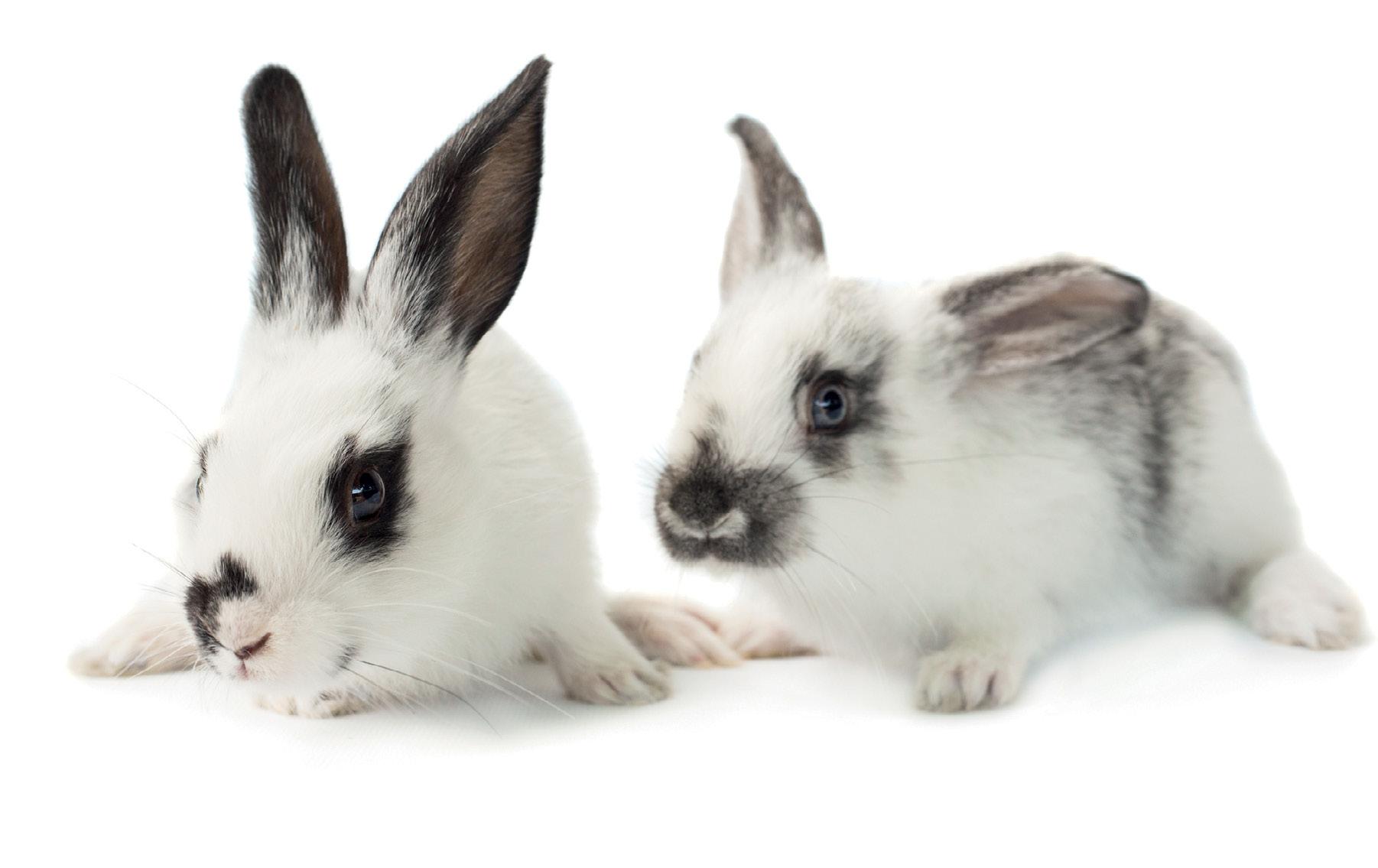
the greens and ignored their report and banned the sale of pets in pet shops and reduced the number of breeding dogs that could be kept.
For many years PIAA has been lobbying the NSW Government to allow the sale of reptiles in pet shops and for many years kept hitting a brick wall. Several times we would get close and then the Minister would change, and we would have to start again. In 2013 we were successful. The Hon. Robyn Parker MP, Minister for Environment signed the document, witnessed by CEO Roger Perkins and myself. A restricted list of animals was issued, and many shops are now selling the hand reared animals successfully.
Over the years relationships were created with likeminded industries overseas. PIJAC USA included a visit from its Council, Marshall Myers, who stated at the 30th Anniversary, “your achievements over the past 30 years have set standards that your sister organisations around the world should replicate”.
Susan Dankert from PIJAC Canada, and the PIAA regularly exchanged ideas and for a couple of years published their magazine here in Australia.
Nigel Baker of the UK Pet Industry Federation was always complimentary of the PIAA’s achievements.
Meetings were often held with these and other associations at the Interzoo Trade Show held in Germany every two years.
There are many other achievements over the past 43 years, but space doesn’t allow a mention of all of them.
There was fire in the bellies of past directors and CEOs who fought for what is right for animal welfare in Australia, not always recognised by the public and those making the laws. Media has often been unkind, usually for the sake of grabbing a headline but most of those in the industry are in their chosen jobs because of their love of animals.
It is my wish and hope that the newly appointed directors have that fire and can put the Association back where it belongs, a leader in our industry. n
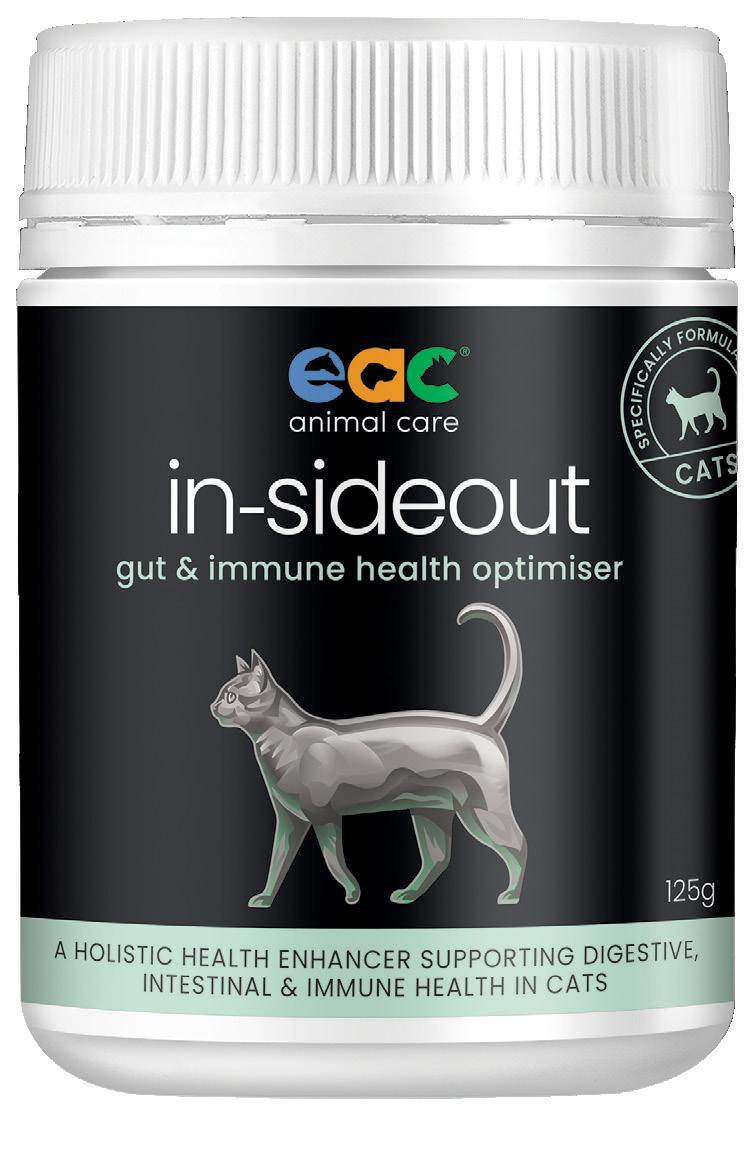









As regulations start to draw more tightly round the neck of genuine breeders, we examine the importance of responsible breeding practices.
 Dr Harry Cooper
Dr Harry Cooper
have been about 12 years old, and about to make the move from primary school to secondary school when my father made me an offer that was impossible to resist: “If your marks are good enough to get a scholarship at your new school, I’ll get you
My brother and I grew up in a family where animals were a big part of our lives. Mum bred Pomeranians, and Dad, Smooth Haired Fox Terriers. On top of that we had poultry and a black cat. We
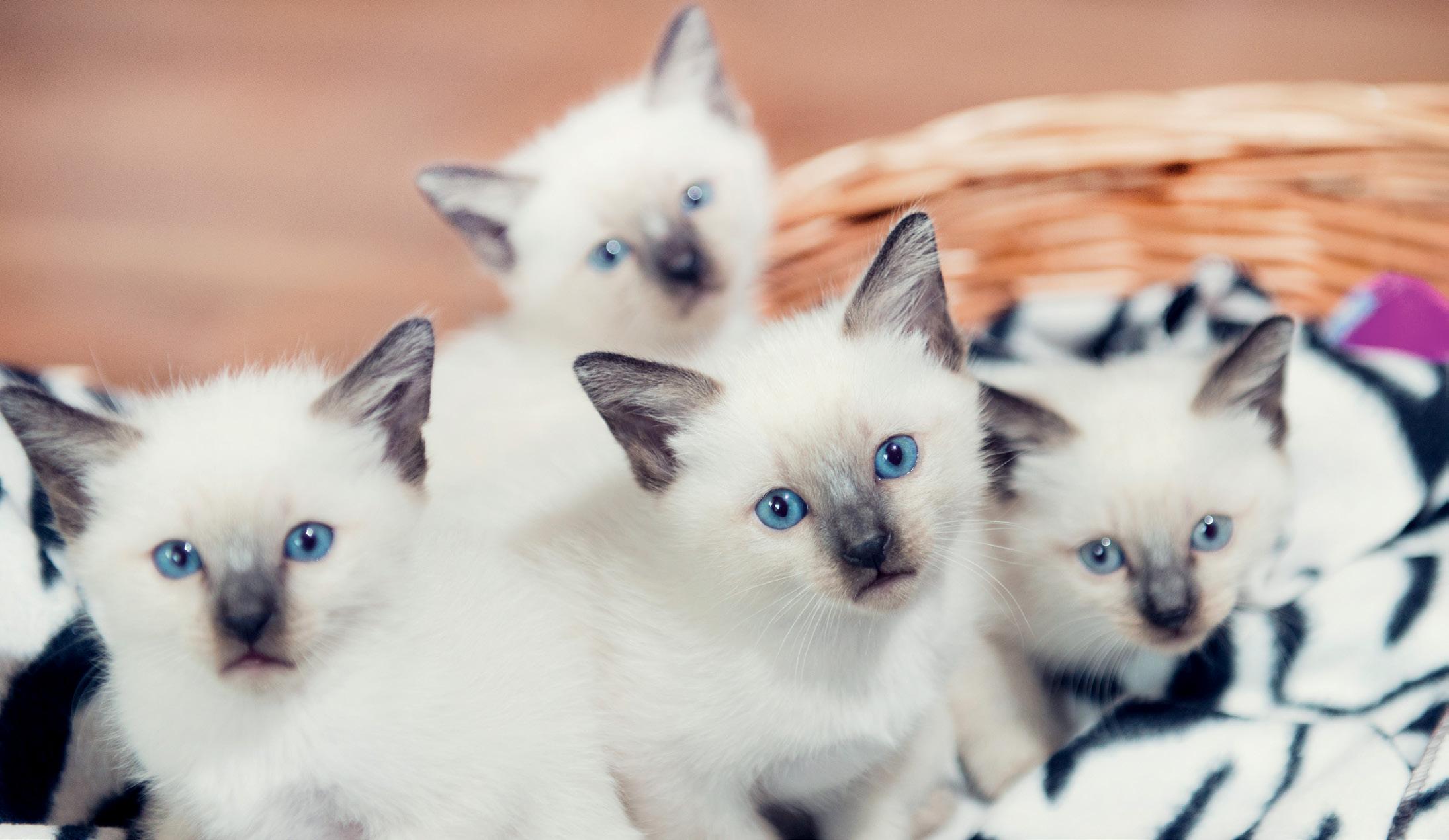
except to put in some nest boxes. I’d read lots of books, and obviously so had the budgies because they just knew what to do. There was no control going on here and they chose mates as they pleased.
Dentists are interesting professionals. They wait until your mouth is stuffed to overflowing with cotton wool, and then they start asking you questions.
“So, what have you been doing over the holidays?”, the family fang flosser asked.
“I gut udgies” was all I could muster.
all else.”
– Dr Harry CooperThe exam was tough on so many levels. Primary school had been a small private campus in Hunters Hill with not many more than 100 students all up. Suddenly, I am sitting in huge hall with twice that number of boys my age and staring at a white exercise book with so many questions, on so many different subjects. We were there for what seemed an eternity, but I think two hours would be about right. How did I go, anxious parents asked. Honestly, I didn’t have a clue.
Fate was on my side, and I gained entry to Barker and won a scholarship to boot. Dad, true to his word duly turned up with two pairs of yellow budgies, well, they were sort of yellow, and by today’s standards so small, they would probably have got out through the wire netting. But they bred. Boy did they breed. The thrill of the first babies squeaking in the nest was unbelievable. Mind you I had nothing to do with it
“Oh, you’ve got budgies”, the dentist went on, “I’ll have to show you some good budgies”.
“I gut gud udgies” I stammered back indignantly.
“I’m sure you do”, he said kindly, “But if you can come with me next weekend you can see for yourself”.
There were three aviaries. There were so many birds in each that at least half a dozen had to keep flying till they could find room on a perch. I was blown away. I had never seen or imagined such stunning birds. Today we call them clearwings. Pure white wings on a blue body or brilliant yellow on a green body. I was hooked. Budgies were going to be my thing, and they were for many, many years. I have judged here in Australia, and in the UK. I am a life member of the society and at one stage had almost 2,000 birds until a massive bushfire slaughtered some 498 of them. Yes, I remember the number to this day. The heat was so intense they never had a chance.
Studying for my veterinary degree I found genetics to be a world just waiting to be discovered. There were Xs and Ys to start, then Dominants and Recessives. The continual debate about line breeding and in breeding always had someone venturing an opinion. ‘If it works then it’s line breeding, and if it doesn’t then it’s inbreeding’. The birds became my tool in a breeding plan. Sometimes it worked and sometimes it didn’t.
I branched out into poultry and greyhounds and yes of all things, cats. While I may have dabbled with line breeding in the budgie and poultry world, it was all but forbidden in the greyhound fraternity. With cats I exercised a fair degree of caution. We are looking at two very different things.
Firstly, with show animals – and that includes all manner of birds – we have a breed standard. It is the aim of every good breeder to get as close as possible to that standard as they can. Theoretically the judge should then award their exhibit as the winner. We are then only looking at one thing and that is the phenotype. With performance animals like horses and greyhounds, it doesn’t really matter all that much what they look like, but how fast they can travel. It’s unfortunate that in the racing industry money is the driving force. The need to recoup the massive amounts spent annually on young thoroughbreds is what makes the races for a two-year-old such an attraction. The pacing industry is similar. There is, with performance animals, a need to wait. You can’t tell by looking at the animal if it is going to be fast or slow. On the other hand, in the show ring appearance, is obvious from about six weeks of age onwards. You don’t have to wait; you can see what you’ve got.
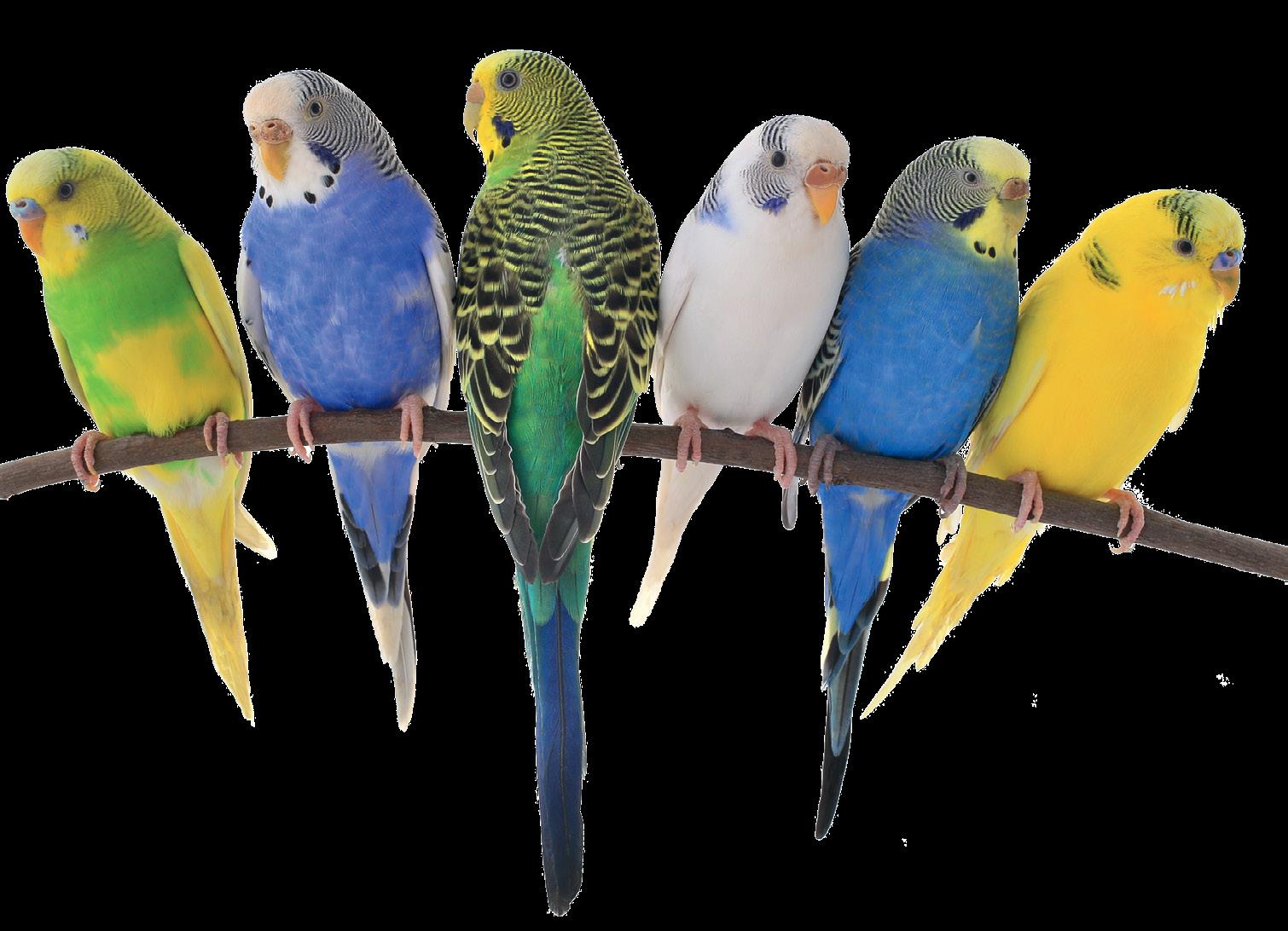
Now is the time to run my veterinary flag up the mast and tell you just how important temperament is. Strange isn’t it; it’s often the very last thing people want to talk about. Here’s a true story. A quality show winning Seal Point Siamese male cat was imported into Australia via New Zealand. On arrival, I thought the cat to be a bit standoffish, certainly nothing like the crawl all over you and purr that I was used to. He was mated to three queens [females] from three different lines [yes, line bred to a degree]. All had produced beautiful kittens from previous litters. Almost from the day they started to leave their mother’s side those kittens were different. They would hiss and spit. They hated being handled. The older they grew, the worse they got. They would stand upon their hind legs and swipe at you. Decision time. Do you sell kittens like this into loving homes where the first time a child picks one up, he or she will get clawed or bitten. Remember almost 90 per cent will be sold as pets, not show animals. Do you even want to keep these genes in your breeding programme? There is no cure. There is no treatment. Responsible breeders make the hard decisions and eliminate those genes from the ‘pool’. I have done several stories on selected breeds of cat,
and I hate to say it, but in several instances, I was told: “But they win everywhere.”
Well, they didn’t win with me. I could only handle one or two; the others were a ‘look, but don’t touch’ proposition. You’ve got to be kidding.
Regrettably the dog world is no different when it comes to temperament. The sad thing here too is that a good many of these ‘difficult’ dogs are in pain. Why? Often, they have heritable joint problems. Hip Dysplasia is the obvious, but shoulders, elbows and hocks are not immune.
If we are going to breed any animal of any kind, we should be looking at so many things. A good number of the skeletal problems are controlled by many factors. We can test for many heritable diseases these days, and as responsible breeders we must put the good of the breed above all else. I am gladdened by the rebirth as it were of the Pembroke Corgi. As a young vet the sight of one entering your surgery immediately put you on guard. Yes, they bit! Not anymore. I am well informed that one import was responsible for this aggressive trait, and it has taken many generations to eliminate those genes from the population.
It is no wonder the world is rushing off to buy designer dogs. They have regrettably been duped by show dog breeders, who as the old world expression goes ‘sold them a pup’. There is too, an underlying belief that by crossing two different breeds together we will automatically get rid of ‘all the nasties’ that these show dogs have. Not so my friends. I have seen a nine month old ‘Groodle’, where both hips were so badly dislocated the dog could not stand on its own. There are plenty more stories like this one.
As the noose of regulations starts to draw more tightly round the neck of genuine breeders there is an even greater need to consider the ‘good of the breed’, first, and then the dollars in the bank. n
“The thrill of the first babies squeaking in the nest was unbelievable.”
– Dr Harry Cooper
The boom in pet ownership will likely be accompanied by a surge in consumption and innovation.
Words Tim Calabria Industry Analyst IBISWorldAMONG MILLENNIAL pet owners it has become common to choose pets over parenthood. Across the internet, on social media pages with titles like ‘I like cats not kids’, memes abound, decrying the financial costs and time pressures of parenting human children. More broadly, social media pages with humanised pet themes have become increasingly mainstream in recent years. Doug the Pug1 currently boasts 5.9 million TikTok followers, 5.7 million Facebook followers, 3.7 million Instagram followers and 2.6 million Twitter followers, while WeRateDogs2 and Thoughts of Dog3 share more than 13 million Twitter followers combined.
The popularity of Doug the Pug and ‘I like cats not kids’ reflects a larger shift in our thinking about pets. In late 2020, the CEO presiding over the vitamin juggernaut, Swisse, stated that they wanted to make pet vitamins the ‘third pillar’ of the company’s revenue growth in coming years, after acquiring Solid Gold Pet. Before the acquisition, Solid Gold Pet had delivered annual growth4 of 39 per cent globally by selling premium vitamins and supplements for cats and dogs.
These two instances – of household pets being granted celebrity status online, and of a CEO recognising the burgeoning pet vitamin market – are part of the same recent phenomenon. People’s perceptions of pets are changing as more owners are recognising their pets as thinking and

feeling individuals, and consumption trends are changing along with these perceptions.
Some products that we used to solely associate with humans – such as anti-depressants, vitamins, and massages – are increasingly being marketed and sold for animals. Pet premiumisation, and the pandemicrelated surge of pet acquisitions, have contributed to solid forecast revenue growth for Australia’s pet and pet product suppliers, with online providers projected to have even stronger growth than the overall industry.


The reasons behind the recent humanisation of pets are more complex than they may seem at first. People have spent more time at home with their pets since the beginning of the COVID-19 pandemic, which has undoubtedly contributed to the humanisation of their animal companions. Yet, these changing normative relationships with pets were already underway before the COVID-19 outbreak. In 2016, Forbes5 published an article asserting that millennials had increasingly chosen pets over parenthood because children carry far greater financial and time burdens.
This trend has intensified in recent years – and so, too, have people’s reactions to it. In January 2022, even Pope Francis6 weighed in on the
“Millennials are willing and able to spend more on meeting their pets’ mental health needs.”
– Tim CalabriaTim Calabria Doug the Pug has millions of followers on social media. The reasons behind the recent humanisation of pets are more complex than they may seem at first.
issue, stating that dogs and cats have come to ‘take the place of children’ across much of the Western world, which constitutes ‘a form of selfishness’. Pet parenting has also firmly taken hold in some Asian countries, especially China7
In Australia, more than 60 per cent of millennials own pets8, with one Alice Springs resident penning a response to the Pope on behalf of this cohort. In defense of the ‘fur baby boom’, the author highlights the mental health benefits of pet ownership. Dog owners alone enjoy “a 24 per cent lower risk of all-cause mortality, a 65 per cent lower risk of death after a heart attack, and a 31 per cent lower risk of death from cardiovascular causes”, as well as lower incidences of anxiety and depression. Yet, millennials’ concerns over issues such as climate change and overpopulation have also contributed to fewer people opting to have children. The resulting decline in the fertility rate has coincided with greater uptake of pets in people of child-rearing age.
Australian anthropologist Dr Shelly Volsche’s research indicates that pet owners are not simply imputing human traits onto their pets9. Dr Volsche argues that humanity evolved with a capacity to care for others’ young, and that this trait of ‘alloparenting’ has increasingly extended to caring for non-human species’ young. Considering oneself a pet parent, therefore, does not mean mistaking an animal for a human child. Indeed, many owners take care to attend to the particular needs of their pets’ species – for example, by purchasing puzzle toys to assuage their cat’s or dog’s evolutionary impulse to forage for food. Nonetheless, this example shows that millennials are willing and able to spend more on meeting their pets’ mental health needs, including self-actualisation, which prior generations might have considered unnecessary outside of the human domain.
IBISWorld’s 2022 report on the Pets and Pet Supplies Retailers10 industry establishes that there is a growing trend of pet premiumisation, whereby owners are happy to pay more to ensure that their pets consume products that improve their health. According to this report, Australian “households are spending more money on [pets] in the form of… dietary supplements and vitamins”. Swisse and Blackmores’ interest in targeting the burgeoning pet vitamin market in Australia speaks to this development. In January 2022, the Pet Industry Association of Australia (PIAA) stated that the pet industry was ‘COVID-19 proof11’, citing pet vitamins and pet funerals as two lucrative –if not obscure – examples of this trend. The industry’s continued success would explain why external players have sought to enter the market in recent years to adjust for losses in other sectors.

Beyond fancy foods, supplements and funerals, other product sales opportunities have also emerged.
Pet fashion brands have taken off in recent years. IBISWorld also observes that spending on ‘stress and anxiety treatments’ for pets has increased in line with this broader pet anthropomorphism trend. Animal massage therapy has grown sharply in recent years in the United States. Although figures for Australia are more difficult to come by, animal massage therapy services and courses have become increasingly prevalent online. Pet anti-depressant products, like Adaptil, have shared a similar trajectory. Overall, more millennials than previous generations are avoiding the financial costs of parenthood, electing to meet their own emotional and mental health needs through pet ownership instead. As a result, new markets have emerged across the pet industry in unexpected spaces, enabling pet parents to support their companions through every stage of their lives –and beyond. Millennials’ willingness and capacity to spend on their pets have grown, which presents novel opportunities for industry operators. Accordingly, the fur baby boom will likely be accompanied by a surge in consumption and innovation, and rising revenue in this unique, and thriving, industry. n
Sources:
1 https://twitter.com/itsdougthepug
2 https://twitter.com/dog_rates
3 https://twitter.com/dog_feelings
4 https://www.afr.com/companies/retail/pet-vitamins-a-newbattleground-in-blackmores-and-swisse-tussle-20201109-p56cq2
5 https://www.forbes.com/sites/erinlowry/2016/08/31/ why-are-so-many-millennials-opting-for-pets-notparenthood/?sh=701d9b723963
6 https://www.bbc.com/news/world-europe-59884801
7 https://qz.com/2115729/chinese-millennials-are-having-petsinstead-of-kids/
8 https://www.marieclaire.com.au/fur-baby-boom
9 https://theconversation.com/new-research-suggests-cat-anddog-moms-and-dads-really-are-parenting-their-pets-heres-theevolutionary-explanation-why-169600
10 https://www.ibisworld.com/au/industry/pets-pet-suppliesretailers/5128/
11 https://www.piaa.net.au/news/companies-targeting-dogvitamins-and-funerals-as-pet-industry-proves-its-covid-19-proof
“More millennials than previous generations are avoiding the financial costs of parenthood, electing to meet their own emotional and mental health needs through pet ownership instead.”
– Tim Calabria
THE NSW Select Committee on Puppy Farming in NSW has concluded its inquiry into the Companion Animals Amendment (Puppy Farms) Bill 2021, making two findings and 18 recommendations.
The inquiry, which attracted more than 900 submissions and more than 6,000 responses to an online questionnaire, was introduced by the Animal Justice Party in October 2021 and sought to tighten legislative requirements around cat and dog breeding.
Mick Veitch, the Committee Chair, stated in the report that community sentiment around the breeding of dogs and cats is changing.
“Community members want assurance that the companion animals they welcome into their families have been ethically bred, well cared for, and will grow up happy and healthy.”
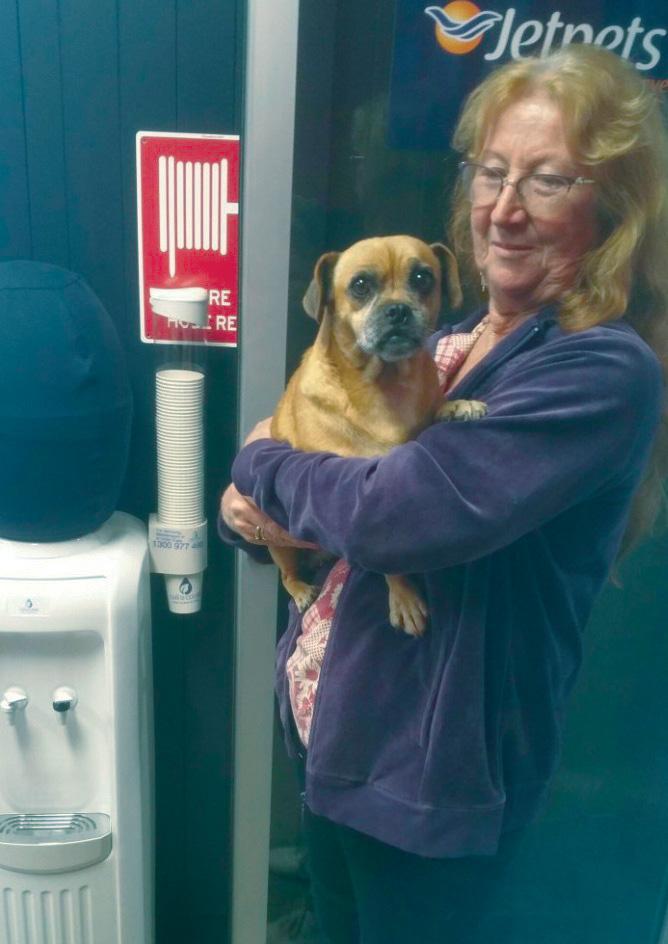



While there are some recommendations that many in the industry agree on such as addressing the space, exercise, and enrichment requirements for breeding dogs, and ensuring the competency standards for people caring for breeding animals, there are a few recommendations that have not been as well received.
Anthony Ramsey, President of the Pet Industry Association of Australia (PIAA), said that without amendments the current proposal would significantly reduce the number of puppies available each year for the pet keeping public to purchase.
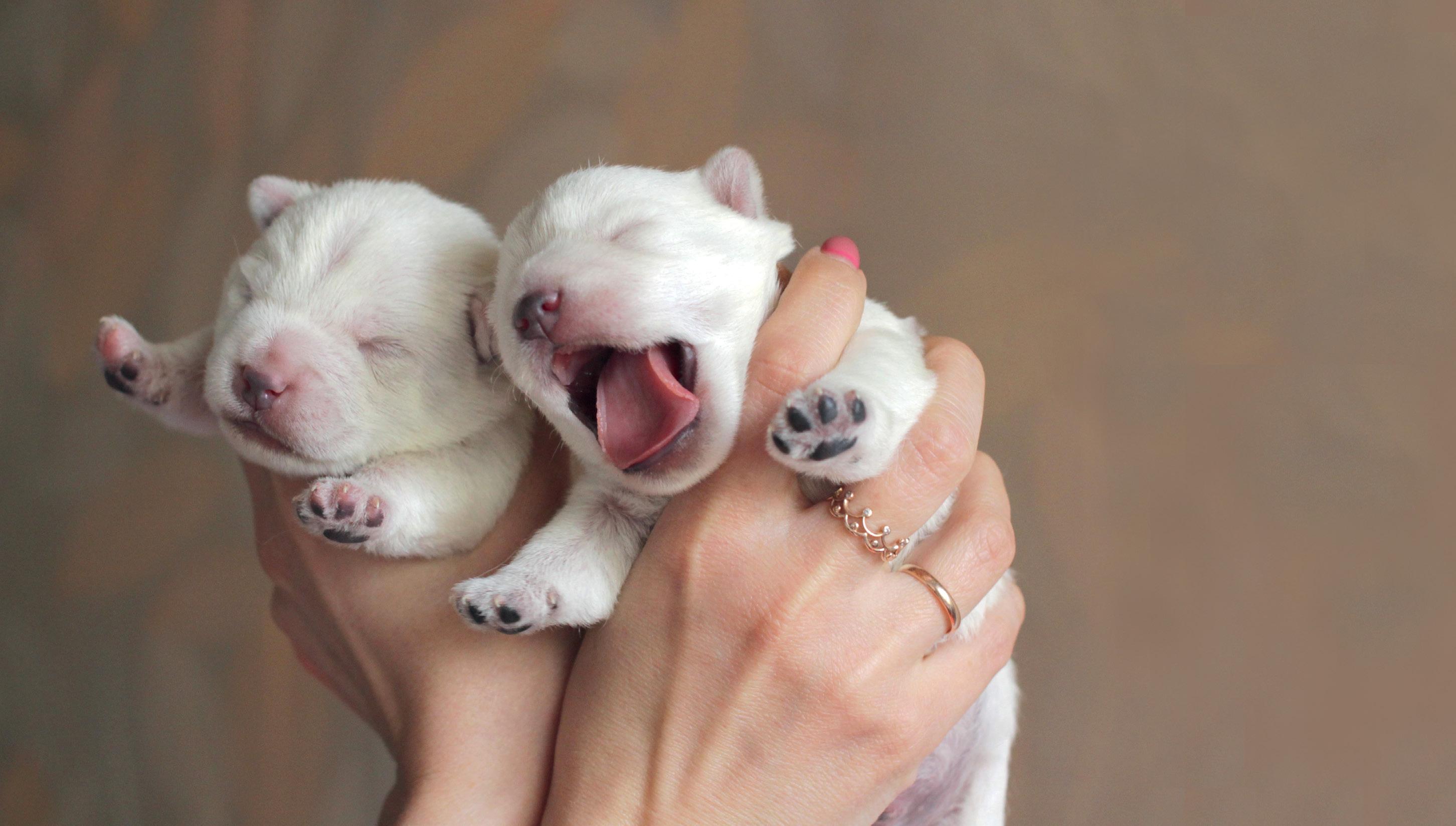
“This would, over time, substantially reduce the size of the dog population in NSW and make purchasing a puppy unaffordable for most families.”
Ramsey said that while it is clear there needs to be some greater regulation to help eliminate dodgy operators, it is important to remember that the proponents of the current legislative proposals have a philosophical objection to the keeping of all domestic animals.
“It’s also critical a common-sense position is arrived at that genuinely achieves the desired outcomes and doesn’t throw the baby out with the bath water by eliminating reputable, ethical breeders from our industry.”
Following the conclusion of the inquiry into the Puppy Farm Bill, we look at the effect the recommendations could have on the industry.
Words Thomas Oakley-NewellJohn Grima, Owner, Kellyville Pets and Rockley Valley Park Anthony Ramsey, President, Pet Industry Dr Imogen Tomlin-Game, Chief Veterinary Officer, RightPaw Narelle Armstrong, Breeder, Happy Canines
While there is no agreed upon legal definition of what a puppy farm is, one of the most recognised is RSPCA Australia’s interpretation: ‘An intensive dog breeding facility that is operated under inadequate conditions that fail to meet the dogs’ behavioural, social and/or physiological needs.’
“Animal welfare breaches can occur with just one or two dogs in the household, as well as in facilities with hundreds of dogs on the property. Of course, where there are more dogs there is more potential for animal welfare breaches, so larger breeding facilities may need to be monitored much more closely than small ones.”
Grima believes that the focus should not be on size, but rather on the quality of a facility and the capability and skills of its staff.
“Smaller operations do not mean safer operations. There is no scientific or animal welfare reason for imposing a limit of 10 breeding dogs at one property, as is being proposed. I’ve seen breeders with less than five dogs who are operating a puppy farm and shouldn’t be breeding dogs.
“We recommend a tiered system based on the size of the breeding business and operation, with a commercial breeding business required to undergo a more stringent, regular audit.”
Ramsey said any arbitrary cap on the maximum number of breeding dogs is not consistent with the outcome they are trying to achieve.
“Bad practices and poor animal welfare outcomes can exist in small operations just as they can in large operations. To set a cap simply targets the commercial viability of larger breeders without any genuine assessment of the welfare and standards of the facility.”
John Grima, Owner of Kellyville Pets and Rockley Valley Park, said he shares the community’s concern about inhumane practices in some animal breeding establishments and calls for better regulation of pet shops as a simple first step to eradicating rogue operators, but disagrees with the ban on pet shops selling puppies.
“Banning pet shops from selling puppies will eradicate the most transparent system within the industry. We believe pet shops should work under a higher Code of Practice and an accreditation scheme. Under such a system, pet shops and the breeders that supply puppies to shops would be regularly audited by authorities such as RSPCA AWL.
“It is outrageous to suggest that pet shops should only sell rescue dogs. It is worth noting that most rescue dogs are adult bully breeds and large cross/working dog breeds. Surely a welfare issue exists having a large adult dog in a pen with an unknown behavioural background in a busy retail shop?”
Grima said that if these recommendations are enacted, the sale of puppies will be driven underground, the price of dogs will increase, and good operators within the industry will be unfairly penalised.
Among the recommendations is that there should be a cap placed on the number of female breeding animals at a facility, and a proposal that breeding businesses have one staff member at the premise for every five animals.
Dr Imogen Tomlin-Game, Chief Veterinary Officer at RightPaw, said RightPaw does not believe there is a ‘correct number’ of breeding dogs that a breeder can care for effectively; that each set up is different and should be treated individually.


Ramsey also believes the staff to dog ratio would be unworkable and would seek to apply a greater ratio of staff to dogs in breeding facilities than exists in aged care homes and early childhood education centres.
Narelle Armstrong, from breeding facility Happy Canines, said that the cap on the number of breeding dogs would be a disaster, and that the ratio suggestion is completely ridiculous and an insult to nurses.
“I agree with the Department of Primary Industries (DPI) proposal of one staff member to 20 dogs. I was a registered nurse for 30 years before I went into breeding dogs, the last 17 years I worked in rural remote nursing and our staff ratio was one nurse to nine patients, plus as the only registered nurse on duty I had to cover accident and emergency. So how can anybody put forward that there should be a one to five ratio for dogs?” n
“Among the recommendations is that there should be a cap placed on the number of female breeding animals at a facility, and a proposal that breeding businesses have one staff member at the premise for every five animals.”
IndePet aims to help grow the independent pet retail channel.
While pet retail is a great industry to be in, it can be challenging at times, and is evolving faster than ever.
As an independent it can feel like you’re out there doing it all on your own, wondering if you’re really getting the best deals, as more and more competition crops up in your area, this is where IndePet steps in.
As a group that is 100 per cent owned by independent pet store owners, IndePet understands your business, because they’ve lived it, so they can really help your business thrive. IndePet knows we’re all stronger together.
Over the past year, IndePet has seen six new shareholders join and a total of eight new stores added to the group. Amongst them was one of Australia’s most recognisable independent pet stores – Kellyville Pets.
Kellyville Pets started in 1983 when founder John Grima began selling pets on the weekend while still at school and has since grown into one of the largest and most unique pet stores in Australia, employing more than 40 specialist staff.
Grima said he was motivated to join IndePet as he believes in the value of the independent pet channel and saw that the IndePet group and management team were committed to ensuring the longevity and prosperity of independent pet stores.
Todd Clarkson, CEO of IndePet, said that the group wants to champion the local independent pet stores and advocate for the entire independent pet channel.
“We will achieve this through continuing to provide more
support and resources for our existing members to help them grow sales and lower costs. We’ll also be building our existing supplier network by supporting our current supplier partners and helping new suppliers connect with our members.”
In addition to the support IndePet provides retailers, it also hosts events allowing its members to network and expand their breadth of knowledge.
Over the past year, IndePet held their annual conference at Sea World Resort in May, which featured multiple speakers from across the industry, a trade show, fun events, and multiple opportunities to network and mingle.

Clarkson said the 2022 conference was a huge success.
“One of our key goals is to build the network amongst our shareholders and let them share knowledge and engage with their peers. These types of events have been missing for a few years now.”
Through being a part of IndePet, businesses can boost their margins and buying power, streamline their operations and reduce admin, optimise their advertising with latest digital marketing tactics, access retail, sales, and marketing experts, future-proof their business, and join a network of like-minded business owners.
Join the IndePet group to improve your pet retail business, while remaining 100 per cent independent and autonomous. To find out how IndePet can help you, please contact Tia Wishart, Business Development Manager on t: 0415 962 296 e: twishart@indepet.com.au.
“One of our key goals is to build the network amongst our shareholders and let them share knowledge and engage with their peers.”
– Todd Clarkson, CEO, IndePet
twishart@indepet.com.au

www.indepet.com.au
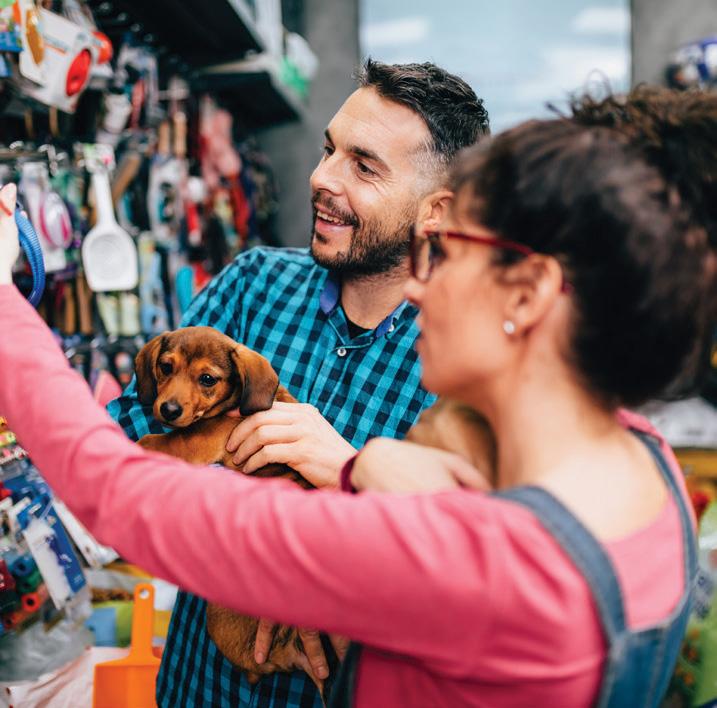
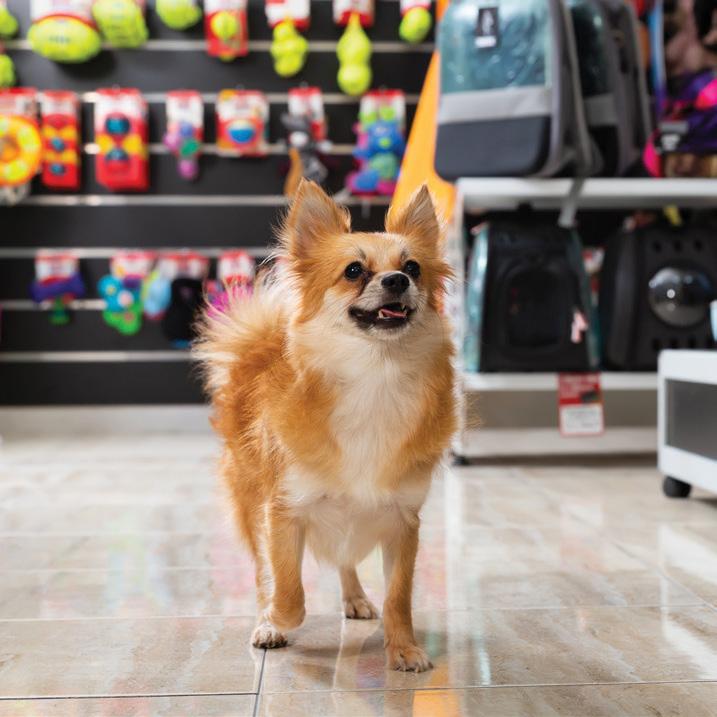

Unregulated animal-based pet foods that are mailed into Australia are set to be destroyed in an update to Australia’s Biosecurity Act.
A risk analysis conducted by the Biosecurity Animal Division concluded that unregulated animal-based pet food sent by mail present a biosecurity risk beyond Australia’s Appropriate Level of Protection (ALOP).
Dr Chris Locke, Deputy Secretary of Biosecurity and compliance, said the new measures were to control the risk of diseases.
“Animal-based pet food often contains high-risk ingredients such as beef, pork, lamb, chicken and fish. If pet foods aren’t up to par, they can be a disease risk to not only our pets but livestock as well.
“Pet food can contain disease pathogens, like foot and mouth disease, lumpy skin disease, African swine fever, and avian influenza, which can all infect livestock.”
Dr Bronwyn Orr, President of The Australian Veterinary Association (AVA), said it was excellent to see the new measure put in place to control the risk of disease.
“Most people would be surprised to know that there are no mandatory quality standards for pet food in Australia. There are no safeguards to ensure pet food is balanced, nutritious or even safe for pets.

“The AVA believes that all pets in Australia should have access to safe, high-quality food, and if a problem arises, there should be a prompt and regulated recall and investigation.”
Locke said that studies have found that pet food is sometimes not even just fed to pets, with instances of livestock, like pigs and chickens, and wildlife consuming the product.
“If you’re an importer and want to bring animal-based pet food into Australia, you will need to make sure you are meeting Australia’s biosecurity conditions, otherwise you could see your product destroyed.”
The importer of the product will be provided with a notice informing them their goods will be destroyed with no option of re-export unless import conditions are met.
The Tasmanian Government has moved to ban prong collars as part of its Animal Welfare Amendment Bill 2022.
The amendments in the bill include banning the use of prong collars, expanding authorised officer powers of entry, further clarifying animal research arrangements, and providing additional sentencing options for animal cruelty and aggravated cruelty among other proposed changes.
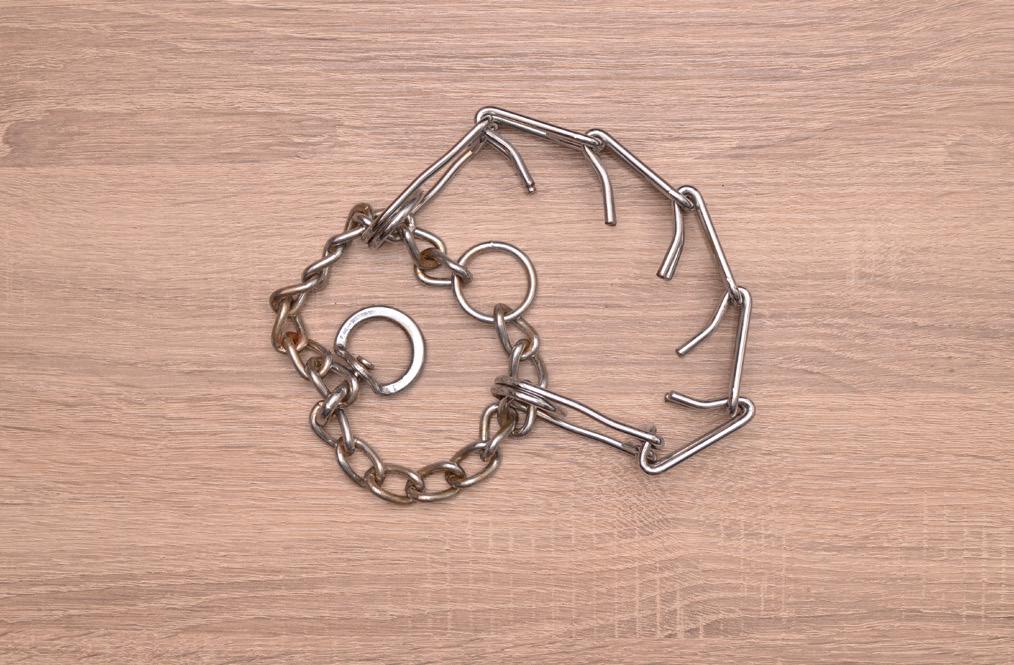
Dr Rhianna Booth, Australian Veterinary Association (AVA) Tasmanian Division President, said the use of prong collars does considerable harm to dogs and their use is completely unnecessary.
“Modern animal welfare science gives us better training techniques to use with our pets. These techniques are effective and support the wellbeing of our pets rather than harming them.”
It is illegal to import prong collars into Australia and they are banned in Victoria, but the AVA would like to see their use banned nationwide.
“The Tasmanian Parliament needs to prioritise the wellbeing of our pets and support these moves to end the use of these collars.”

Pebbles, a toy fox terrier who was the Guinness World Record holder for world’s oldest living dog, has passed away of natural causes at 22.
Born on 28 March 2000 on Long Island, New York, in 2007 Pebbles moved with her owners Julie and Bobby Gregory to Taylors, South Carolina, where she lived out the remainder of her life, before passing away just five months shy of her 23rd birthday.
“Pebbles was not just another dog, she had her own way about her, and her own personality. She was a once in a lifetime companion and it was our honour to have had the blessing to have had her as a pet and family member,” said the Gregory’s.
Pebbles, who enjoyed listening to country music and trying new foods, will be reunited with her partner dog Rocky, who passed away in 2016.
The Gregorys told Guinness World Records that they had originally intended on adopting a large breed dog but were taken by 1.8kg Pebbles’ larger-than-life personality.
“She loves listening to country music while she is sleeping. Her two favourite country singers are Conway Twitty and Dwight Yokum.”
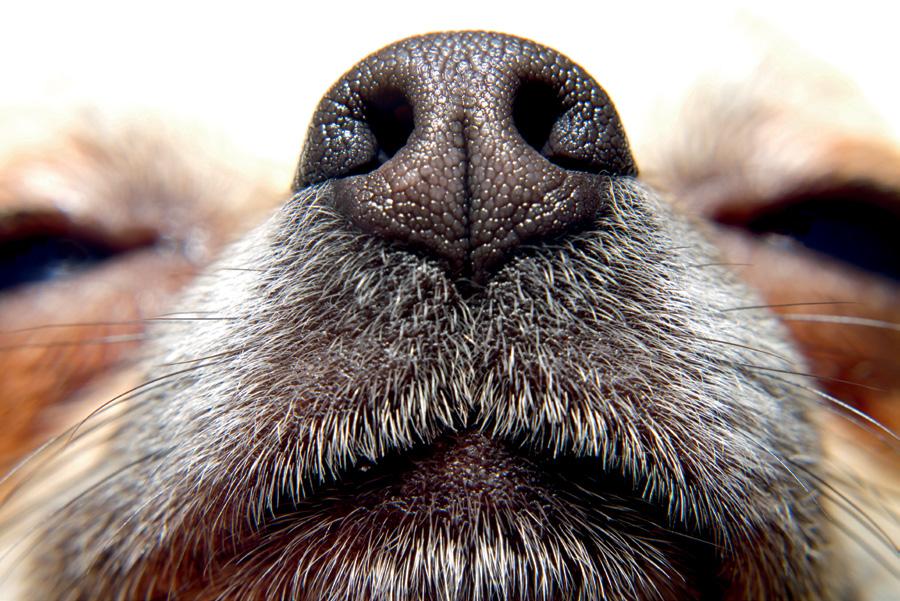
Dogs can smell stress from their human’s sweat and breath, a study by Queen’s University Belfast has found.
The study involved four dogs from Belfast and 36 people. The human participants had their sweat and breath collected before and after they did a difficult maths problem.
The dogs were then taught how to search a scent and alert researchers to the correct sample, and in every test session each dog was able to correctly identify each person’s stress sample.
Clara Wilson, a PhD student in the School of Psychology at Queen’s, said the findings show that we, as humans, produce different smells through our sweat and breath when we are stressed and dogs can tell this apart from our smell when relaxed, even if it is someone they do not know.
“The research highlights that dogs do not need visual or audio cues to pick up on human stress. This is the first study of its kind, and it provides evidence that dogs can smell stress from breath and sweat alone, which could be useful when training service dogs and therapy dogs.”
Australian university scientists are partnering with veterinary pharmaceutical company Neoculi to develop a new drug to treat Giardia.
Giardia is a common intestinal infection that affects 15 per cent of dogs and approximately 12 per cent of cats.
Professor Sanjay Garg, pharmaceutical scientist from the University of South Australia, said that existing treatments on the market have significant drawbacks, toxic side effects, and limited effectiveness due to parasitic resistance requiring multiple treatments.
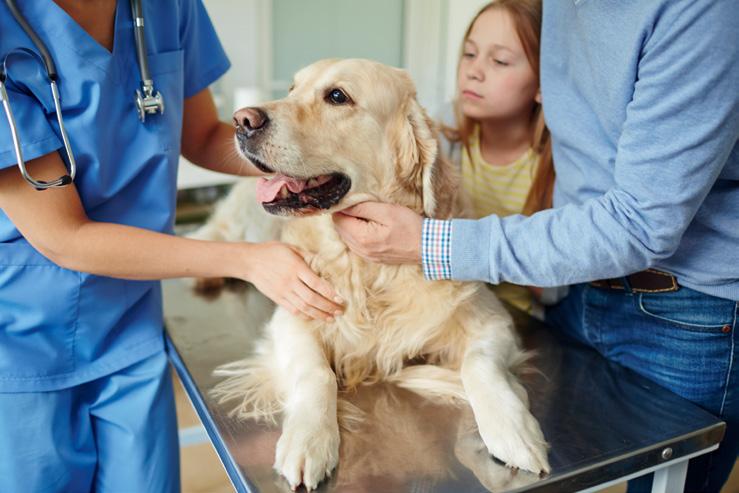
“The drug we are developing is safe and effective in one single dose. We are aiming to produce a palatable formulation that pets will take without any resistance. It should be available within three years.”
The $282,339 project is being funded by the Federal Government’s ARC Linkage Grant program.
“It costs each household around $1627 per dog each year and $962 per cat, so anything we can do to make veterinary drugs more cost effective is a win-win for animals and owners alike.”
The Petspiration Foundation has announced a three-year partnership with Assistance Dogs Australia (ADA) that will see $195,000 donated over that period.
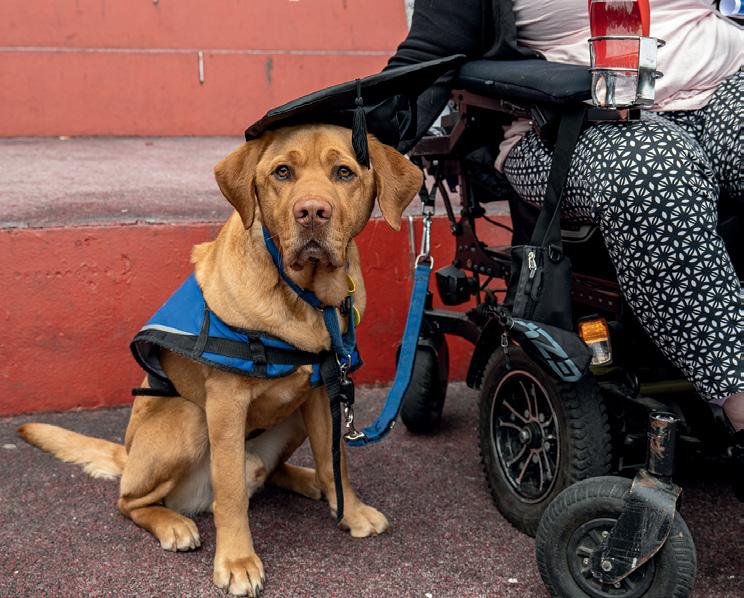
The donation includes $30,000 towards the development of ADA’s upcoming Sensory Garden and $105,000 towards funding all placement packs throughout the partnership.
Tara Cheesman, National Major Relationships Manager at ADA, said The Foundation has been a respected partner for many years and they are excited to continue into a longer-term agreement.
“We’ll be able to provide many more Australians with the essential support and day-to-day guidance they need to be part of their respective communities thanks to the long-term support of The Foundation.
“The new Sensory Garden will help improve the training of our dogs, and the placement of newly graduated dogs with clients will not only provide us with financial aid, but also help us open countless more doors for them as individuals.”
Also throughout October, The Foundation will support ADA’s Dogtober campaign which encourages the community to organise fundraising events to help ADA continue to train highly intelligent, specially bred dogs to help people living with disabilities across Australia.
Sherralea Cassidy, Charity and Events Lead at The Petspiration Foundation, said the partnership will go a long way in helping ADA raise and place trained dogs with clients.
“We are proud to be able to support like-minded organisations like ADA who are committed to empowering a better future for both pets and people.
“Since first partnering with ADA in 2017, we’ve witnessed first-hand the positive impact that their work has on the lives of pets and people across the country.
“Providing Australians with better access to emotional and physical support through pets is extremely powerful, so we’re so excited to join ADA in October – and over the next three years – to help provide even more Australians with the support that they need.”


We are an innovative manufacturer of natural pet treats located in the Hawkesbury Valley NSW. We source our raw materials from Australia and New Zealand, supporting our local farmers. www.barkandbeyond.com.au

